
Istanbul (Istanbul, formerly known as Byzantium, and then Constantinople) is not only the largest, multifaceted and multifaceted city of Turkey, located on two continents (Europe and Asia), but also a city full of attractions, museums, bazaars, mosques, hammams, parks, palaces and other interesting places, some of which which have remained since the time of the sultans.
This article describes routes around Istanbul that will reveal the city from all sides, as well as see and visit both the most famous and little-known sights, museums and places of Istanbul.
The article is good because it lists not the route plans by day, but the places and objects of Istanbul, which are convenient to visit one after another, since the objects listed in the paragraphs of the article are located near each other. Thus, you can choose objects from the list yourself and cost routes that are suitable for your preferences and tastes.
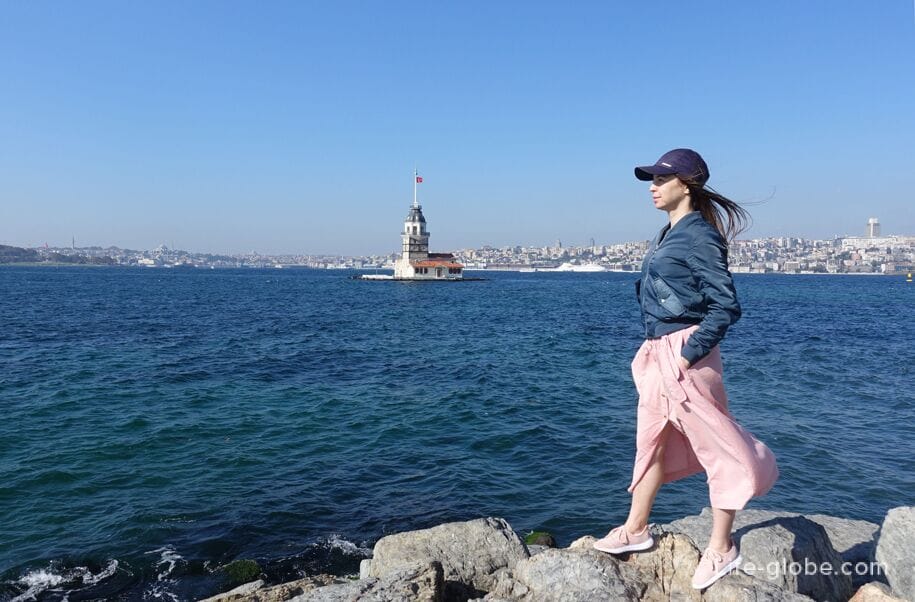
You can see and visit the sights, museums, mosques, parks, observation decks and other objects of Istanbul, as well as travel outside the city on your own or with excursions, both individual and group.
All tours to and from Istanbul
Sultanahmet is the historical district of Istanbul, which is the most popular place in the city, where the main attractions are concentrated, representing a magnificent ensemble.
The center of the district is the Sultanahmet Square of the same name (Sultanahmet Meydanı), which is the heart of the city and is located on the site of an ancient Hippodrome, the construction of which was started in the time of Byzantium. Chariot races were held at the hippodrome. Therefore, the square has a second name "Hippodrome Square" (At Meydanı). Today the square is a walking area with historical columns and a German fountain (Alman Çeşmesi) in the neo-Byzantine style, created in Germany in 1898 and donated by the German Kaiser Wilhelm II, who visited Istanbul.


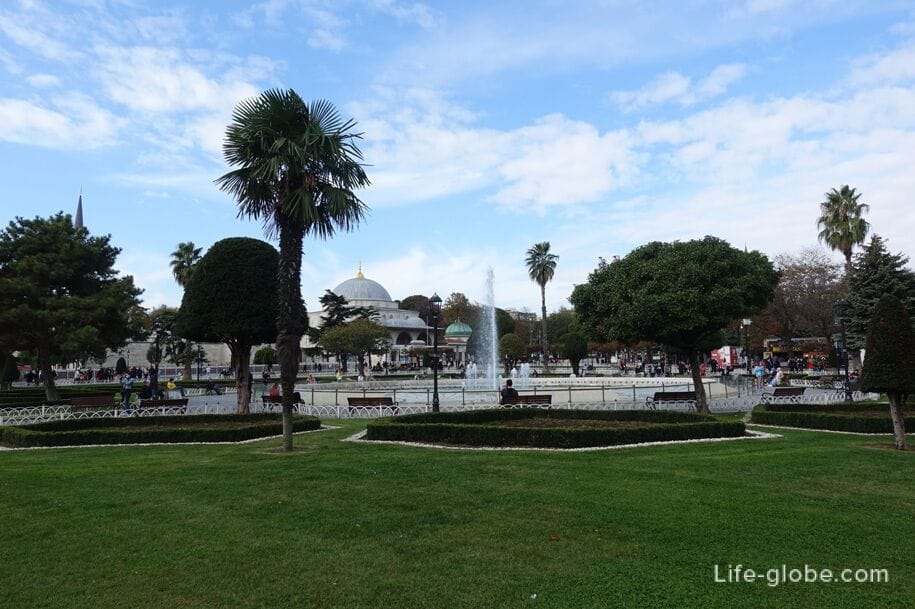
The Sultanahmet district and the surrounding area are home to the main attractions of Istanbul such as:
- Topkapi Palace (Topkapı Sarayı), which for 400 years served as the main residence of the sultans of the Ottoman Empire, as well as the administrative and educational center of the state.
Today Topkapi Palace is a museum, a magnificent architectural monument of the 15th-19th centuries and is a complex surrounded by high walls. The Topkaps include: courtyards and the palace complex itself with an administrative part and a harem, as well as other buildings and panoramic terraces. Also in the complex is the Church of St. Irene;
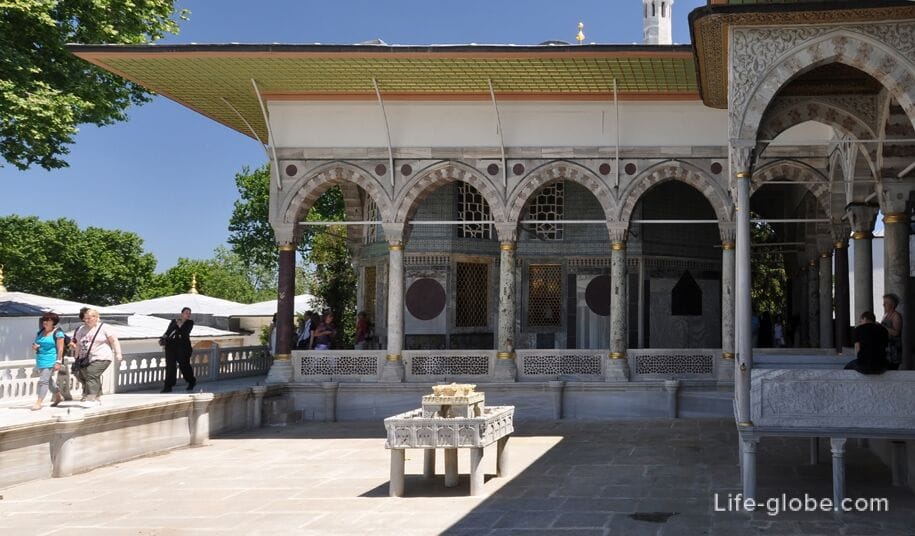
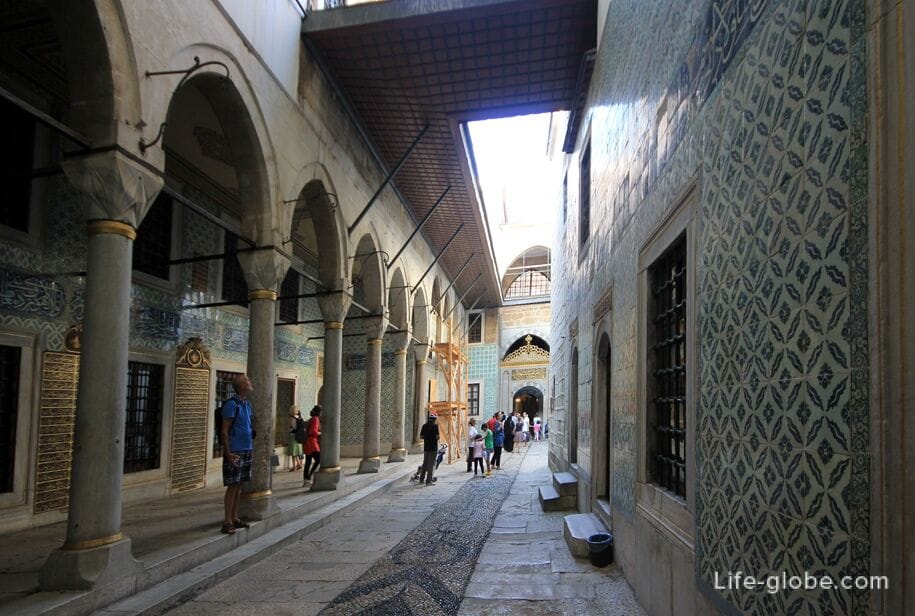
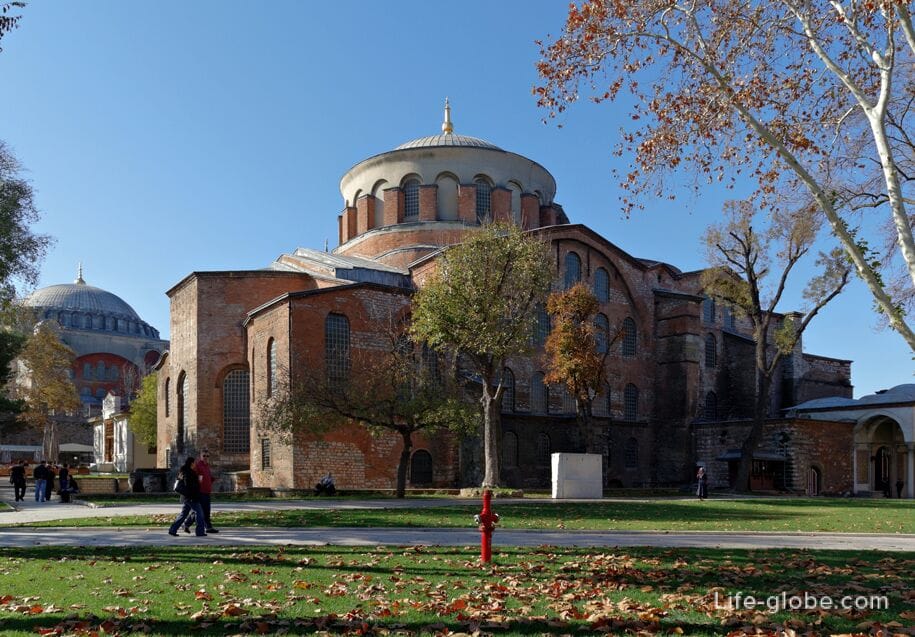
- near the walls of the Topkapi Palace there is a large Gulhane Park, which was the former outer park of the Topkapi Palace.
Today it is a public park with places for walking and recreation, cafes, fountains, monuments, historical sites and museums, including a Roman Gothic column (Gotlar Sütunu), a Welcome pavilion (Alay, Alay Köşkü),The Archaeological Museum of Istanbul (Istanbul Arkeoloji Müzesi) with the Museum of the Ancient East (Eski Şark Eserleri Müzesi) and the elegant tiled pavilion of 1472 (Çinili Köşk Müzesi / Chinili Keshk), as well as the Museum of the History of Science and Technology in Islam (Istanbul Islam Bilim ve Teknoloji Tarihi Müzesi);


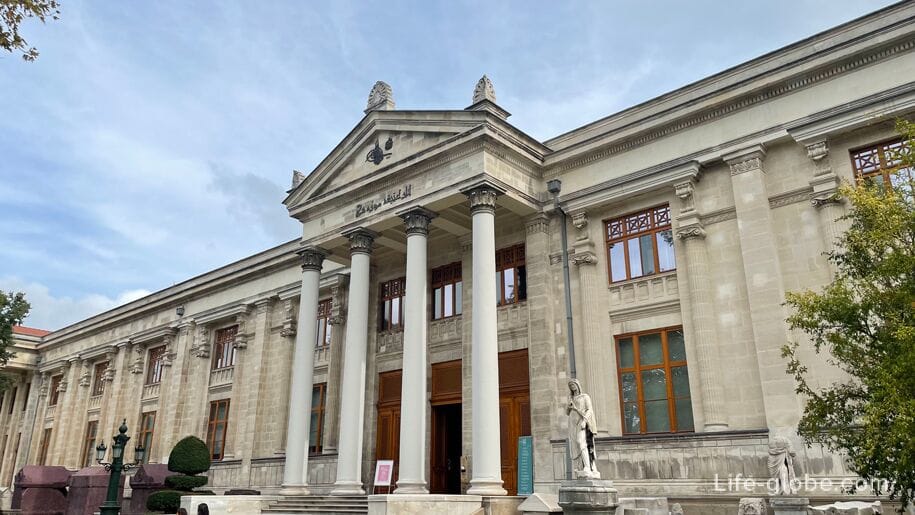
- The fountain of Ahmed III (III Ahmet Çeşmesi) is a large historical fountain located in a pavilion in the style of Ottoman rococo and looks like a richly decorated casket;
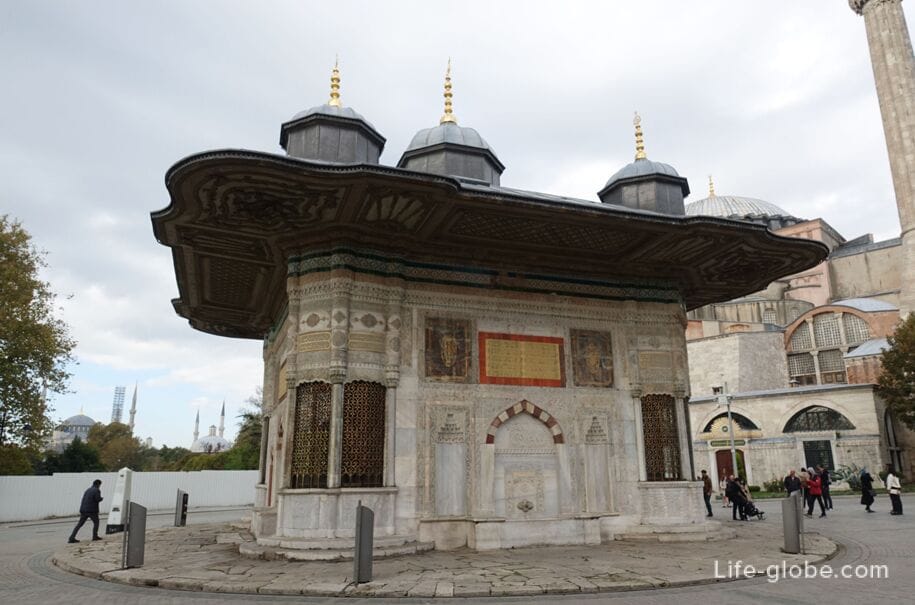
The mosque is one of the greatest world-famous monuments and examples of Byzantine culture, as well as a symbol of the "golden age" of Byzantium;
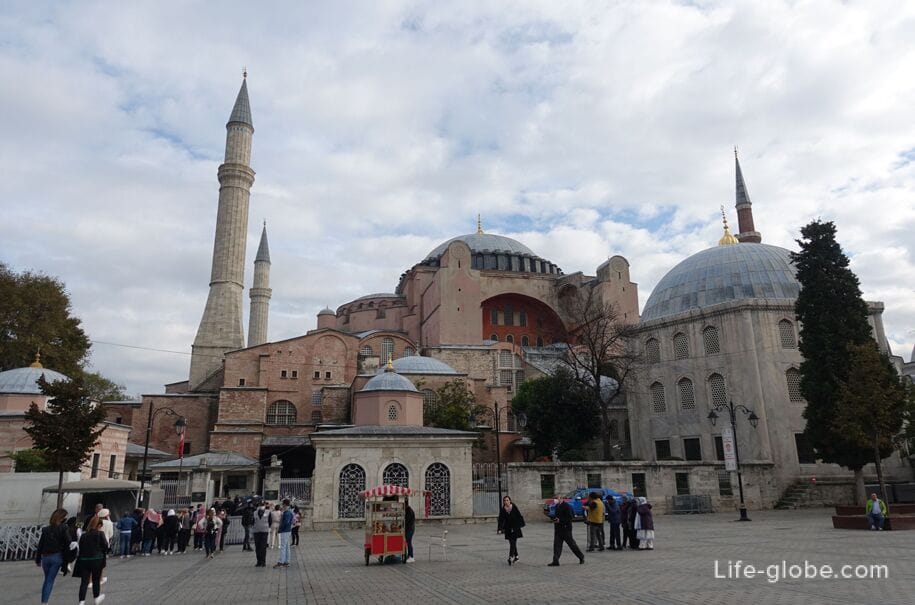

- Hammam Hürrem Sultan (Hürrem Sultan Hamamı) - historical Turkish baths built in the 16th century for the beloved and legendary wife of Suleiman the Magnificent - Roksolana. Anyone can visit the hamam today;
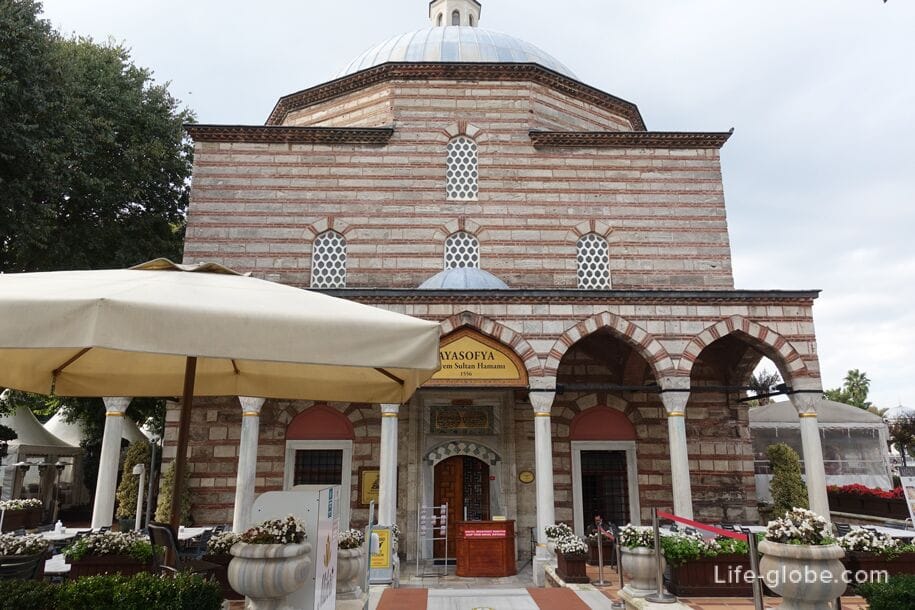
- The Blue Mosque or Sultanahmet Mosque (Sultanahmet Camii / Sultan Ahmet Camii) is a historical imperial mosque, which is the first mosque in Istanbul, and is also considered an outstanding example of Islamic and world architecture;
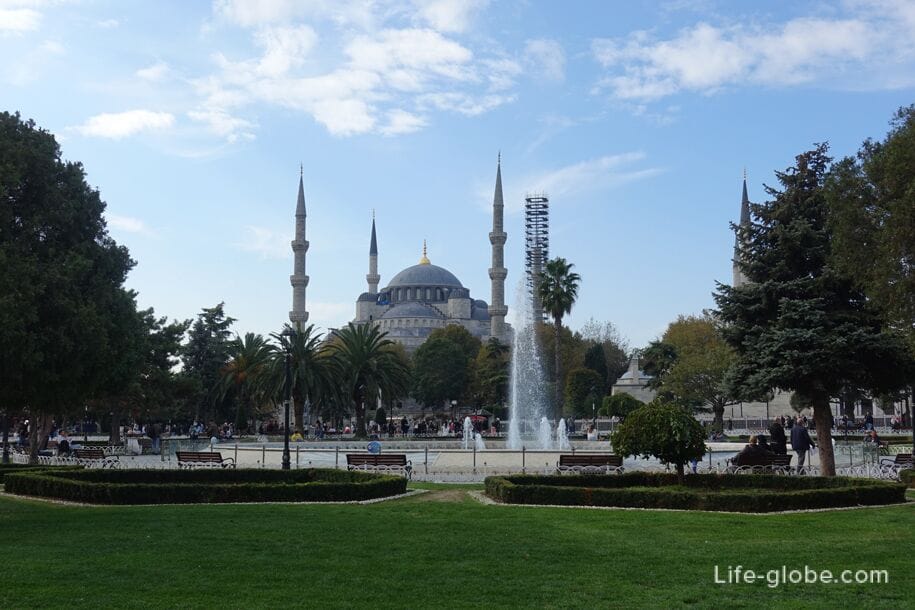
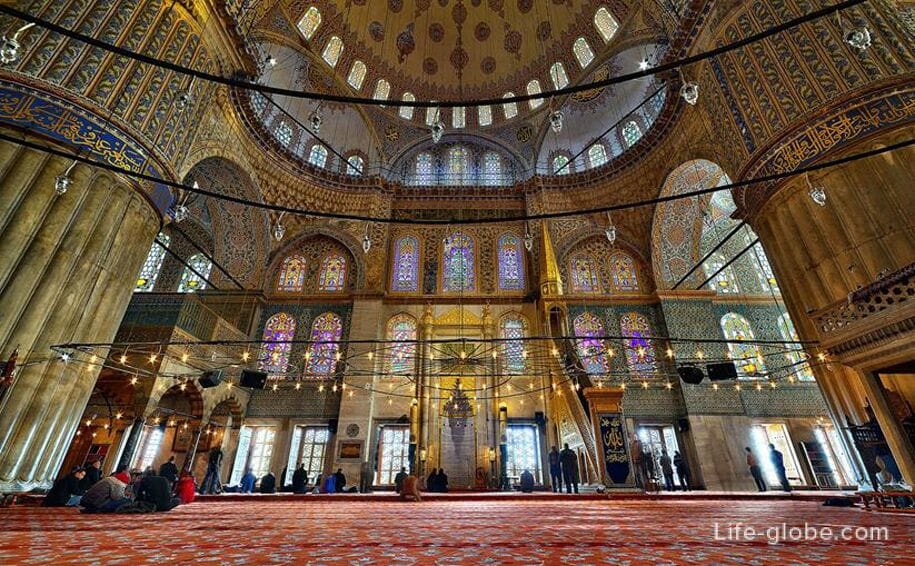
- Mausoleum of Ahmed I (Sultan Ahmet Türbesi) - the tomb where Sultan Ahmed I, his wife and children, as well as other representatives of the Ottoman dynasty rest. The mausoleum is located near the Blue Mosque;
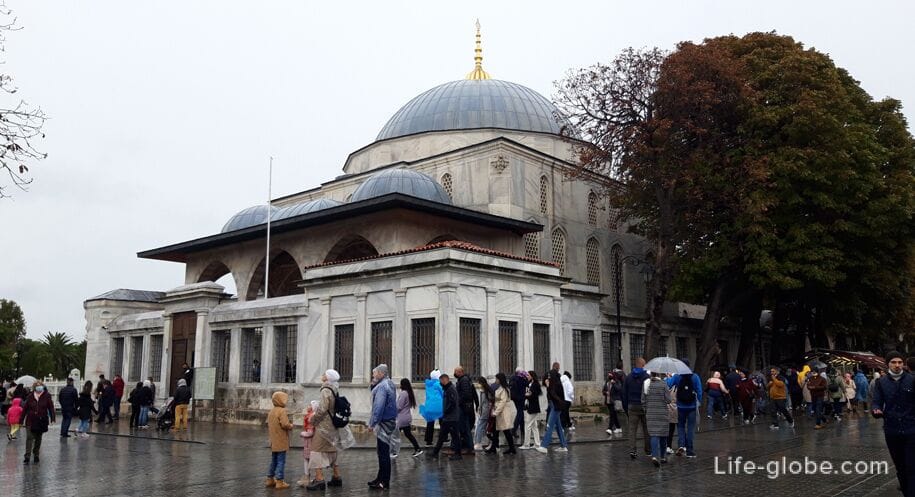
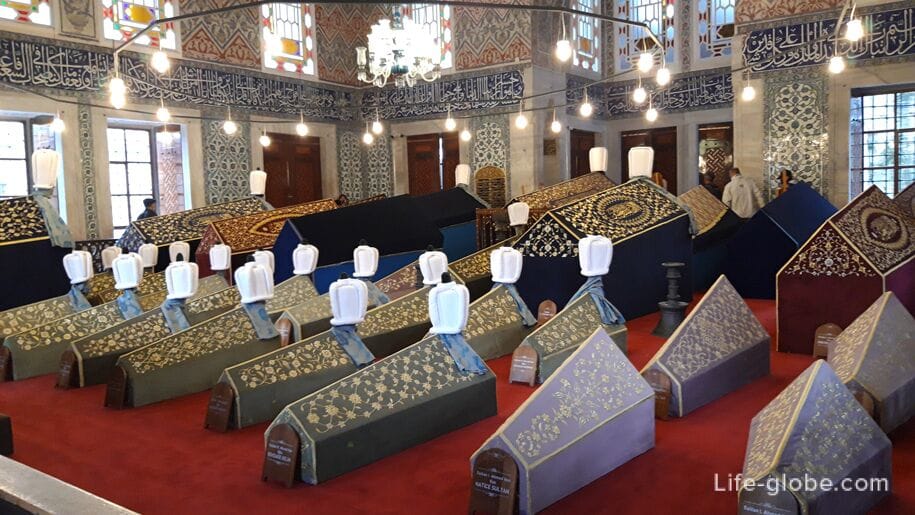
- Arasta Bazaar (Arasta Çarşısı), which is located near the walls of the Blue Mosque and is one of the oldest markets in Istanbul, which appeared in the 17th century and now represents one small shopping street.
On both sides of the street there are cozy small shops selling things, spices, pottery, souvenirs, hookahs, sweets, etc.;
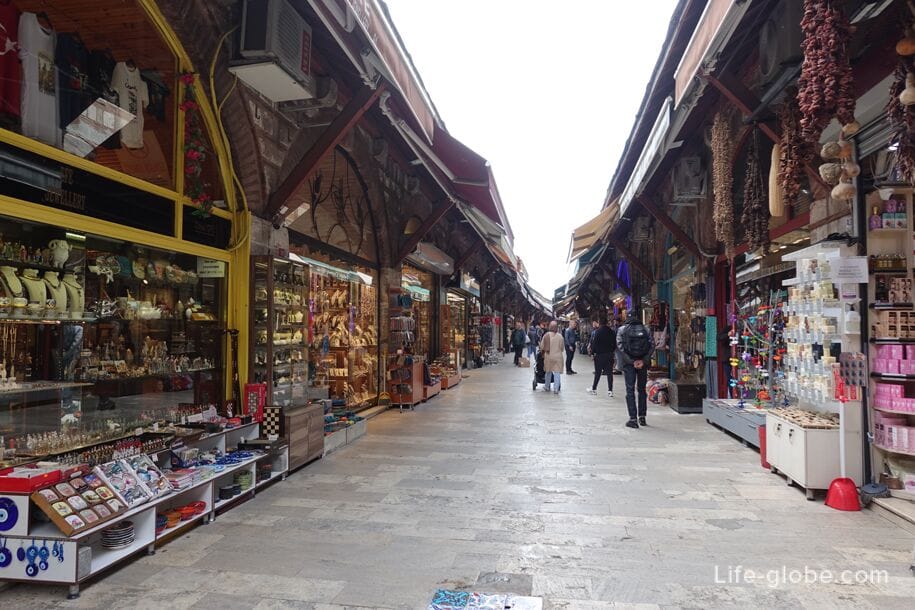
- The Museum of mosaics of the Grand Palace (Büyük Saray Mozaikleri Müzesi), which contains mosaics from the time of the Byzantine Empire, discovered on the site of the Grand Imperial Palace of Constantinople.
Entrance to the museum from the Arast Bazaar;
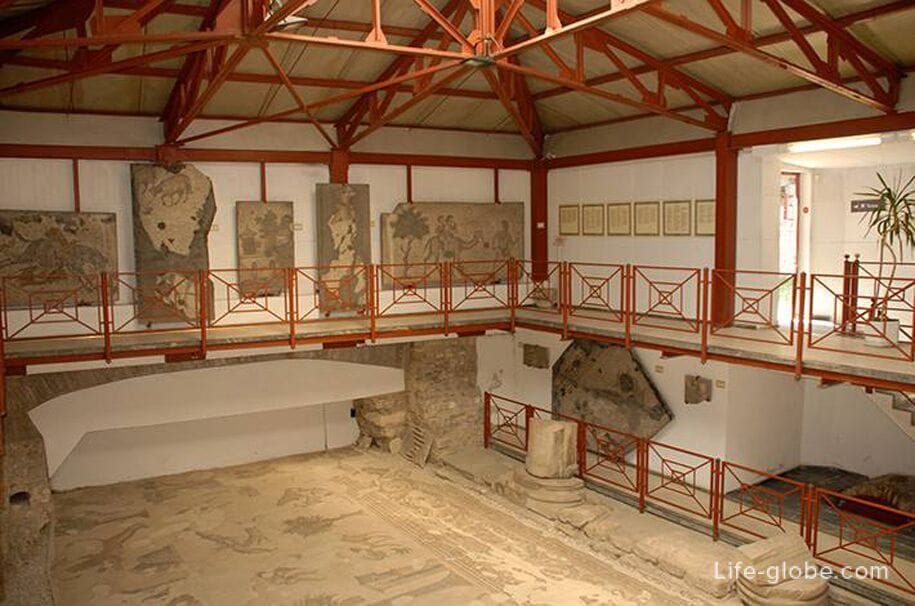
- Ibrahim Pasha Palace (Ibrahim Paşa Sarayı) is a monument of Ottoman architecture of the 16th century and the former residence of the Grand Vizier of the Ottoman Empire Pargal Ibrahim Pasha.
Today the palace houses the Museum of Turkish and Islamic Art (Türk ve Islam Eserleri Müzesi) with collections of ceramics, sculpture, glass, wood, stone, metal, miniatures, masterpieces of calligraphy, historical documents, carpets with rare specimens, jewelry;
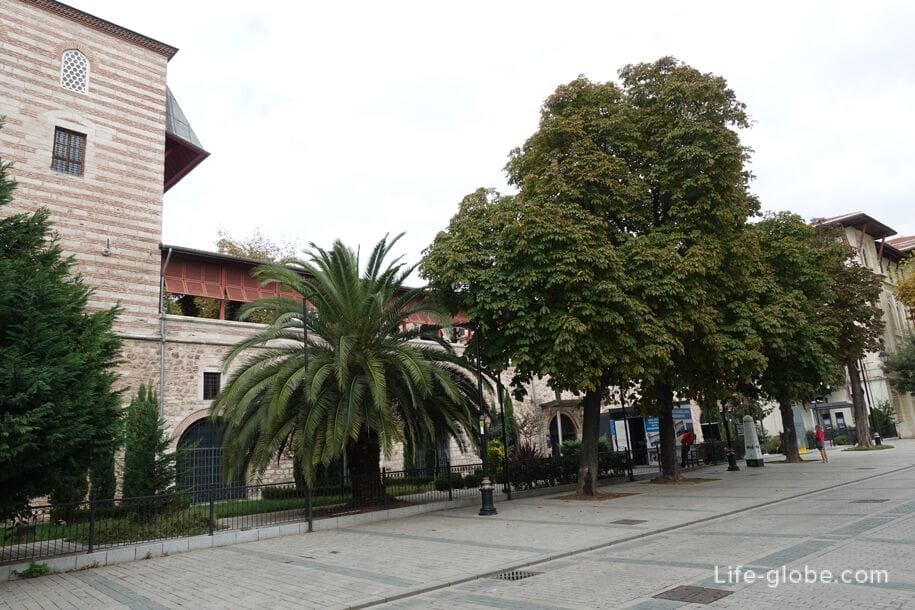

- The Basilica cistern or Yerebatan cistern (Yerebatan Sarnıcı) is one of the most famous, large and well-preserved underground reservoirs of Constantinople. Today it is a museum;
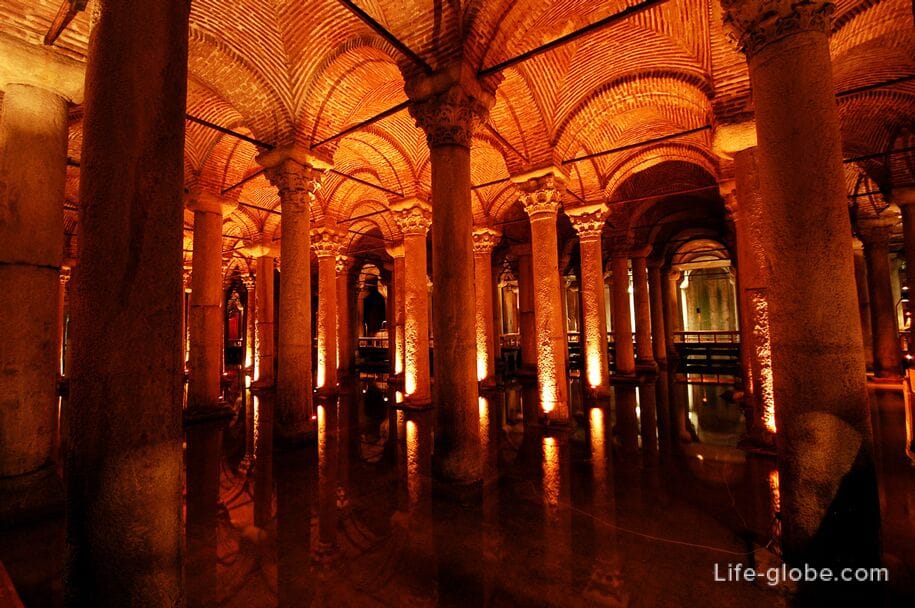
- Feodosiya cistern or Sherefiye cistern (Şerefiye Sarnıcı), which is one of the largest and most significant closed cisterns of the city. The cistern has been restored and functions as a museum, where visitors are shown a 10-minute show with three-dimensional effects and music. Learn more about Sultanahmet Square and its surroundings...
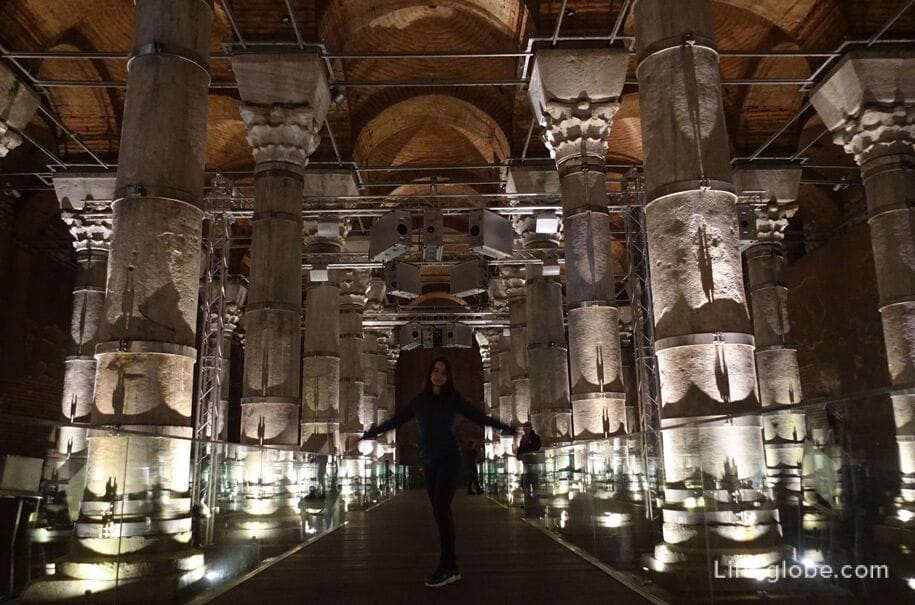
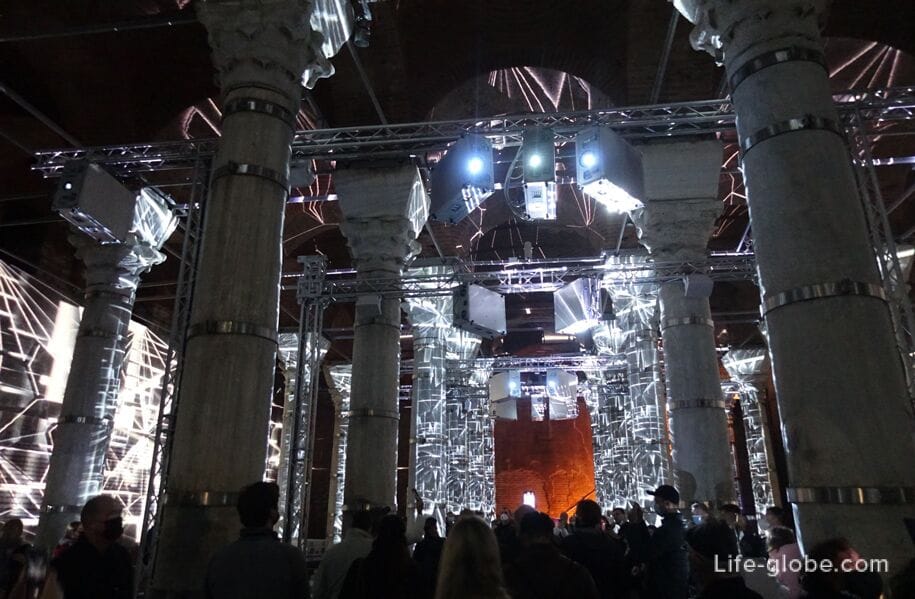
Sultanahmet is part of the large Fatih district, which, in turn, is the most visited and famous in the city, since it is located on the site of the old Constantinople (now the city of Istanbul), once enclosed inside the former city walls.
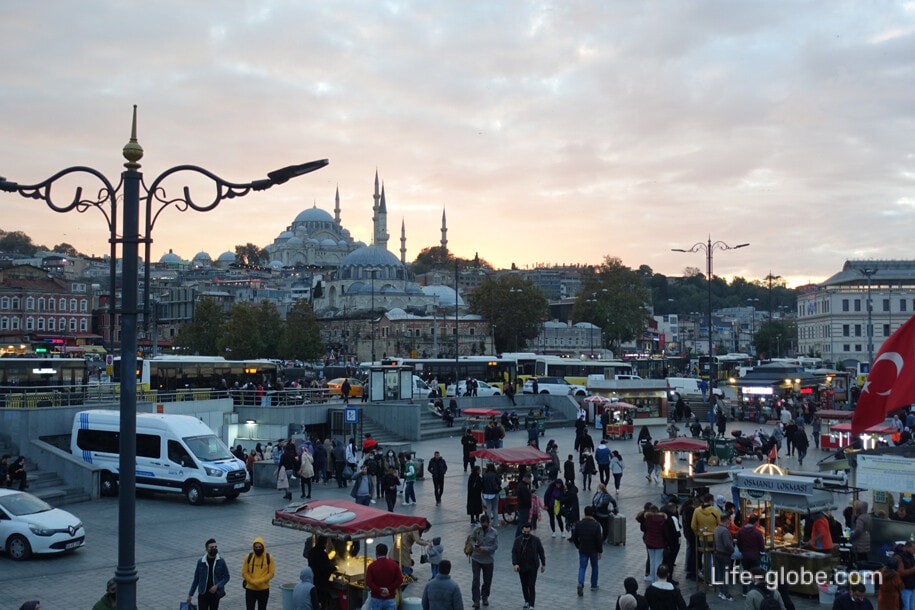
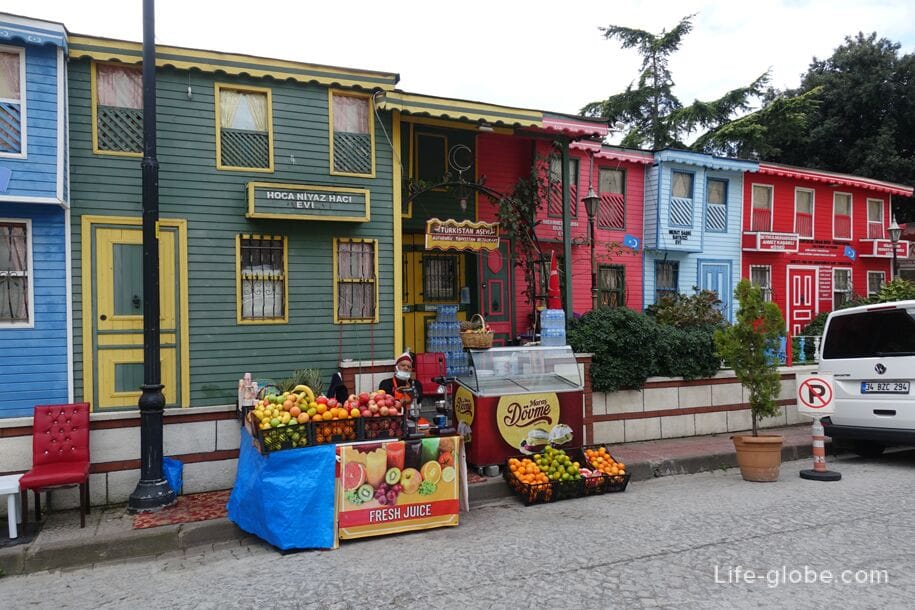
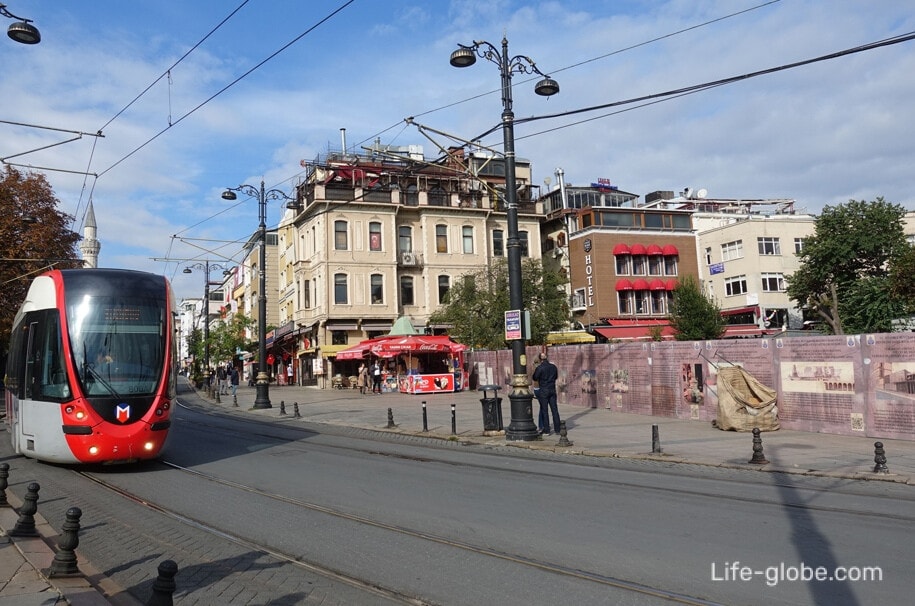
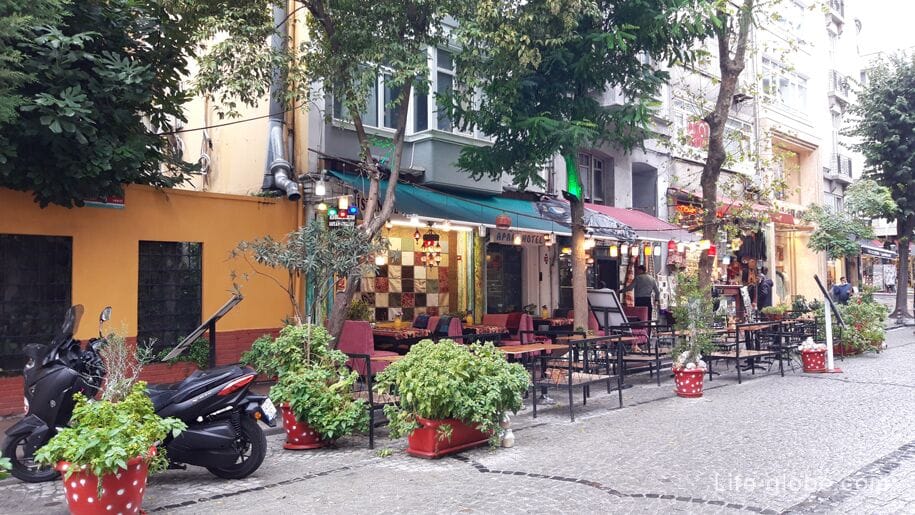
In the Fatih area (in addition to Sultanahmet and the surrounding area), notable:
- the fortress of Yedikule or Yedikule (Yedikule Hisari) with the Golden Gate of Constantinople, whose history dates back to 1458.
Today, the Yedikule Fortress is a museum of the Yedikule dungeon (Yedikule Hisarı Müzesi);
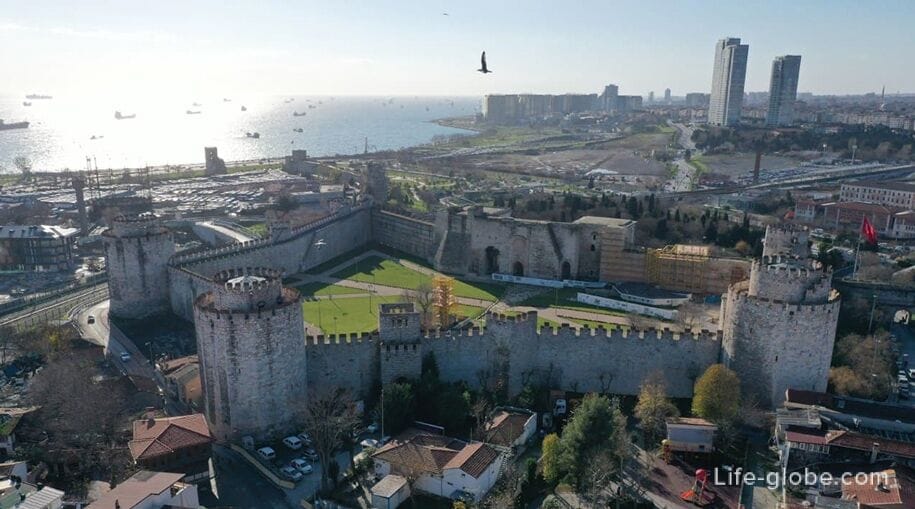
- Grand Bazaar or Grand Bazaar (Kapalıçarşı / Kapalıçarshi) is a historical bazaar, which is one of the oldest and largest markets in the world, as well as a symbol of Istanbul;
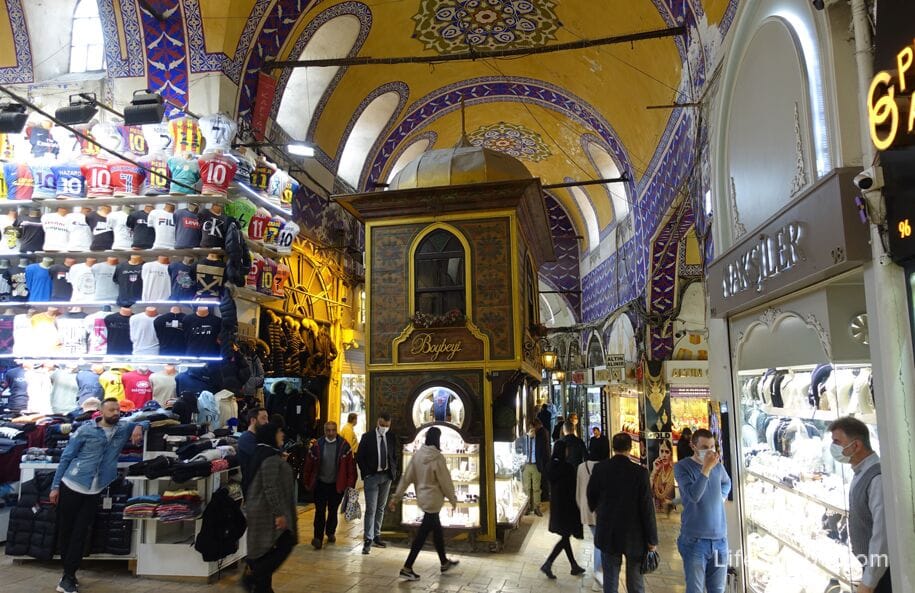
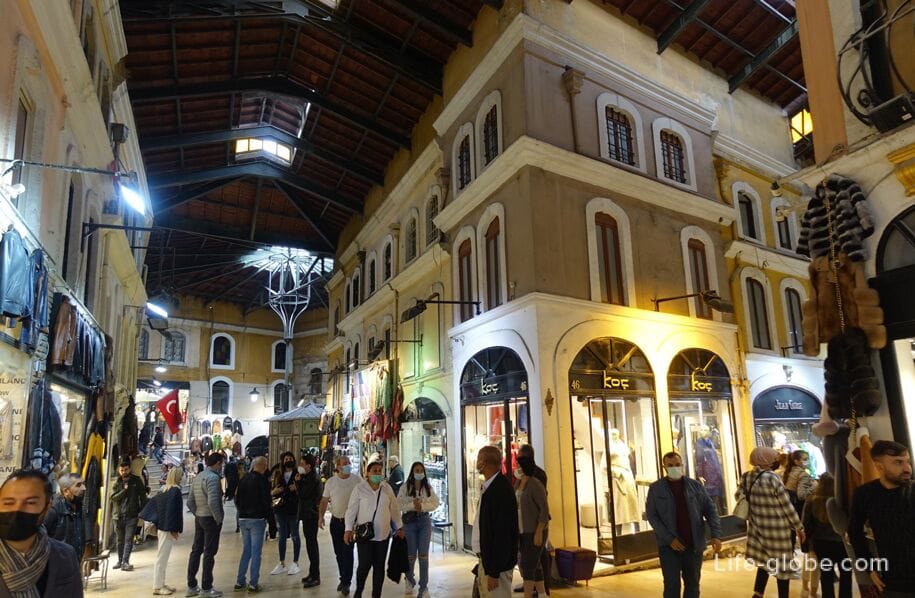

- Egyptian Bazaar or Spice Bazaar (Mısır Çarşısı / Mysır Charshısı), which is also the historical bazaar of Istanbul, where trade is carried out mainly in sweets, spices, dried fruits and tea;

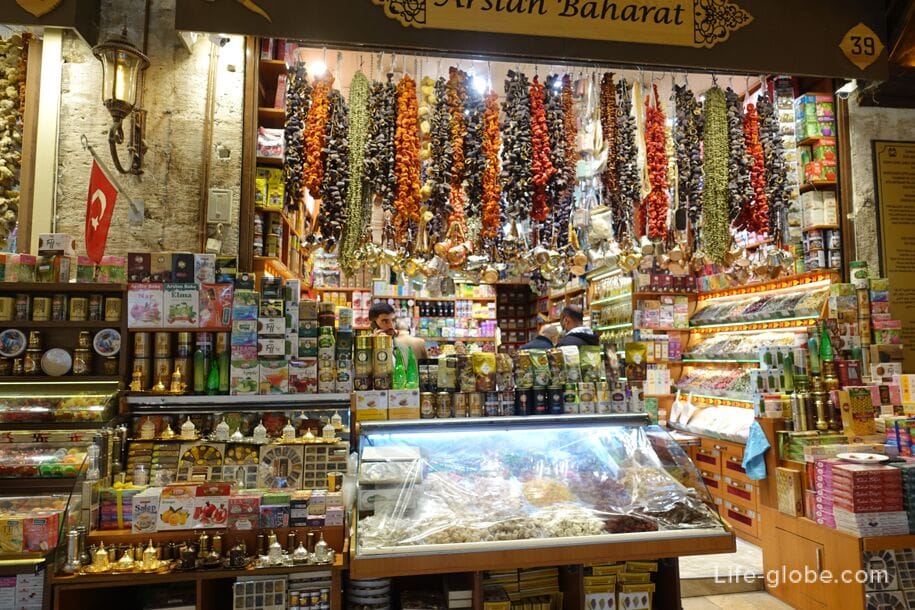
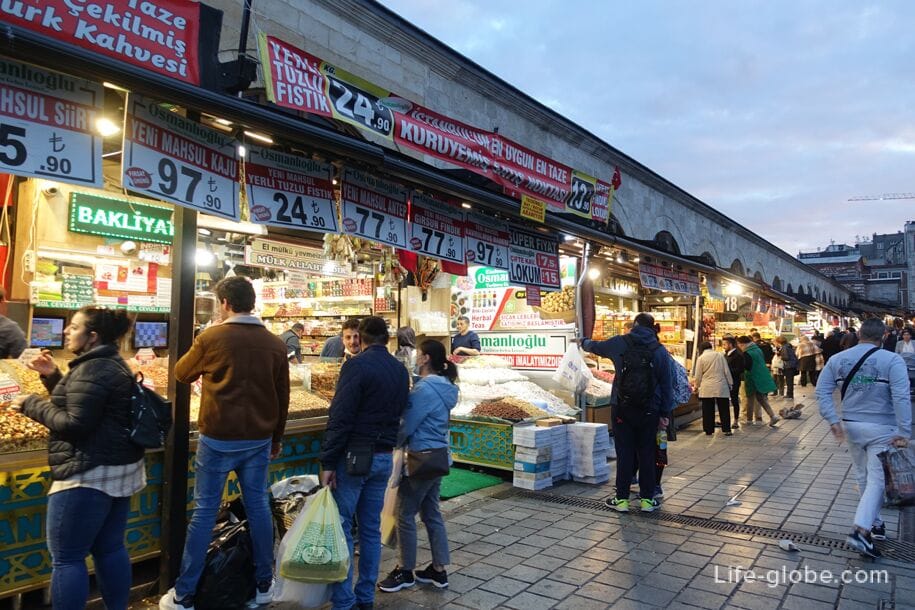
- Binbirdirek cistern (Binbirdirek sarnıcı), also known as the Philoxene cistern (ΚινστρΡνα ΦιλονΝου), which is the second largest reservoir in Istanbul after the Basilica cistern.
Now the Philoxene cistern is open to visitors as a museum. It is also used for exhibitions, concerts, banquets, weddings and other celebrations;
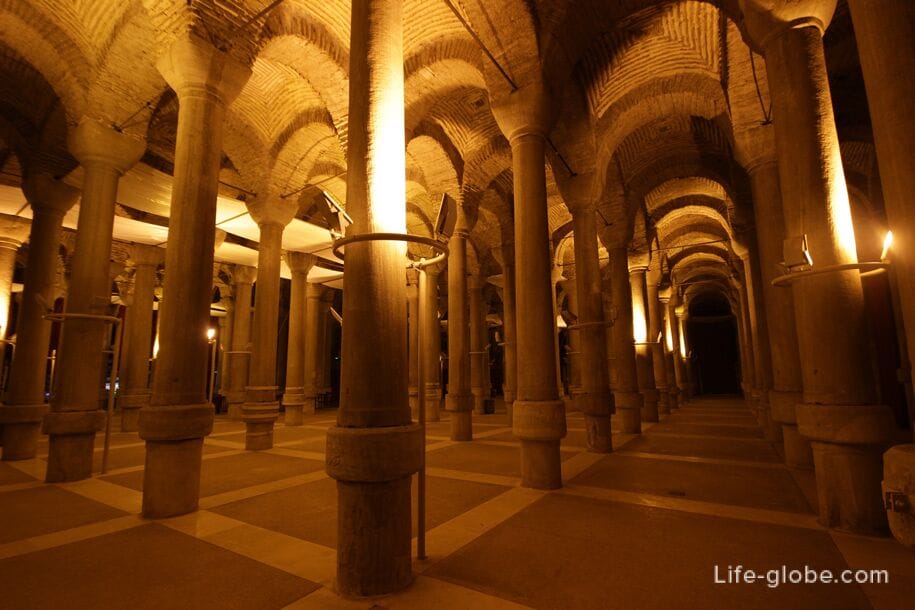
- La mosquée du Nuruosmaniye (Nuruosmaniye Camii) - an Ottoman mosque in 1755 with a large dome and lots of Windows, which is notable for its architecture and is a set, consisting of: mosques, madrasas, imaret (dining room), the tomb of the mother of Osman III - Sehsuvar Valide Sultan, libraries manuscripts in Ottoman, Arabic and Persian languages and fountain located at the entrance to the Kapali Charshi;
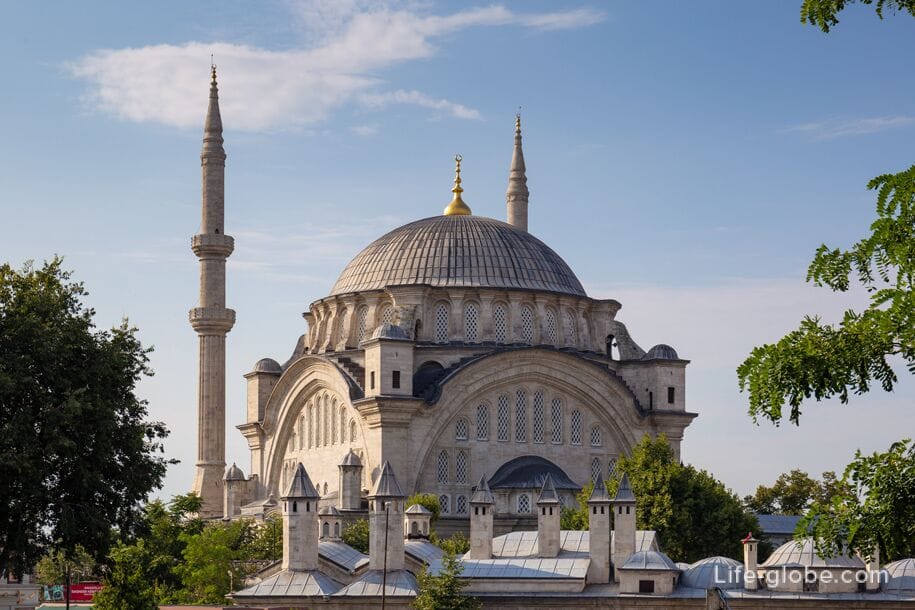

- A new mosque (Yeni Cami, Yeni-Jami), the construction of which as a complex was started in 1597 by order of Safiye Sultan, who was the wife of Sultan Murad III, and later Valide Sultan (Queen mother) of Sultan Mehmed III;

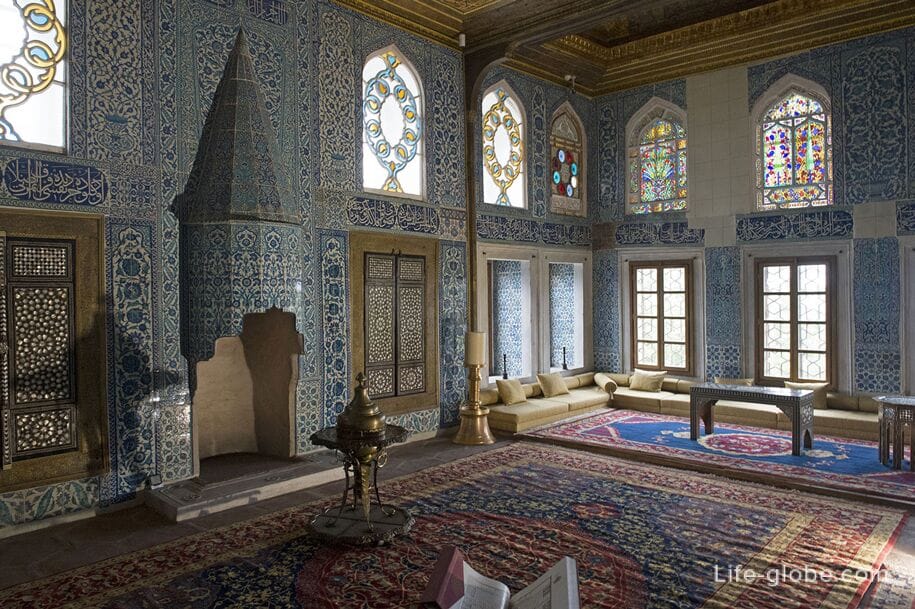
- Chamberlitash Square (Çemberlitaş Meydanı), located on the site of the former Forum of Constantine.
The main decoration of the square is the Column of Constantine or Chamberlitash column (Çemberlitaş Sütunu) - a Roman triumphal column dating from 328. Next to the column are: the historical Turkish bath - hammam Chamberlitash (Çemberlitaş Hamamı) and the mausoleum of Mahmud II with a cemetery (Sultan II Mahmut Türbesi) - the family tomb of the Ottoman sultans, near which there is a cemetery with the graves of famous Ottoman politicians and writers;
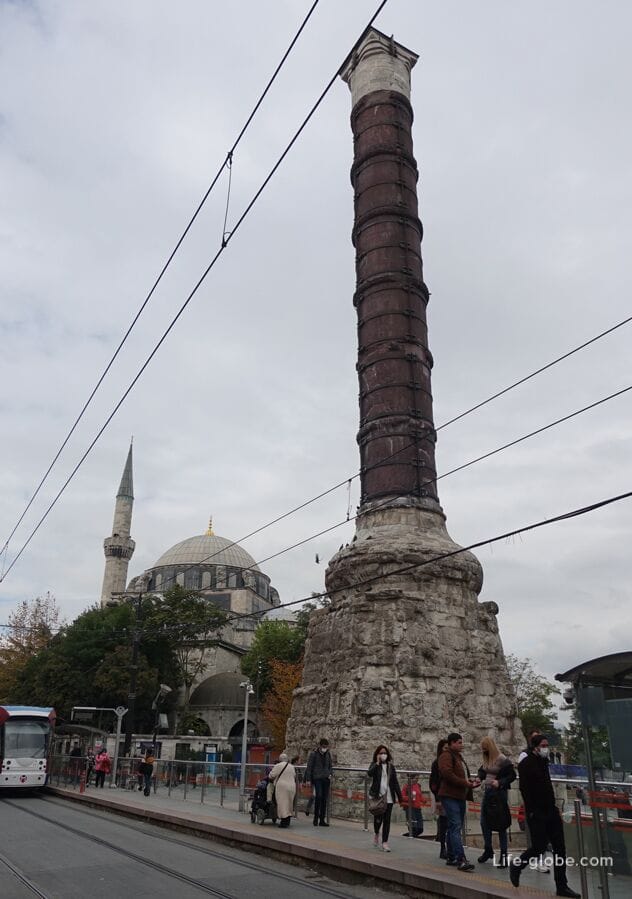


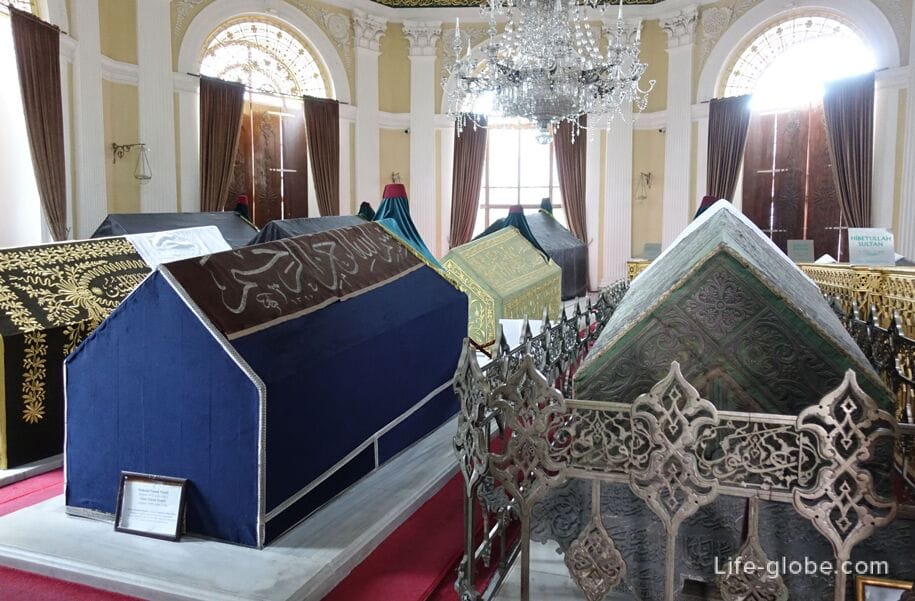
- Suleymaniye (Süleymaniye Camii) is a masterpiece of architecture of the Ottoman Empire and the second most important mosque in Istanbul after the Blue Mosque.
Suleymaniye is a complex in which, in addition to the mosque itself with a monumental courtyard, the turbe (tombs-mausoleums) are notable, which are polygonal buildings topped with a massive dome. Inside the tombs are: Sultan Suleiman the Magnificent, his beloved wife Hurrem (Roksolana) and their daughter Mihrimah, as well as other members of the ruler's family.
The mosque is located on a hill and its territory offers beautiful panoramic views of part of the Fatih district and the Golden Horn Bay;


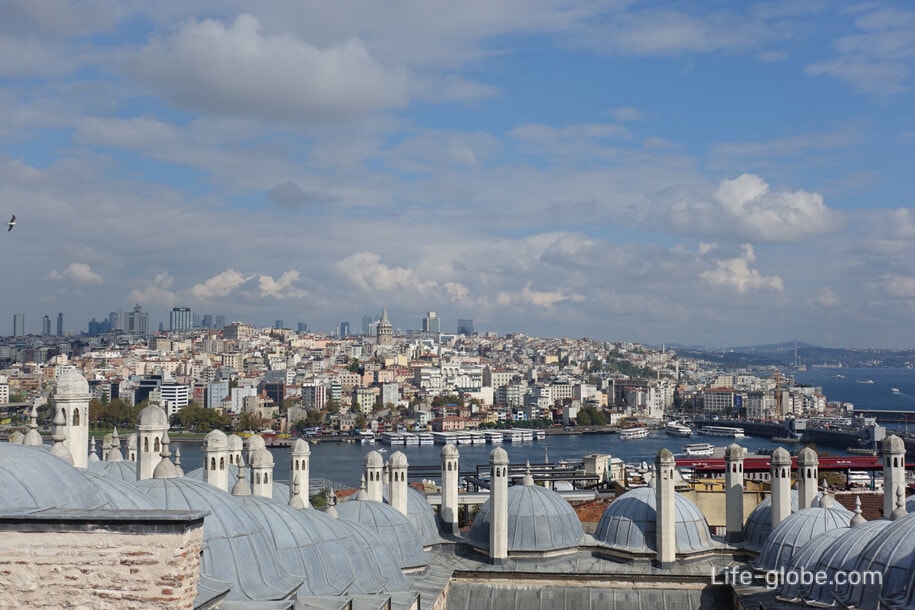
- Suleymaniye Hammam (Süleymaniye Hamamı), which is part of the Suleymaniye Mosque complex. The hamam was built in 1550-1557 by the Turkish architect Mimar Sinan by order of Sultan Suleiman the Magnificent and named in his honor.
Today, anyone can visit the hamam;

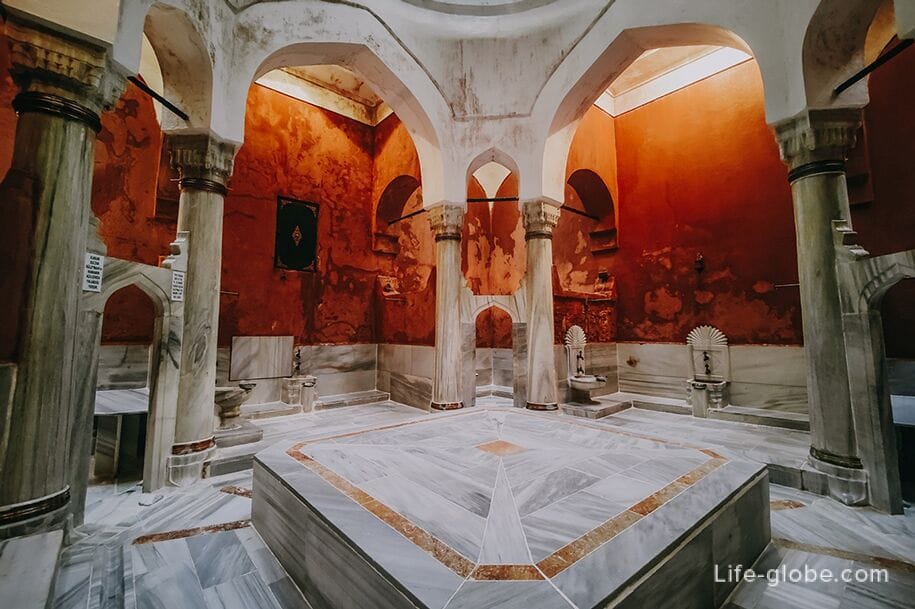
- the aqueduct of Valent or Bozdogan (Bozdogan Kemeri), the remains of which are preserved from the former extensive network of aqueducts of Istanbul and the suburbs. The aqueduct was created by the Romans in the 4th century, was a very important stage in the development of the water supply system of Constantinople and connected the two hills of the city.
Today the aqueduct crosses the busy highway of the city;
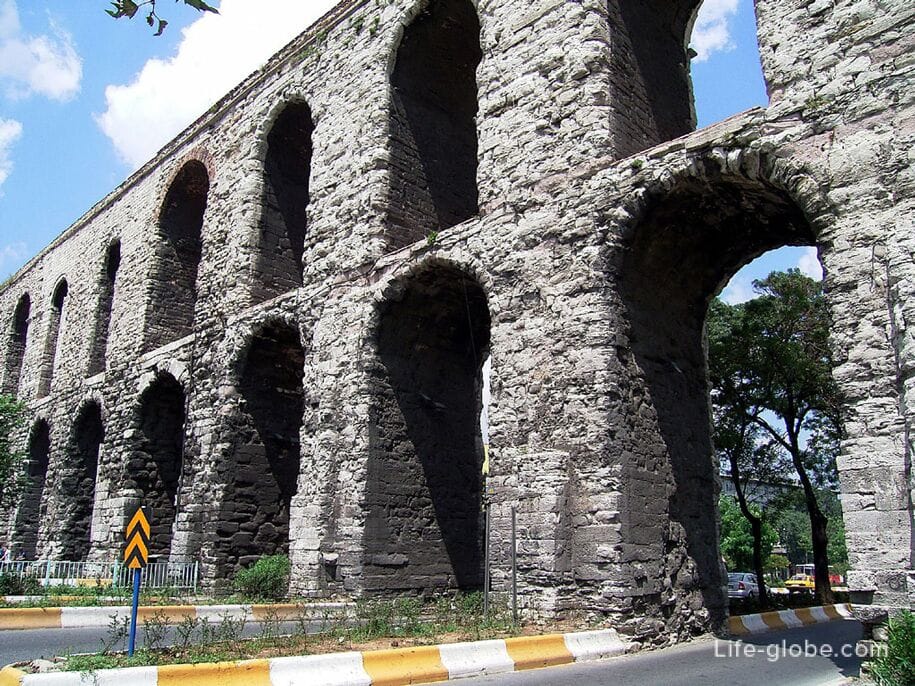
- The Marcian or Marcian Column (Kıztaşı, "maiden stone") is a Roman triumphal granite column on a carved marble pedestal, which was erected in the 450s and is one of the oldest monuments in Istanbul;

- Pantokrator Monastery or Molla Zeyrek Mosque (Molla Zeyrek Camii), which is the second largest monument of Byzantine architecture, preserved from Constantinople, after the Hagia Sophia Mosque.
Near the mosque there is a panoramic cafe with a beautiful observation deck;
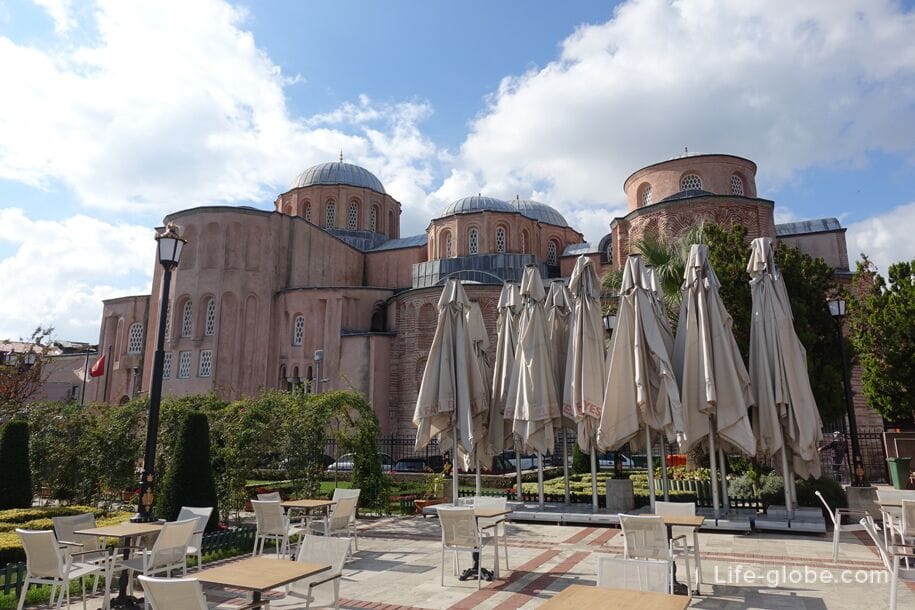
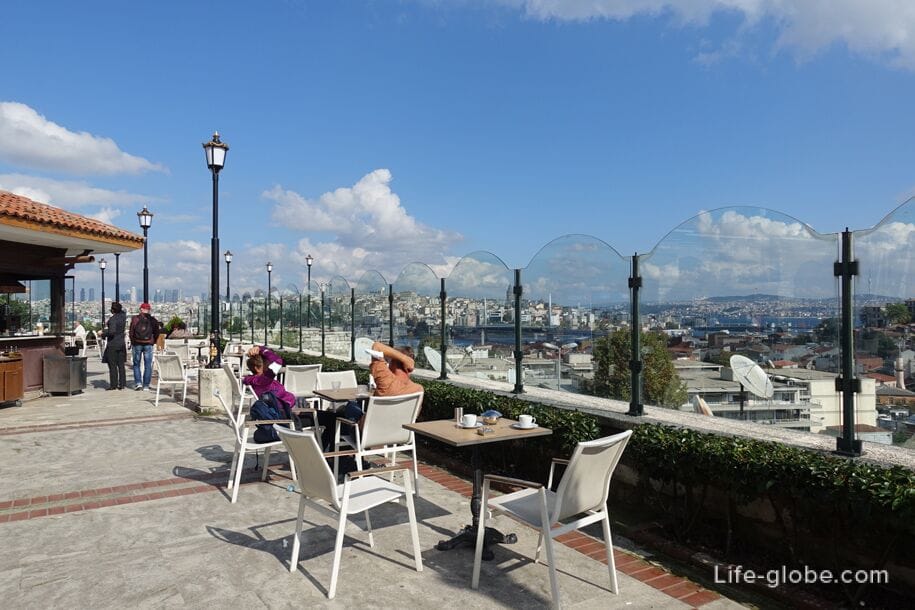
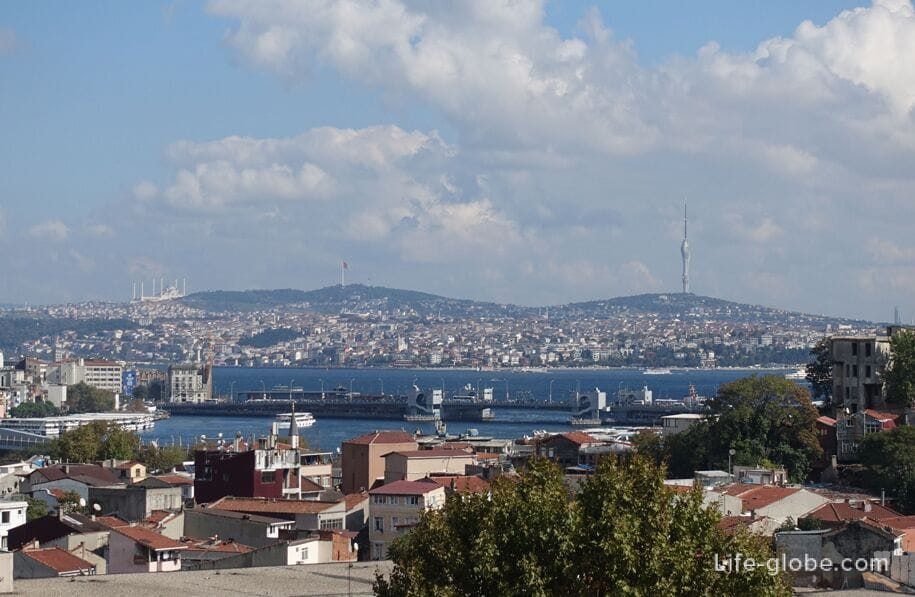
- Fatih Mosque (Fatih camii), which was built as a complex by order of Sultan Mehmed II the Conqueror in 1463-1470 on the site of the Byzantine Church of the Holy Apostles.
There is a madrasah at the mosque, and in the courtyard there is a cemetery where Mehmed II rests in the mausoleum, whose tomb is one of the important city shrines.;
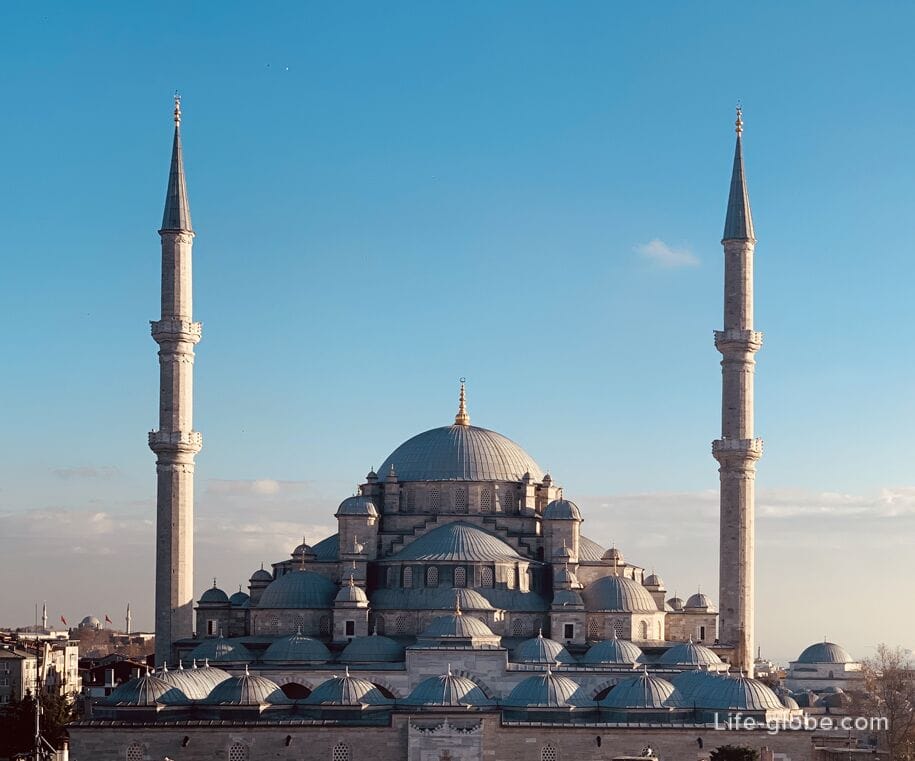
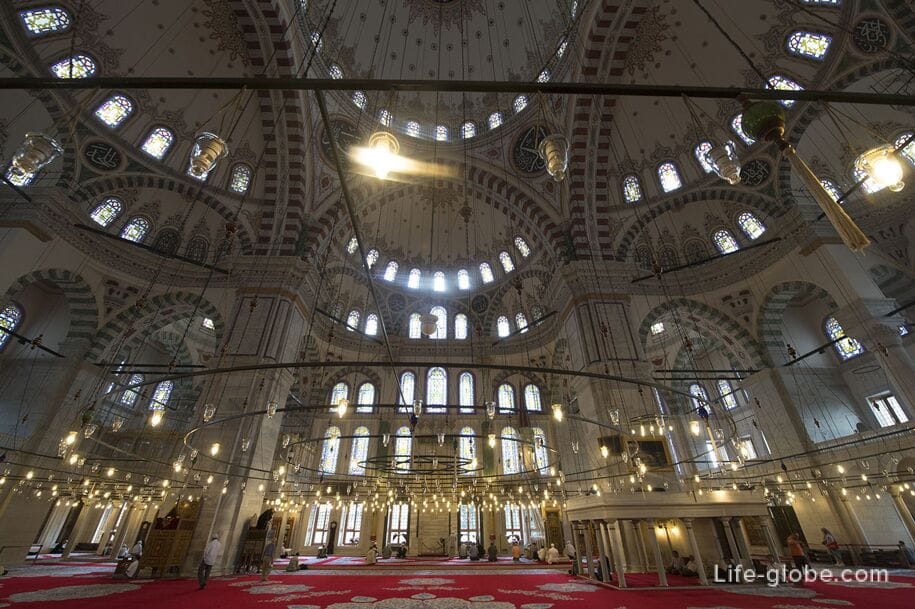
- Balat is a traditional Jewish quarter (district), which today is a popular place among visitors to the city and attracts attention, first of all, with colorful old buildings and stairs, streets with bright decorations and street cafes decorated in authentic and ruin-style.
Shrines are notable in the area;
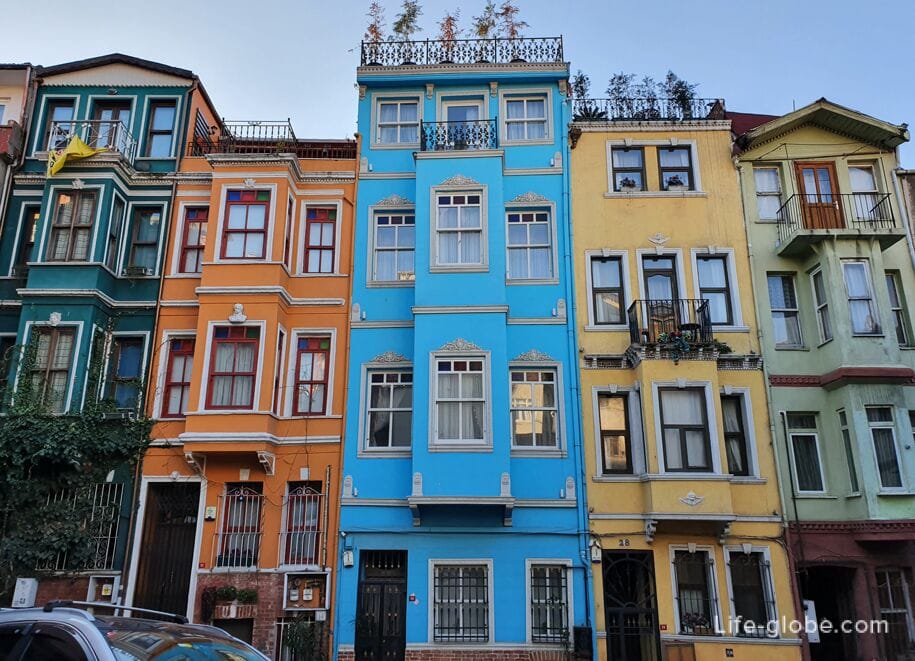
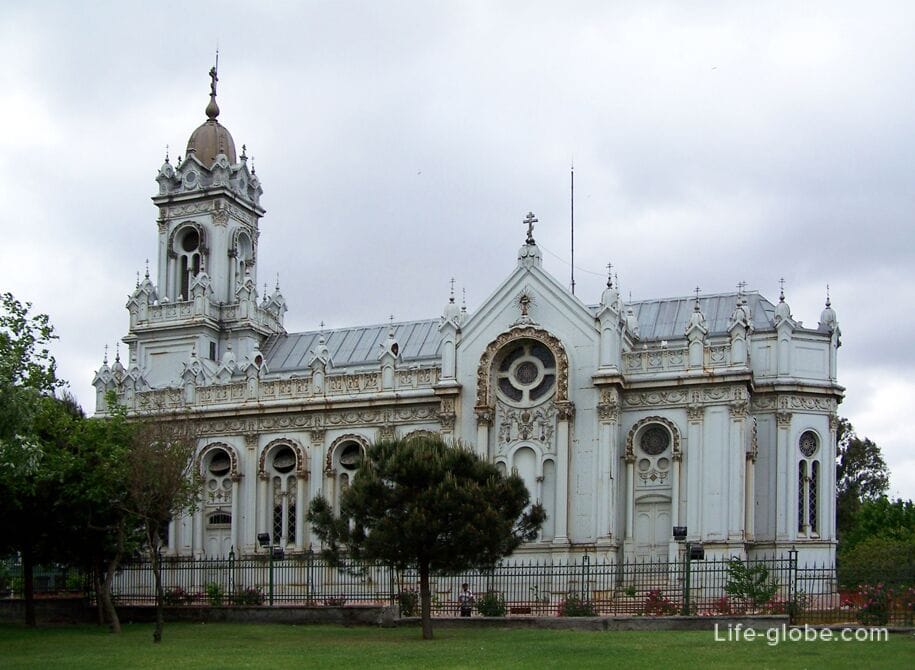
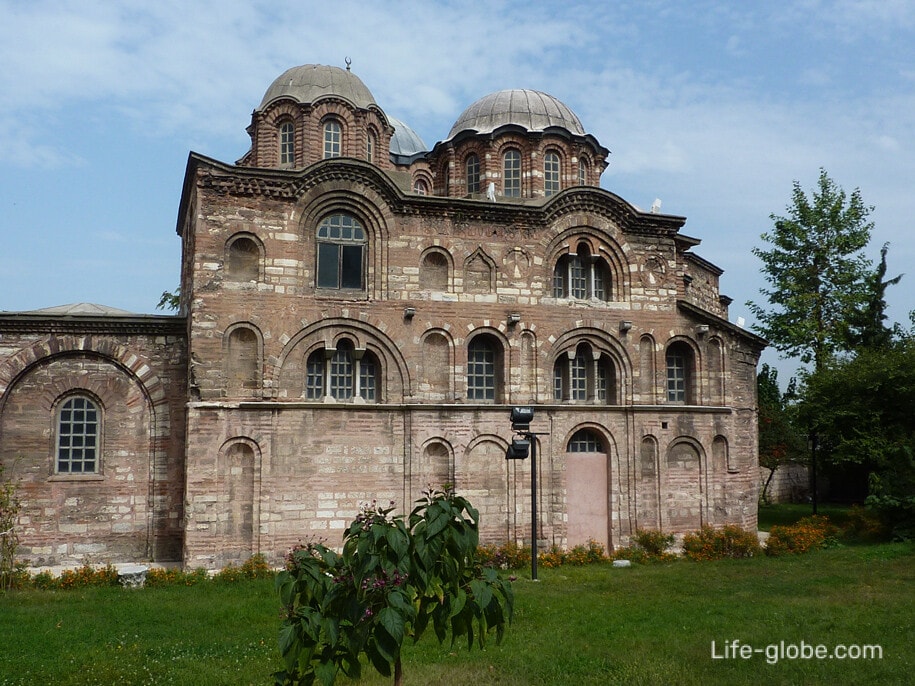
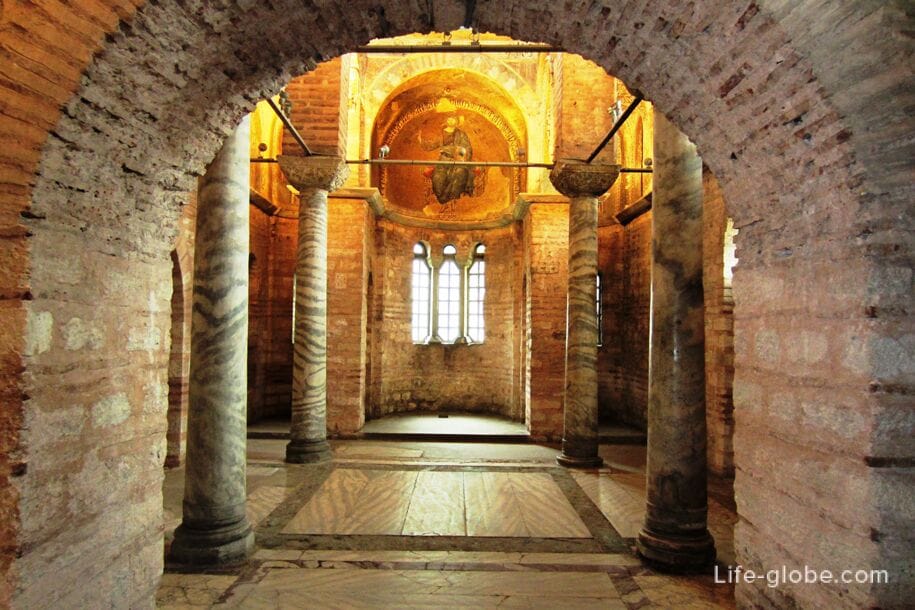
- The Blachernae Palace or Tekfur Palace (Tekfur Sarayı, Tekfur sarayı), which is the remains of a former palace built for the son of the Byzantine emperor.
Now part of the ruins of the palace have been restored, and are used as a museum with part of the walls, an interior room with an exposition, a courtyard, an elevator and an observation deck;

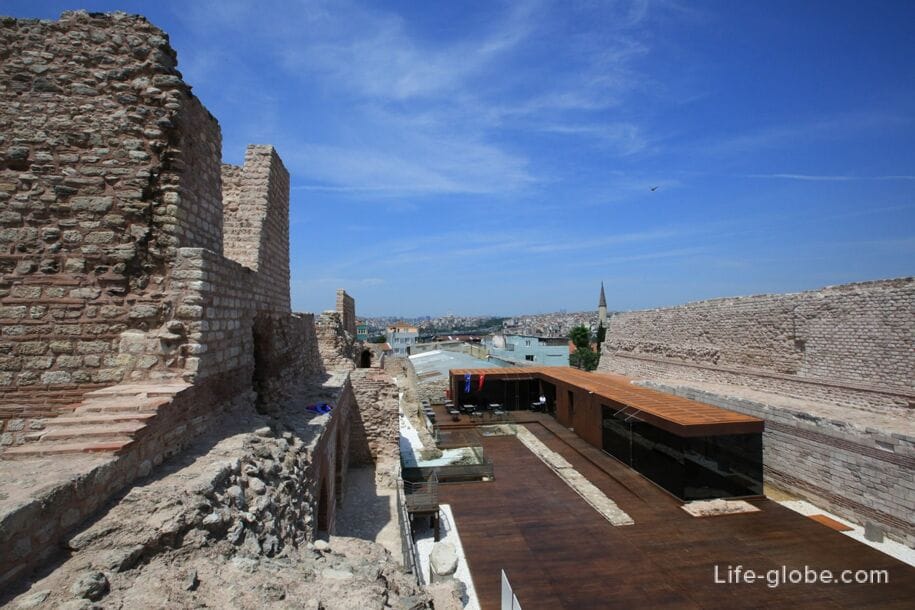
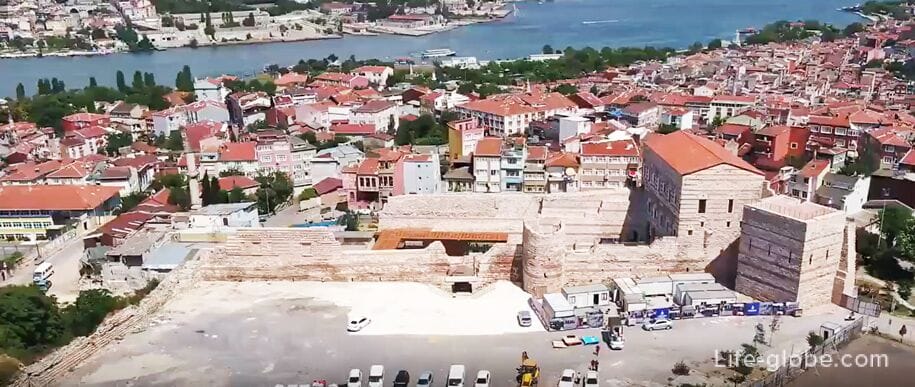
- Kariye Mosque or Monastery of Chora, also the Church of the Holy Savior in Chora (Kariye Camii) is a medieval Greek Orthodox church used today as a mosque and known for preserved Byzantine Christian mosaics and frescoes. More about the Fatih district with the Balat quarter...


Just north of the Fatih district, the famous Pierre Loti hill attracts attention, which is one of the best and most famous viewing platforms in Istanbul.
Panoramic views of the Golden Horn and the European part of Istanbul open from the observation deck of the hill. There is a panoramic cafe near the observation deck.
You can climb (descend) to the hill on foot through the old cemetery (free of charge) or by using the Eyüp-Piyer Loti Teleferik Hatt (TF2) gondola cable car, which is the public transport of the city (Istanbul transport cards are valid). More about Pierre Loti Hill...
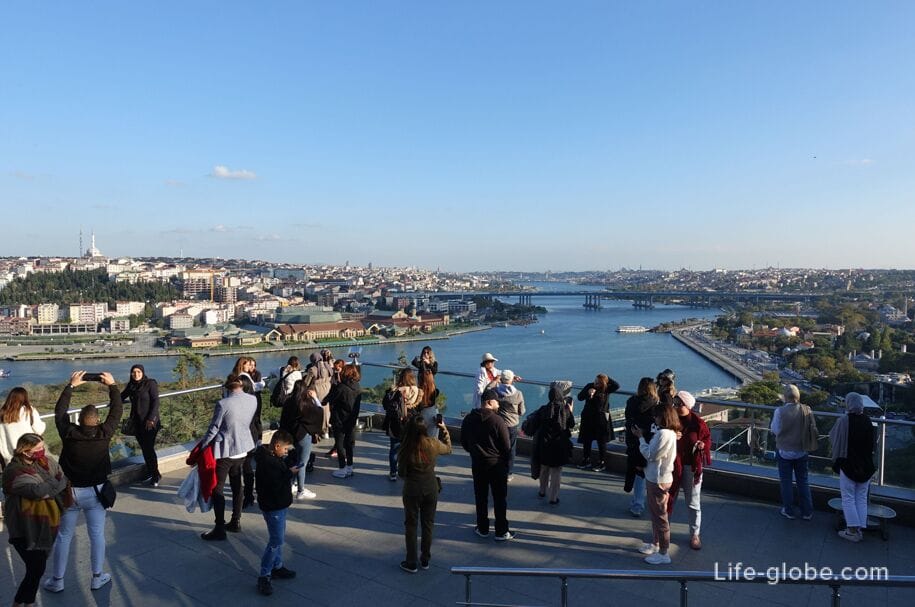
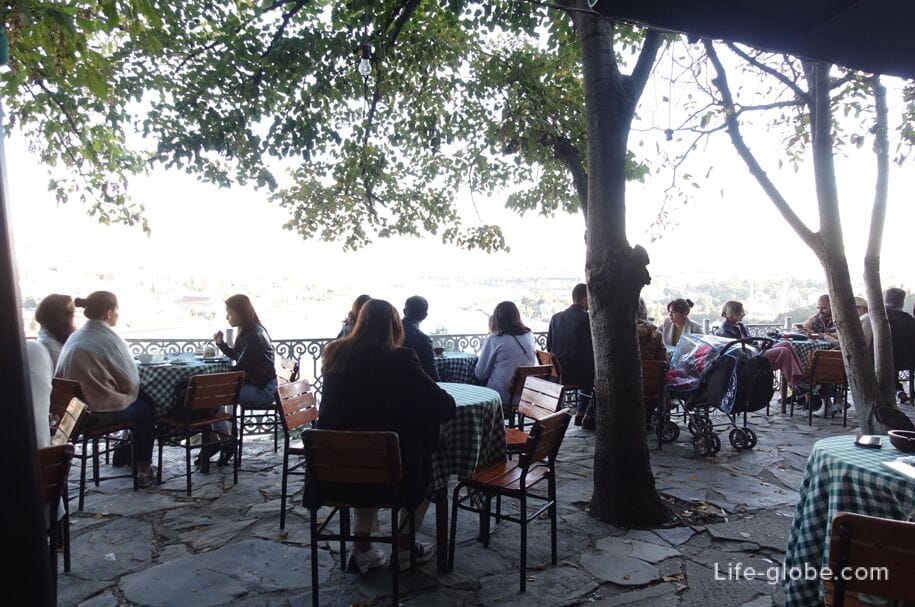
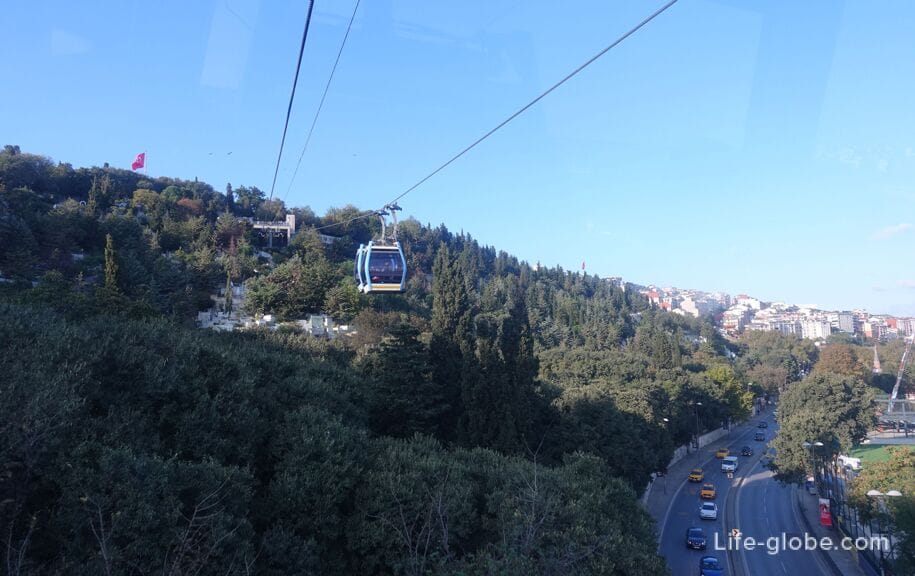
Near the northwestern outskirts of the Fatih district is the famous Panorama 1453 Museum (Panorama 1453 Tarih Muzesi) - a history museum with a large panoramic painting depicting the conquest of Constantinople. The museum's website: panoramikmuze.com .
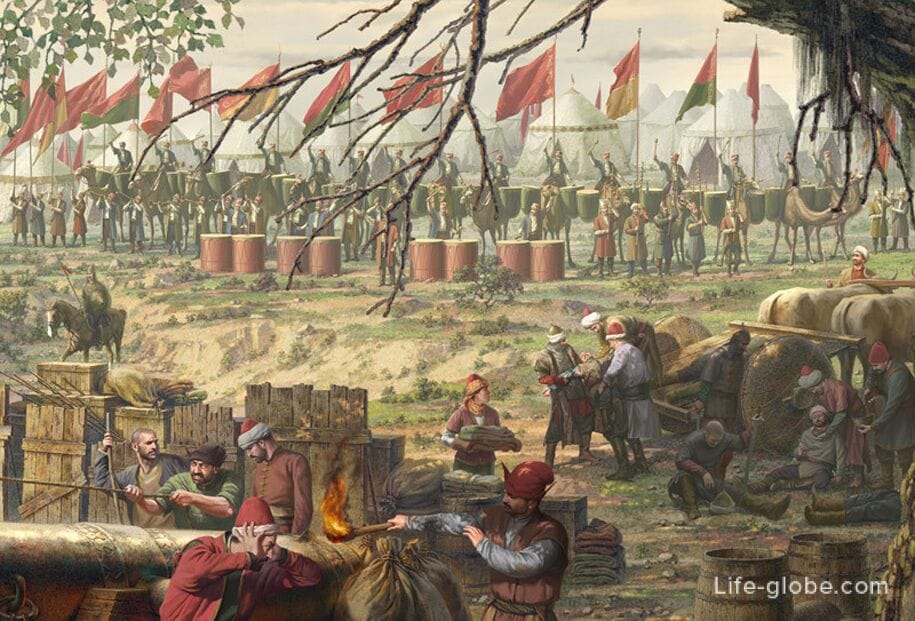
From Fatih district (near Sultanahmet) one of the most famous and most visited bridges in Istanbul - a two-level transport and pedestrian bridge - leads through the Golden Horn BayGalata Bridge (Galata Köprüsü) with restaurants and observation decks on the lower tier. More about Galata Bridge...
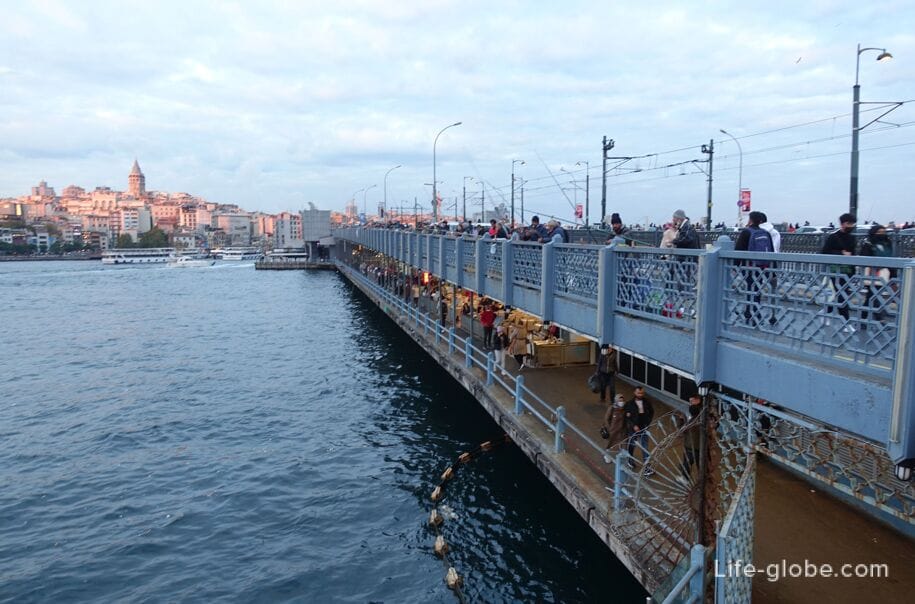
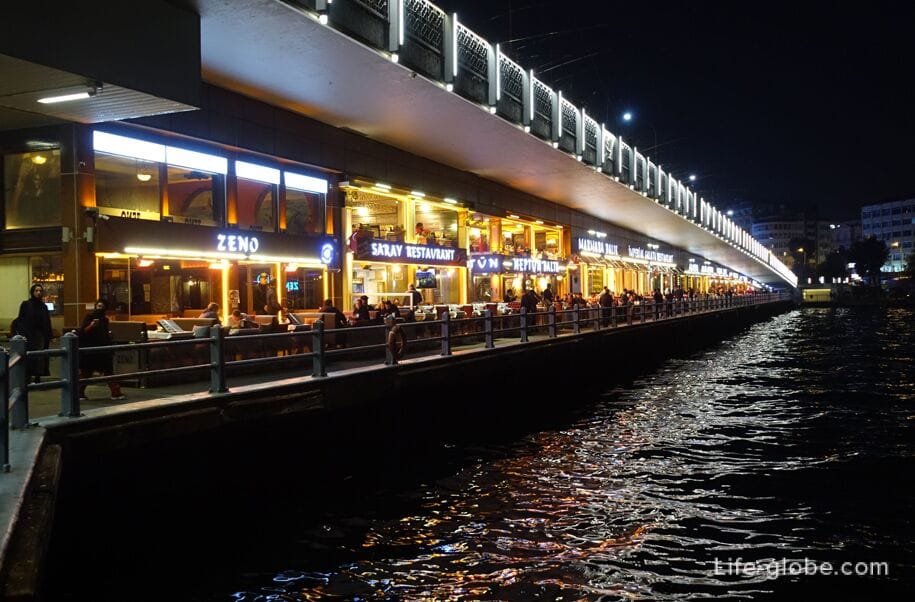
Near the Galata Bridge is locatedThe Karakoy Fish Market (Karaköy Balık Evi), which is a very colorful place where fish and seafood are sold. Most of all, this market is attractive to tourists because it has a cafe where you can taste fish and seafood dishes.
From the Galata Bridge it is worth going up toGalata Tower (Galata Kulesi Istanbul), which was erected by the Genoese in the middle of the fourteenth century (1348-1349), and now restored and is one of the symbols and one of the main attractions of Istanbul.
The tower is accessible to visitors. It houses a museum exhibition, and on the upper levels of the tower there are circular (indoor and outdoor) observation decks, giving beautiful panoramic 360-degree views of Istanbul. Learn more about the Galata Tower...

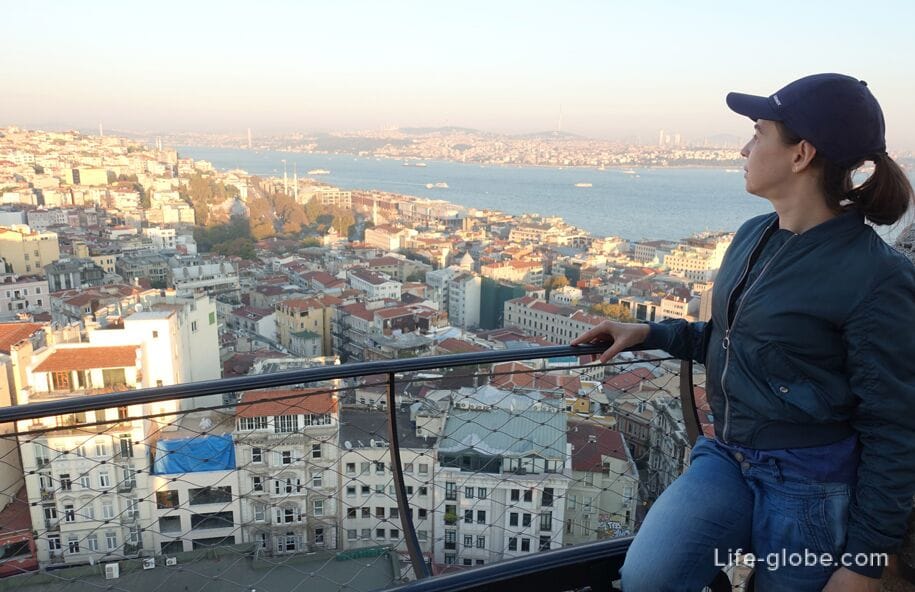
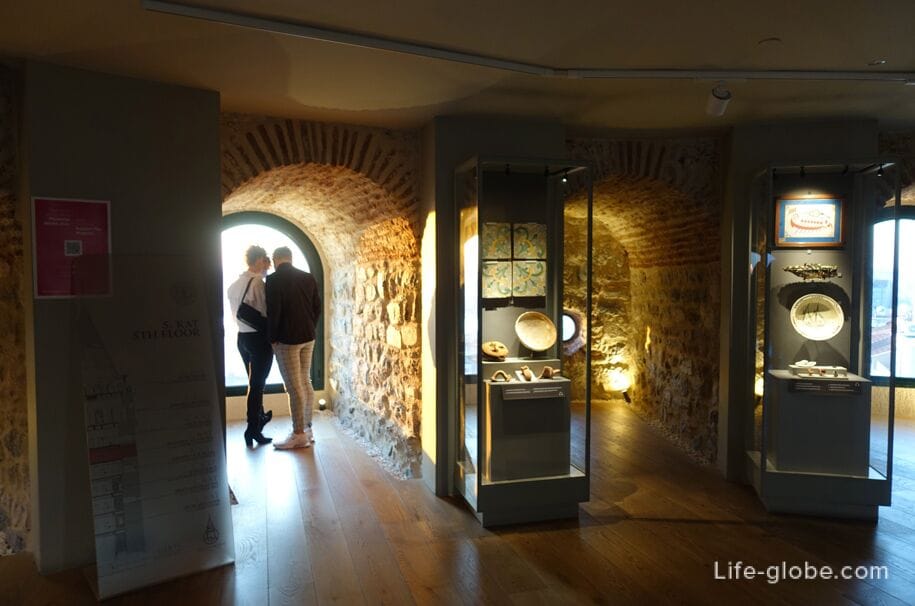
From the Galata Tower, you can climb to the Tunel Square, from which the most famous pedestrian shopping street in Istanbul - Istiklal departs.
From the Galata Bridge to the Tunel Square (Istiklal Street), you can climb along the picturesque streets or on the historic underground funicular Tunel, which was opened in 1875 and is now the city's public transport and one of the oldest currently operating funiculars of its kind. Learn more about the funicular...

Streets, when walking up to Istiklal
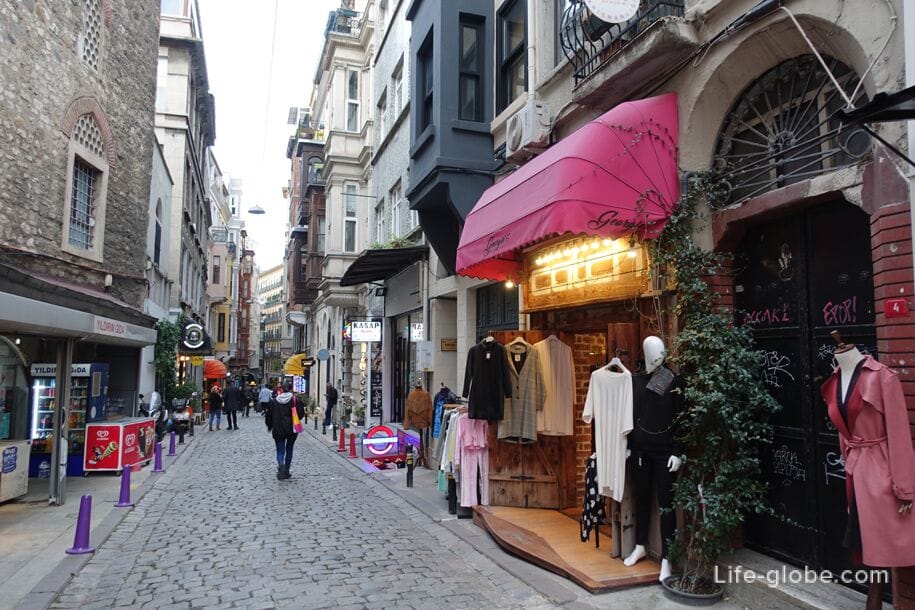
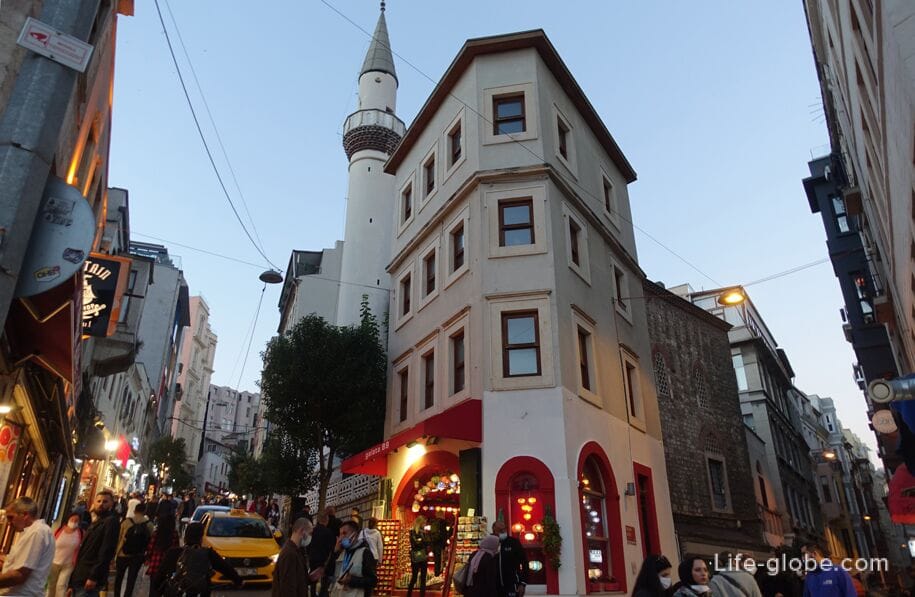
Istiklal (Istiklal Caddesi) is the most famous pedestrian shopping street in Istanbul, which attracts many tourists and locals.
Istiklal Street is 1.4 kilometers long. Along the street there are dense rows of buildings, including historical ones (mainly of the 19th - early 20th centuries), which were designed in neoclassical, Neo-Gothic, Renaissance, art-nova and national Turkish styles; there are also buildings in the styles of the first years of the Turkish Republic and a number of later examples of modern architecture.
In the buildings along the street today there are museums, currency exchangers, nightclubs, cafes, kebabs, bars and restaurants, shops, including well-known world brands, boutiques and souvenir shops, as well as various accommodation facilities (hotels, apartments)
The historical red retro tram "Nostalgia" runs along Istiklal Street, connecting Tunel Square with Taksim Square. More about Istiklal Street...
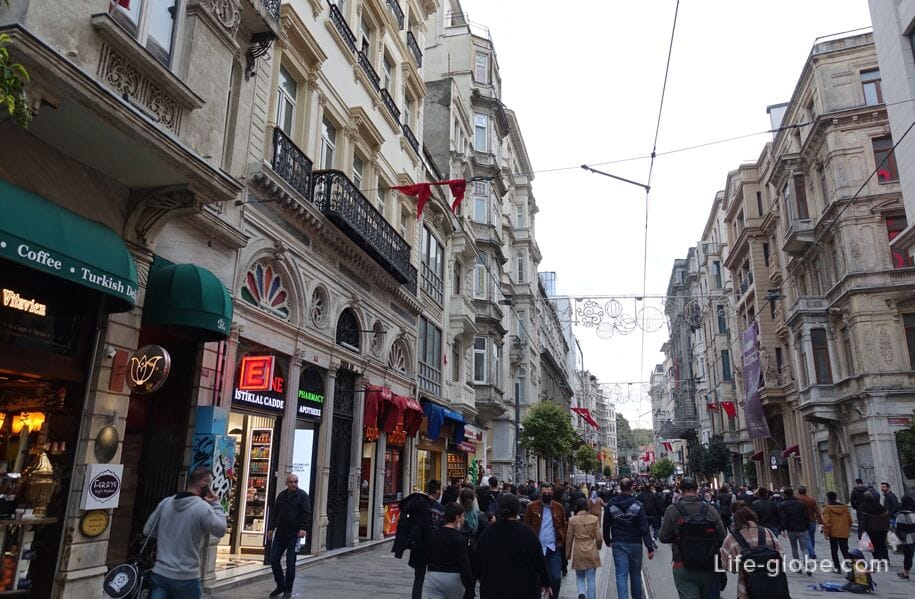
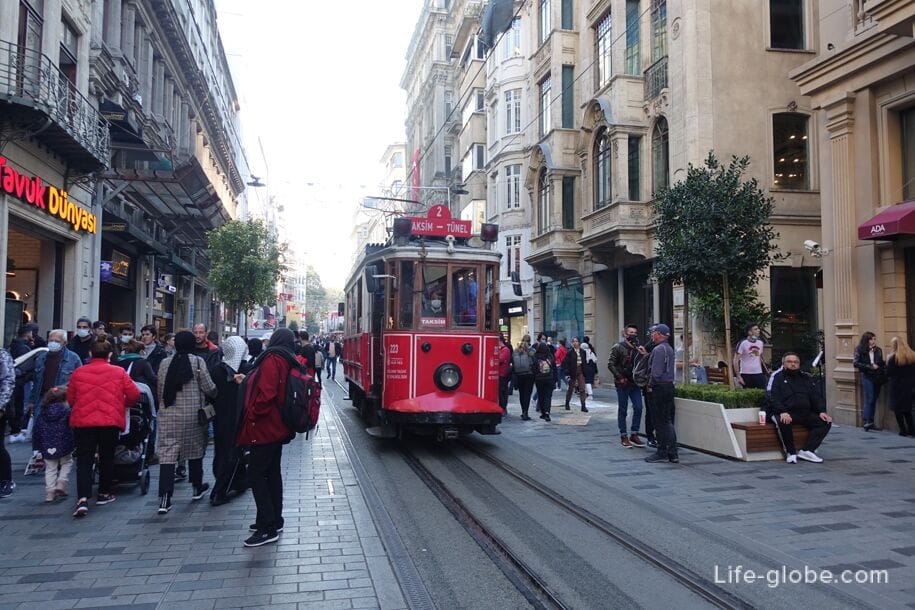
Istiklal Street leads to Taksim Square (Taksim Meydanı), which acts as one of the major central squares of Istanbul, and is now the main transport hub of the city, as well as a walking area with some significant attractions.
The center of the square is decorated with an 11-meter figured monument of the Republic (Cumhuriyet Anıtı), designed by the Italian architect Pietro Canonica and opened on August 8, 1928.
Also notable on the square is the Taksim Mosque (Taksim Camii), erected in 2017-2021, although the plan of the mosque on the square has been developed since 1952. More about Taksim Square...
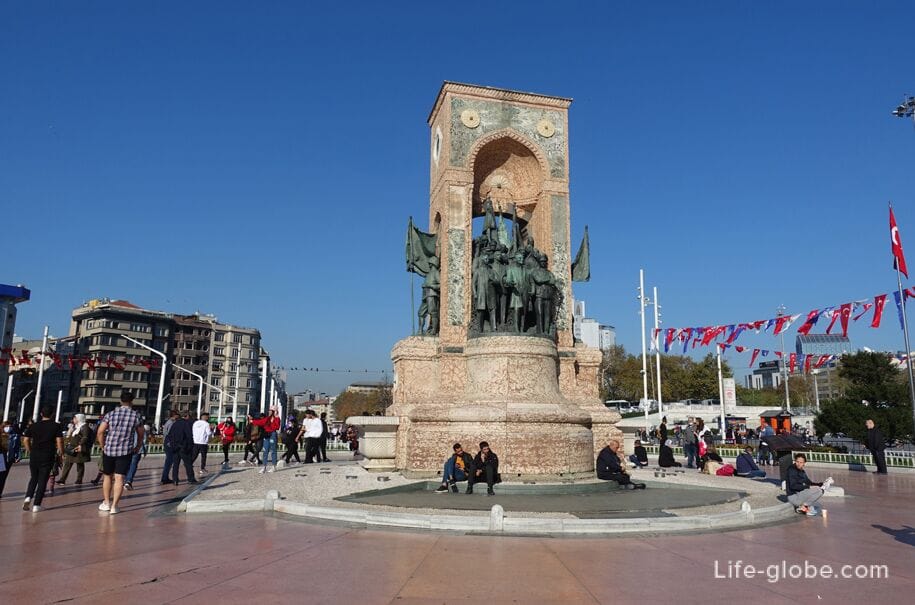


Istiklal Street and Taksim Square are part of a large and lively district of Istanbul - Beyoğlu, which stretches along the Bosphorus Strait.
In the Beyoglu area, hammams, museums, shrines and art galleries are notable, of which it is worth highlighting:
- Kamondo stairs or Kamondo steps (Kamondo merdiven) is one of the most famous and photographed pedestrian stairs-sights of Istanbul.
This winding staircase was designed with a unique combination of neo-Baroque and early Modern styles, and built around 1870-1880 by Abraham Salomon Kamondo;
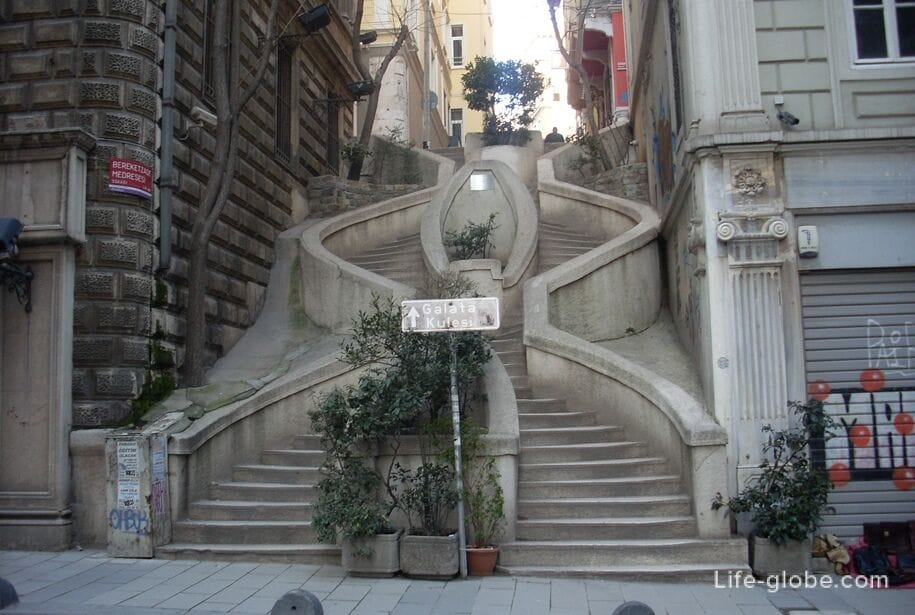
- The Museum of Innocence (Masumiyet Müzesi), opened by the writer Orhan Pamuk and related in meaning to Pamuk's novel of the same name;
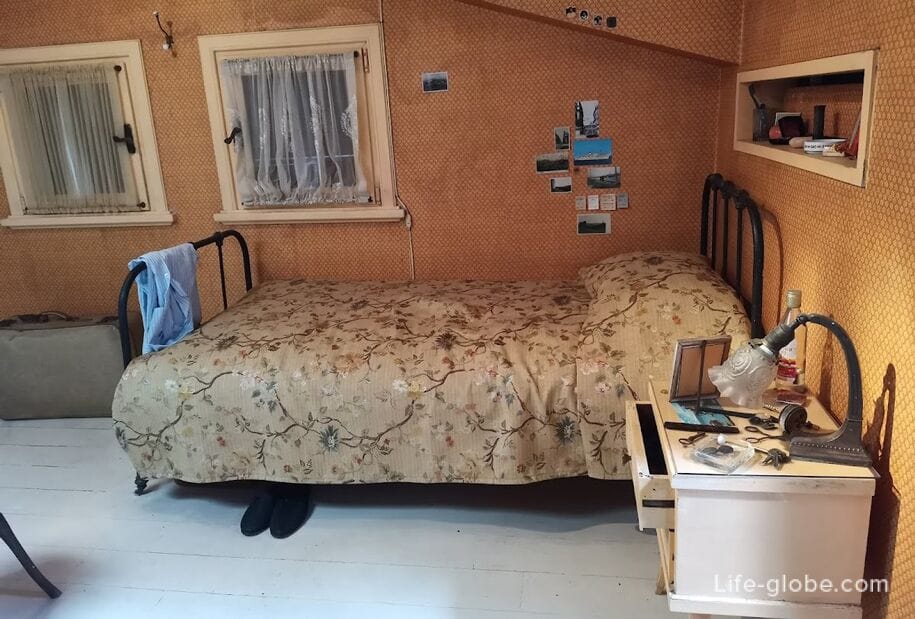
- Istanbul Museum of Modern Art (Istanbul Modern Sanat Müzesi, Istanbul Modern) is an art museum where modernist and contemporary art by Turkish and foreign authors are presented, as well as there is a cinema, library, shop and cafe;
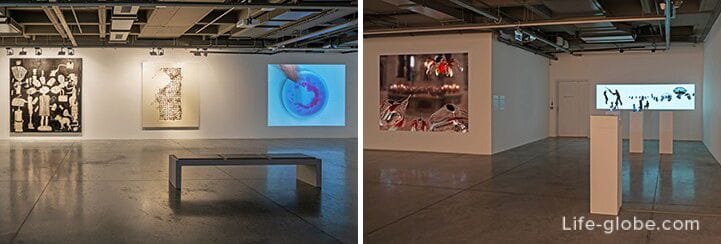
- The Pera Muzesi Museum is an art museum located in the elegant building of the former Bristol Hotel, designed by architect Achille Manoussos and built in 1893.
The museum exhibits paintings and ceramics, temporary exhibitions of works by modern masters are held;

- Aynaly Kavak Pavilion or Aynalykavak (Aynalıkavak kasrı), which is also known as the shipyard Palace - a summer pavilion that has been preserved from the complex of the Ottoman Sultan's palace and in the walls of which today there is a museum with beautiful recreated halls;

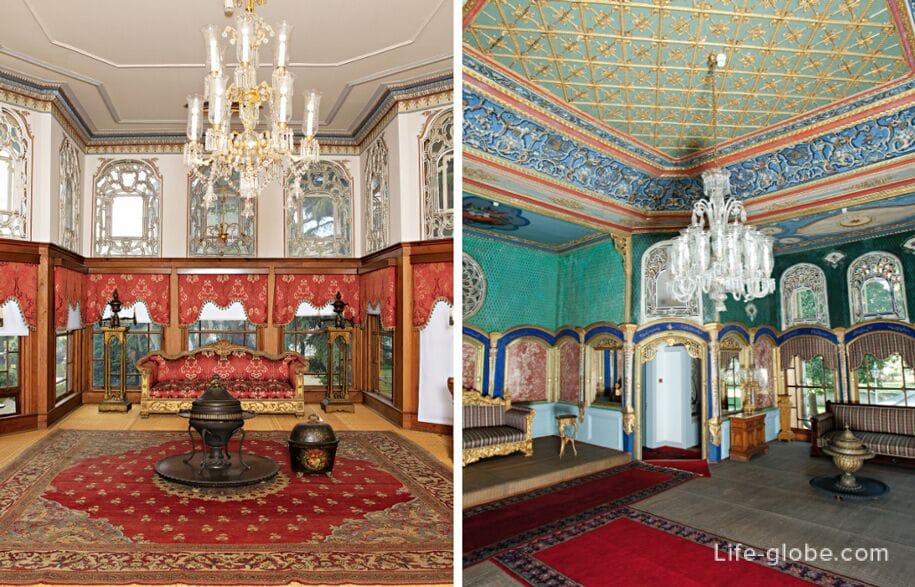
- Rahmi Kocha Museum (Rahmi M. Koç Müzesi), dedicated to the history of transport, industry and communications with a collection of cars and interactive exhibits;
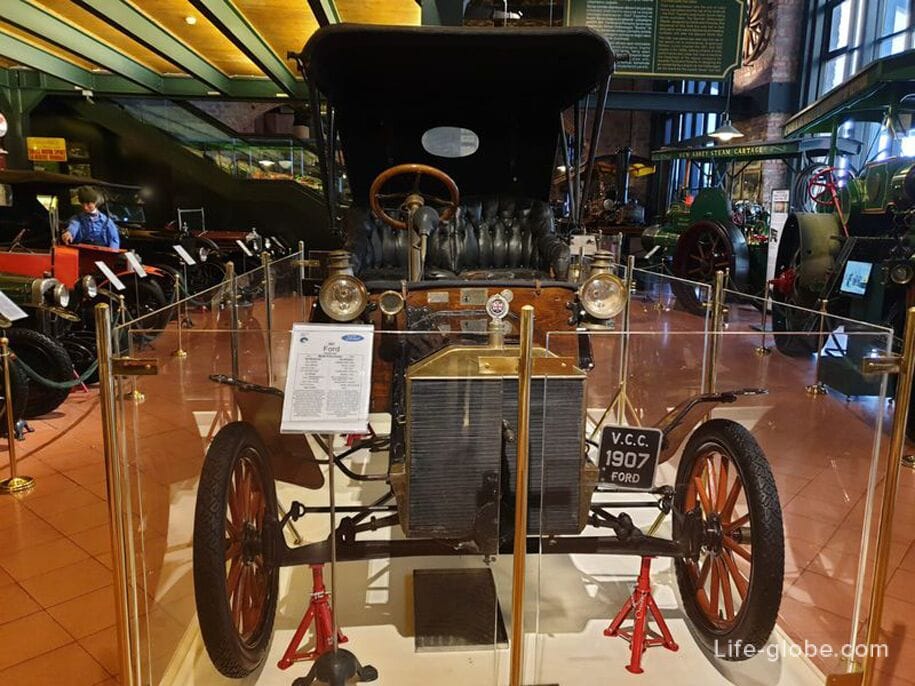
- Miniaturk Park is an open-air theme park that houses miniature replicas of Turkish attractions, from the Blue Mosque and Topkapi Palace to the white terraces of Pamukkale, the Temple of Armetida and the Mausoleum of Halicarnassus. More about Beyoglu district...
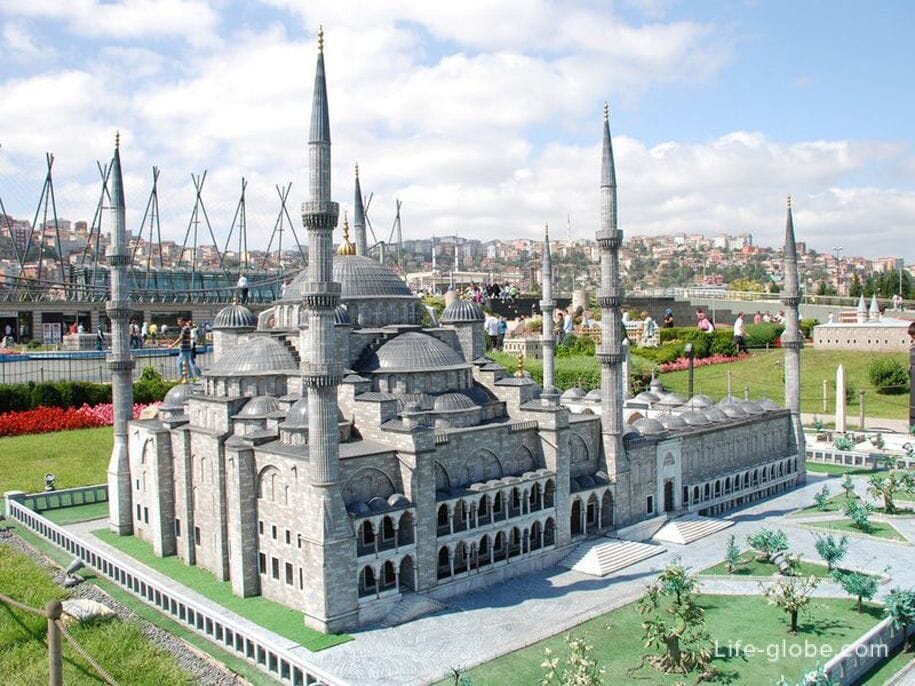
Dolmabahçe Palace (Dolmabahçe Sarayı) is a magnificent Palace complex of the 19th century, served as the residence of Ottoman sultans and today is one of the most visited attractions of Istanbul and the Museum, where you can visit the garden overlooking the waters of the Bosphorus Palace rooms, consisting of: official public part of the "Selamlik" (Selamlık) with function hall (Tören Salonu), Harem (the Harem), or the family part of it; and the clock Museum and the Museum of painting and sculpture (Resim ve Heykel Müzesi). More about Dolmabahce Palace...
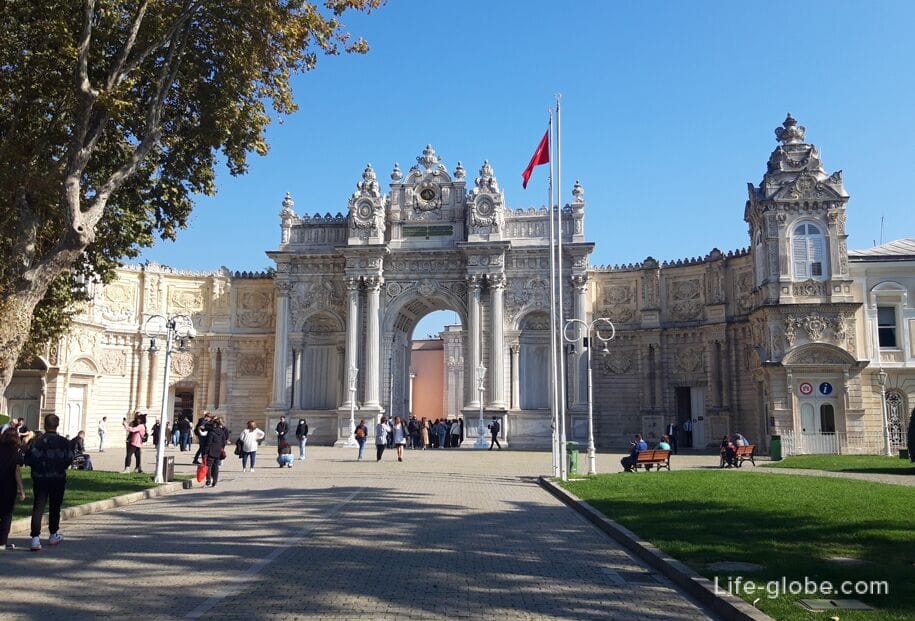


Near the current tourist entrance to the Dolmabahce Palace (in general access - without payment), there is a Clock Tower (Dolmabahce Saat Kulesi), which was commissioned by Sultan Abdulhamid II and designed by the court architect Sarkis Balyan in the period from 1890 to 1895.
The clock tower was made by the French watch house of Jean-Paul Garnier and installed by the court watchmaker Johann Mayer.
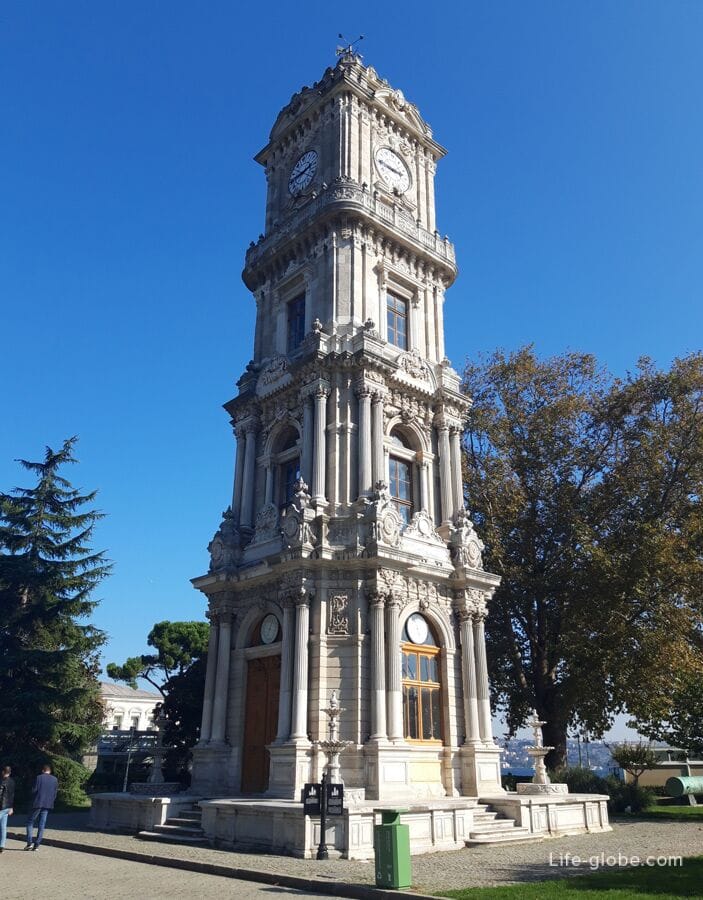
In the building of the former kitchens of the Dolmabahce Palace there is a museum of palace collections (Saray Koleksiyonları Müzesi), created by transferring about 20,000 objects that the visitor could not see in the furnished rooms of the Dolmabahce Palace.
The main theme of the Museum of Palace Collections is to identify original objects that were used in everyday life in the Ottoman palaces of the 19th century, especially in the Dolmabahce Palace, and in the inventory of national palaces, and make them open to visitors.
Museum website: saray-koleksiyonlari-muzesi.
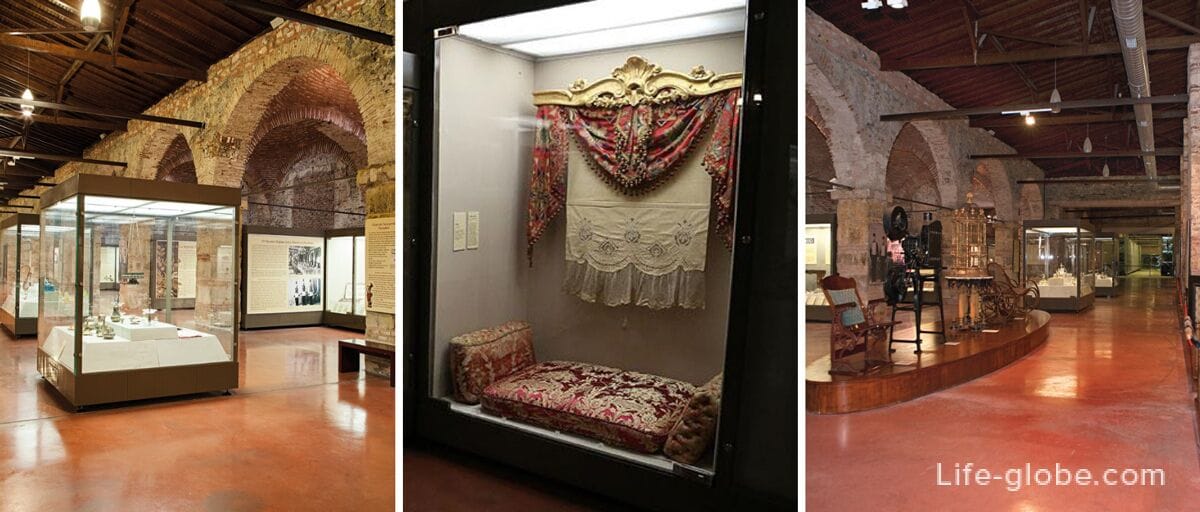

Not far from the Dolmabahce Palace isThe Naval Museum (Deniz Müzesi) is a museum of the history of Turkish navigation, where ships of the Ottoman era and ancient diving equipment are presented.
The museum is the most outstanding naval museum in Turkey, and in terms of the richness of its collections, it is one of the outstanding museums in the world.
The museum's website: denizmuzesi.dzkk.tsk.tr/en .
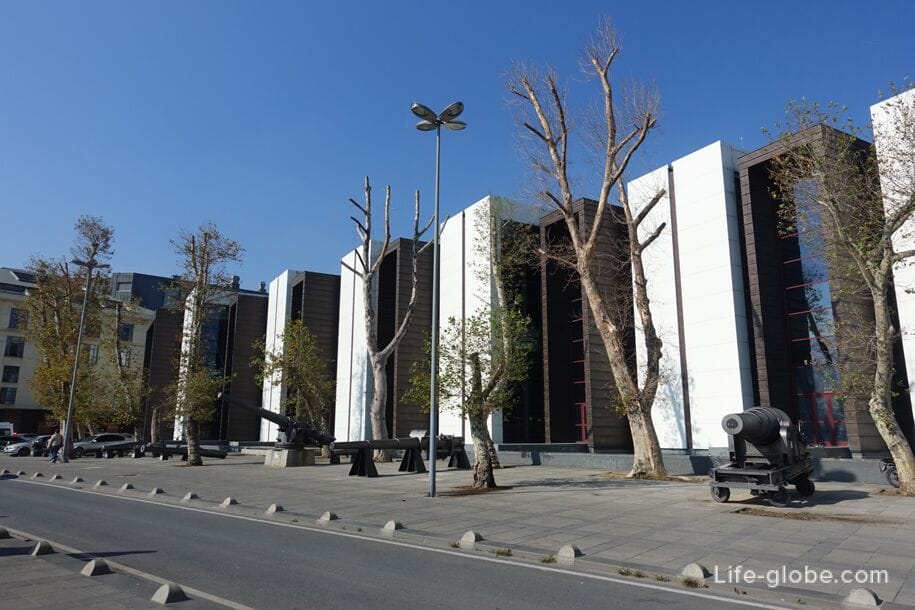
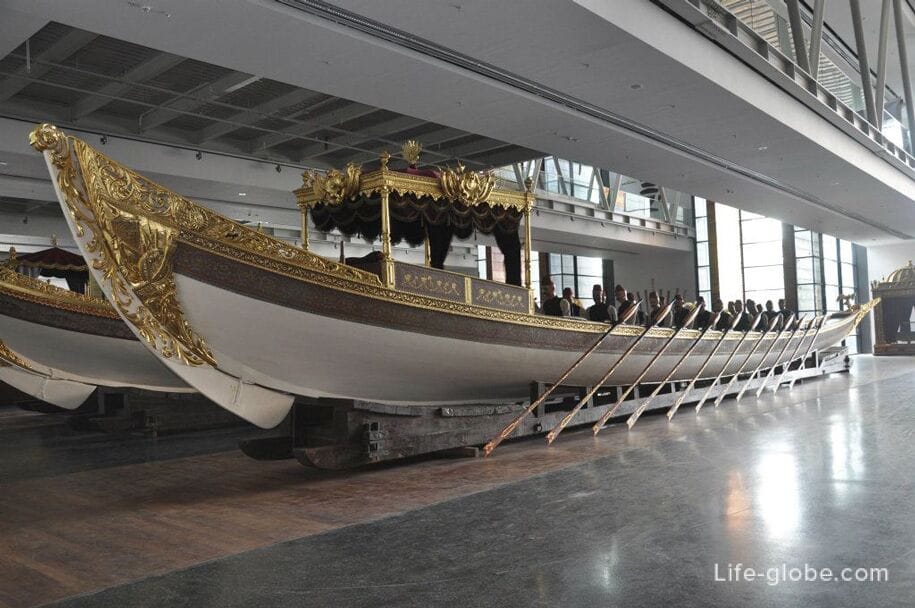
Also not far from Dolmabahce, Yıldız is notable - a large Sultan's historical palace and park complex of the 19th century, which includes the palace of the same name and a beautiful green park with pavilions and the operating historical porcelain factory Yıldız Çini Ve Porselen Fabrikası. More about the Yildiz Palace and Park Ensemble...
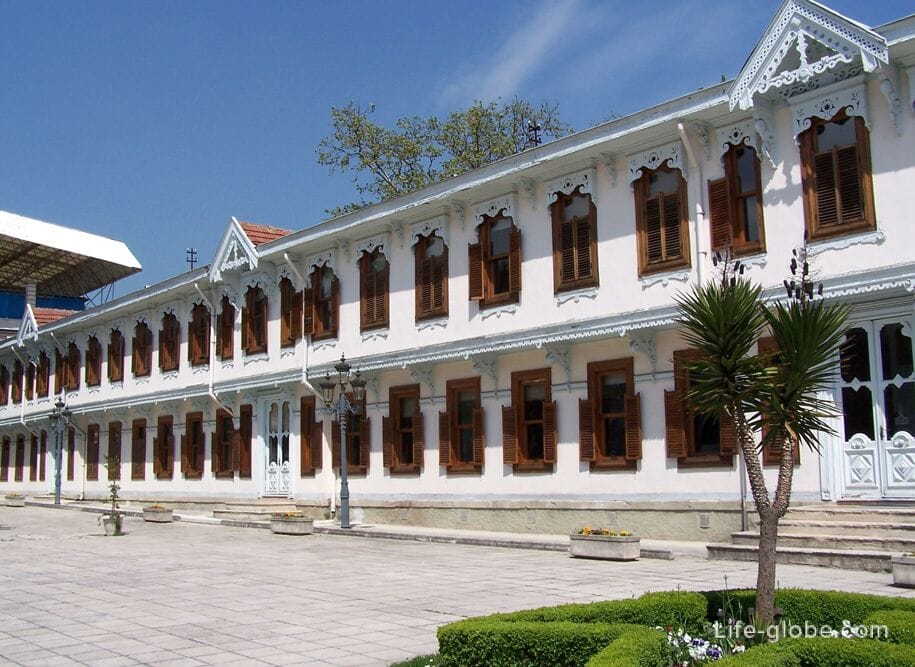
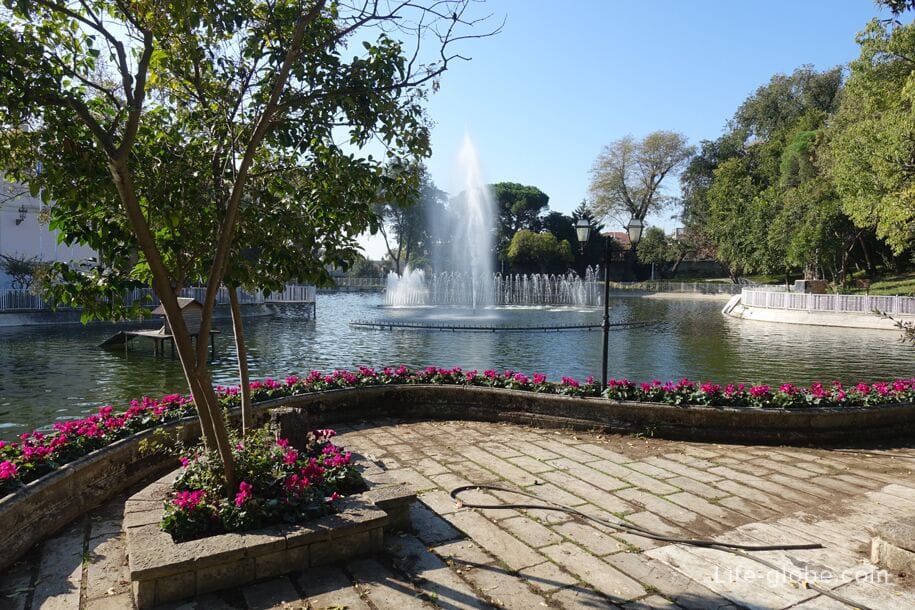
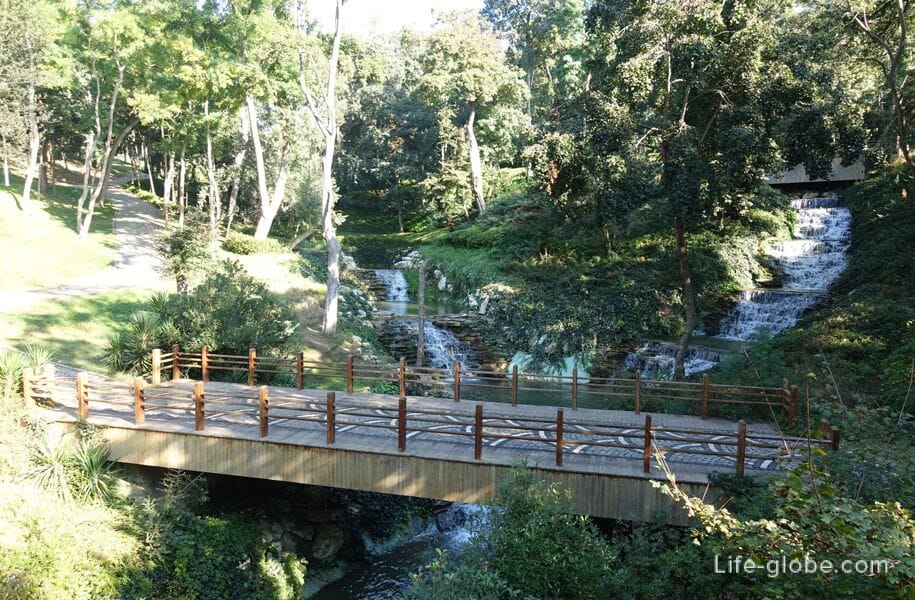
Ortakoy (Ortaköy, "Middle Village") is a small historical district (quarter) in the large district of Besiktas (Beşiktaş).
Today, the Ortakoy district attracts attention with an abundance of cafes and restaurants, beautiful streets and some attractions.
The main square of the district is the Ortakoy Square (Ortakoy Meydanı) near the waters of the Bosphorus, with a historical wall fountain. And from the variety of streets, Bulgurcu Sokak Street attracts attention, which stands out with residential buildings that have been preserved since the 18th century.
The most attractive in the area is ortaköy mosque (Ortaköy camii), also known as the Great mosque of Medgidia (Büyük Mecidiye Camii), which is a very popular mosque of Istanbul, primarily due to the fact that it looks similar to the little Sultan's Palace is located near the waters of the Strait of the Bosporus, making the mosque one of the most photographed attractions in the city.
The mosque has two minarets and was built in the Ottoman Baroque style in 1853-1854 by decree of Sultan Abdul-Majid I. Learn more about the Ortakoy and Besiktas districts...
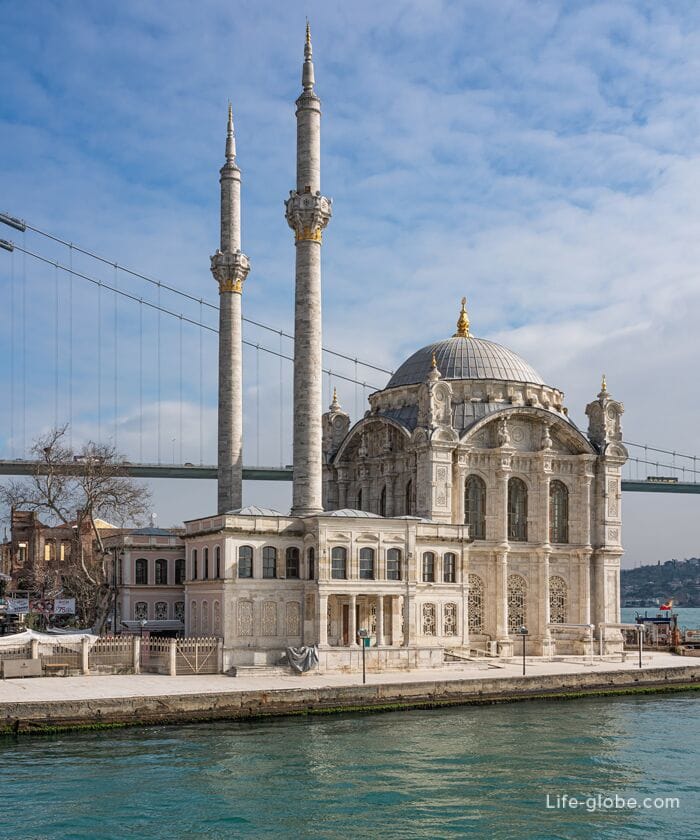
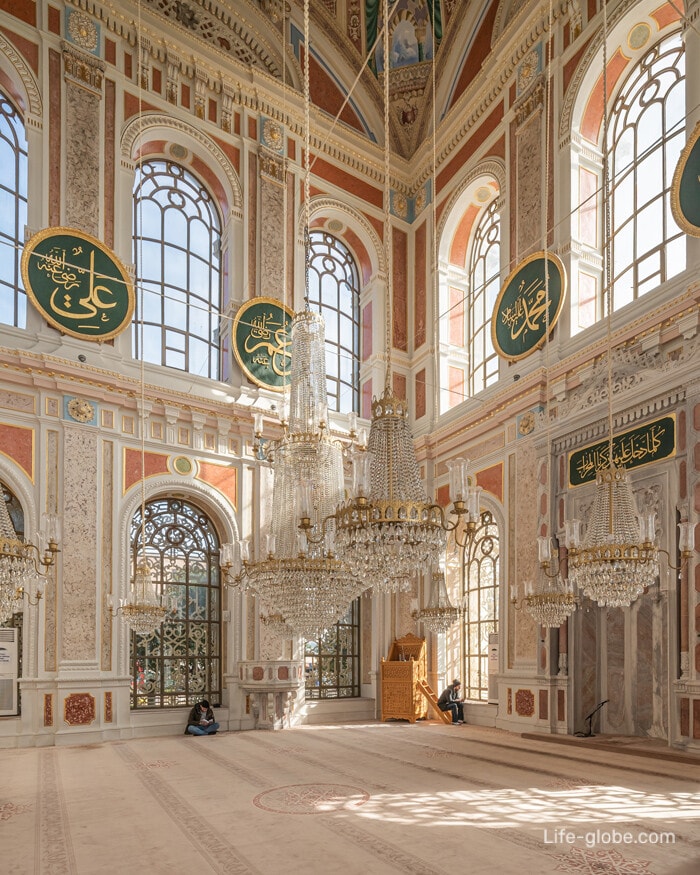
Not far from Ortakoy there is a beautiful small quiet park Ulus (Ulus Parkı), located on a hill and offering panoramic views of the Bosphorus.
The park has panoramic cafes, places for walking and relaxing. Learn more about Istanbul parks and gardens...
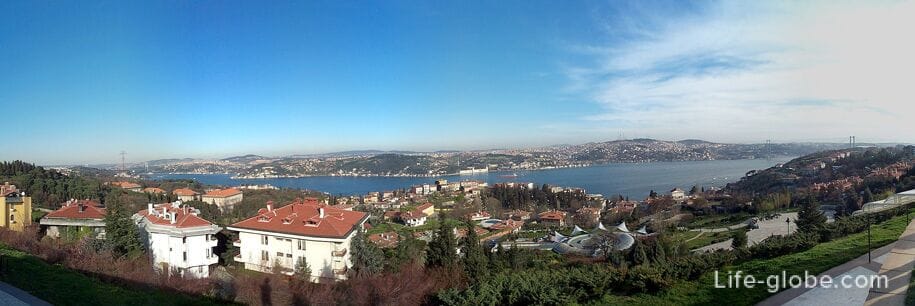
Şişli is a large district of Istanbul, located in the European part of the city.
Today, the Shishli district is more of a business and commercial district, with wide streets and tall buildings, offices, shops, boutiques and shopping centers, including one of the largest shopping and entertainment centers in Europe - "Cevahir" (Istanbul Cevahir Alışveriş Merkezi).
The main shopping street of Shishli is considered to be Abdi Ipekci Street (Abdi Ipekçi Caddesi).

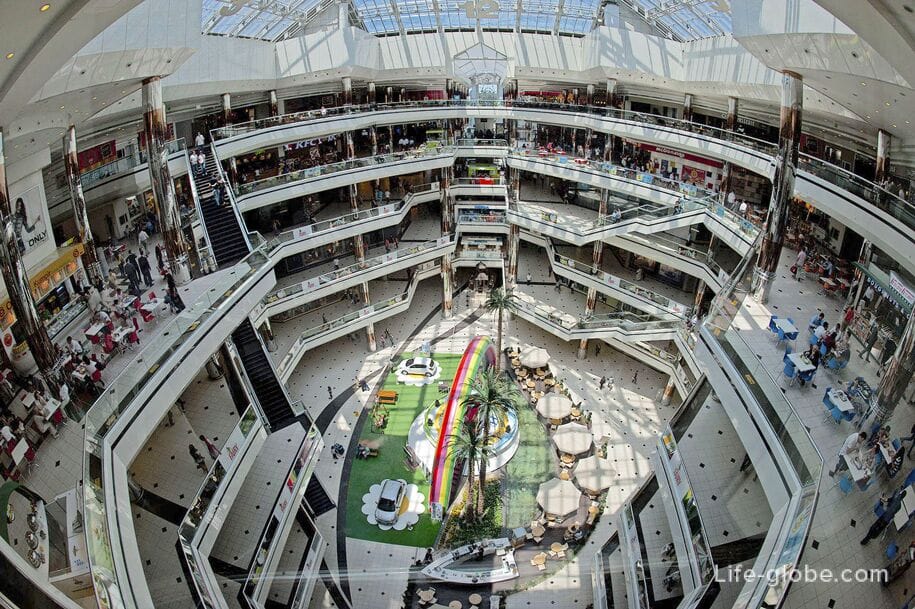
In the area of Shishli are notable:
- Ihlamur (Ihlamur Kasrı) is a former summer residence of the sultans of the Ottoman Empire, used for recreation, and built in 1849-1855 by order of Sultan Abdul-Majid I.
Today it is a museum with a magnificent interior palace decoration with halls and rooms and the surrounding garden and forest area with a lake.

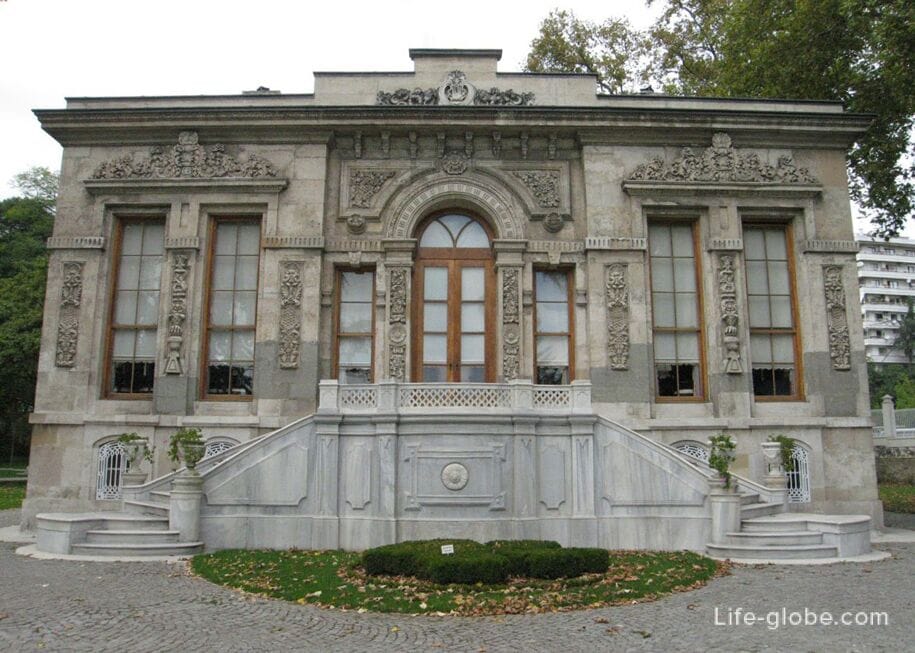

- Istanbul Military Museum (Harbiye Askeri Muze ve Kültür Sitesi Komutanlığı), telling about the Turkic military history from the first ancestors of the Turks up to modern Turkey.
The museum consists of more than 20 halls in which exhibits of historical weapons, uniforms, tools of various periods of the army, camping tents, standards, etc. are exhibited.;
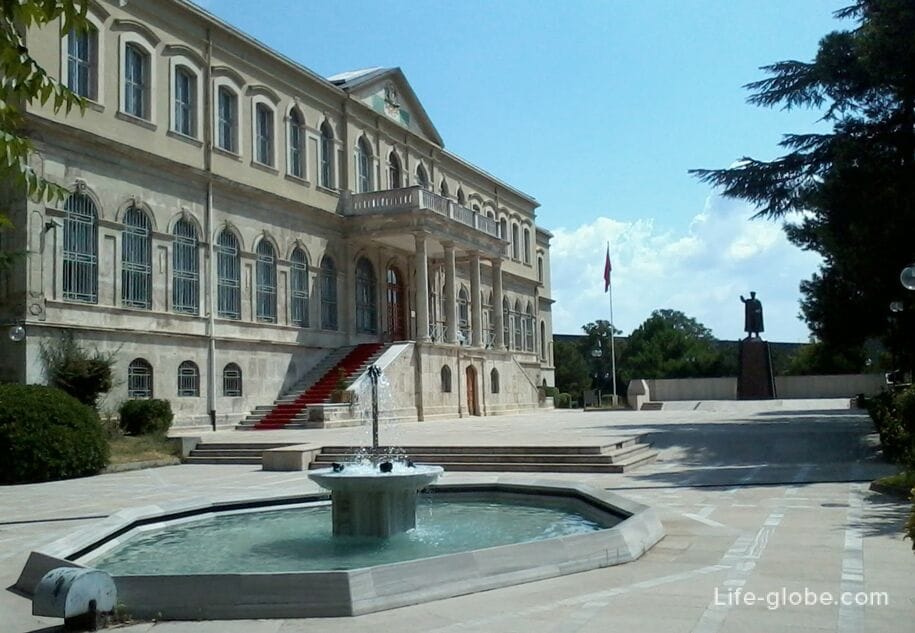
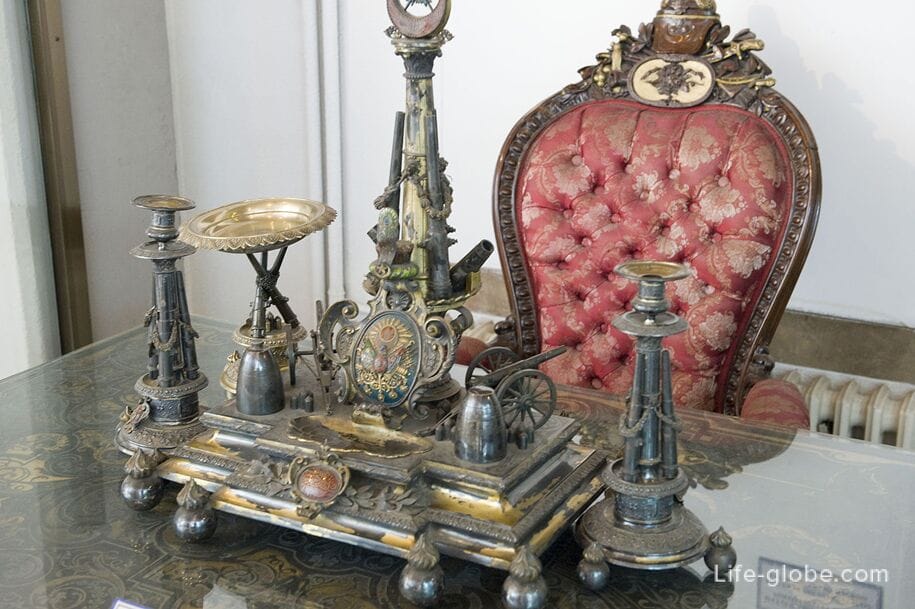
- The Ataturk House Museum (Atatürk Müzesi) is a museum dedicated to the life of the first president of Turkey - Mustafa Kemal Ataturk.
The museum presents Ataturk's personal belongings, such as clothes; there are collections with paintings, medals and other exhibits;
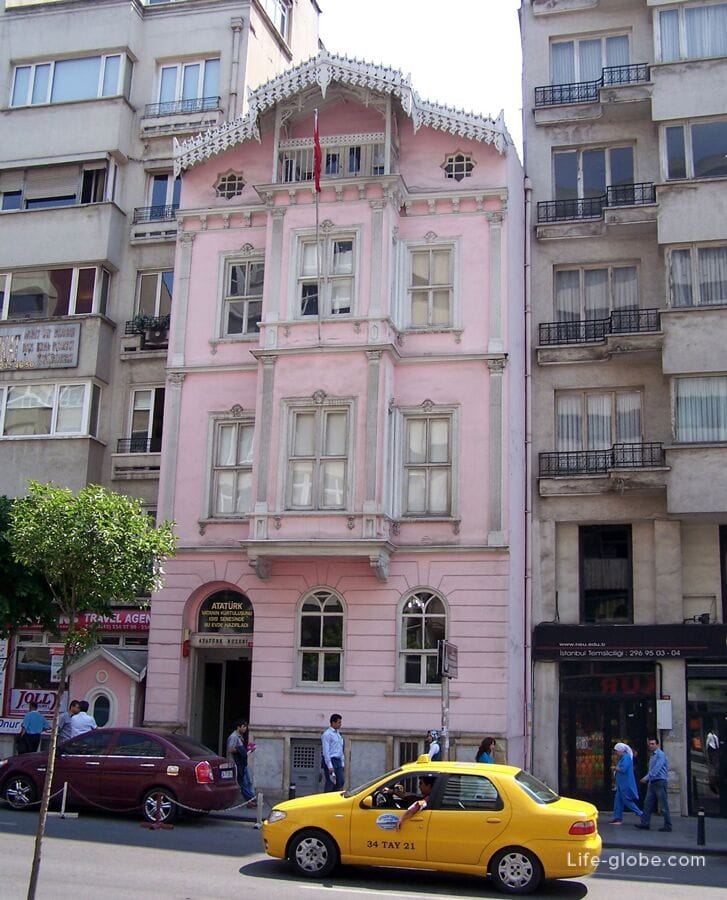
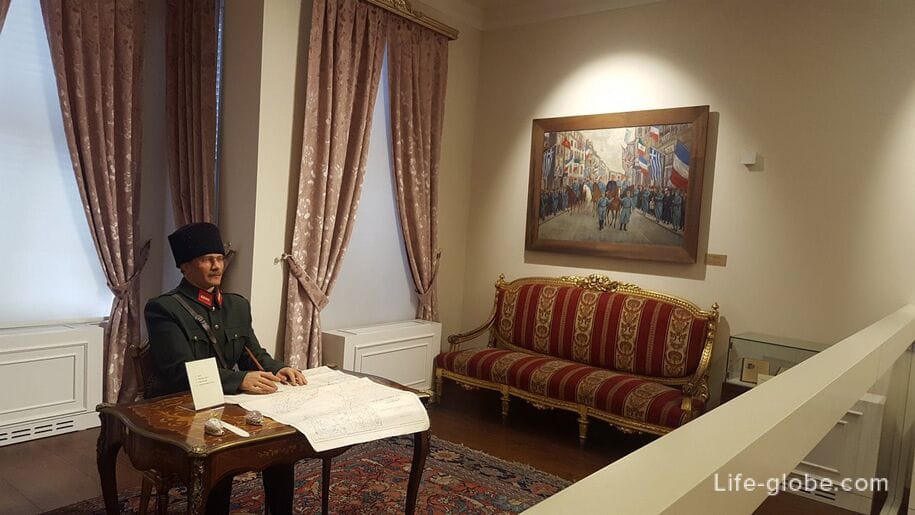
- Monument of Freedom or Monument of Eternal Freedom (Hürriyet Anıtı, Abide-i Hürriyet), which is a monumental memorial in honor of the soldiers who died defending the Ottoman Parliament from rebel forces during the incident on March 31, 1909.
In addition to the monument itself, the complex also contains the graves of soldiers killed in the incident on March 31, and four high-ranking Ottoman officials;
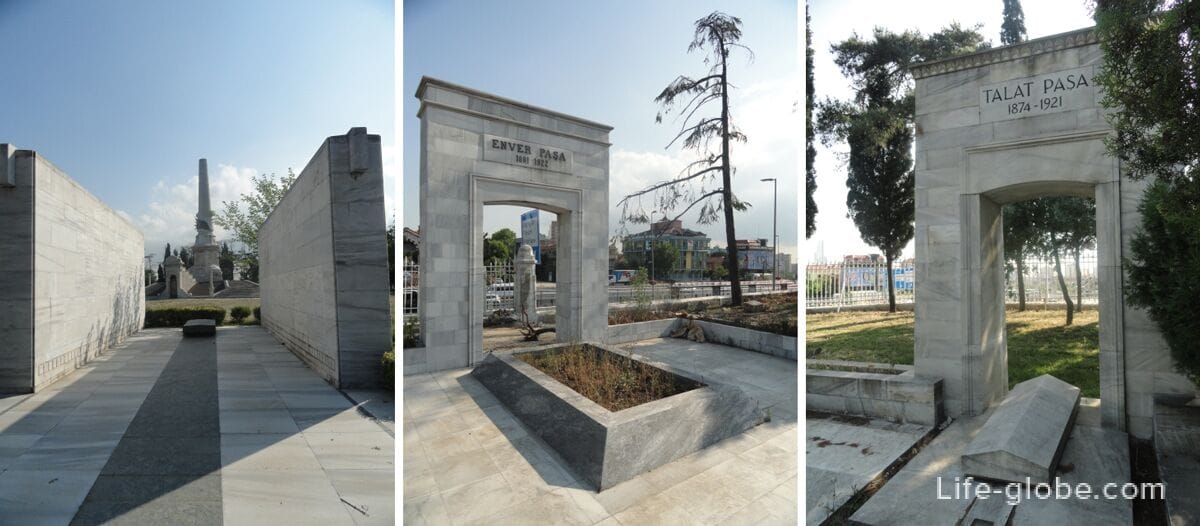
- Museum of Military History (Hisart Canlı Tarih ve Diorama Müzesi) - Museum of military history and cultural heritage of the Ottoman Empire of 1453-1923.
The museum exhibits military and ethnographic historical artifacts of the Ottoman period of 1453-1923, as well as dioramas and mannequins depicting the corresponding periods of history. More about the Shishli district...
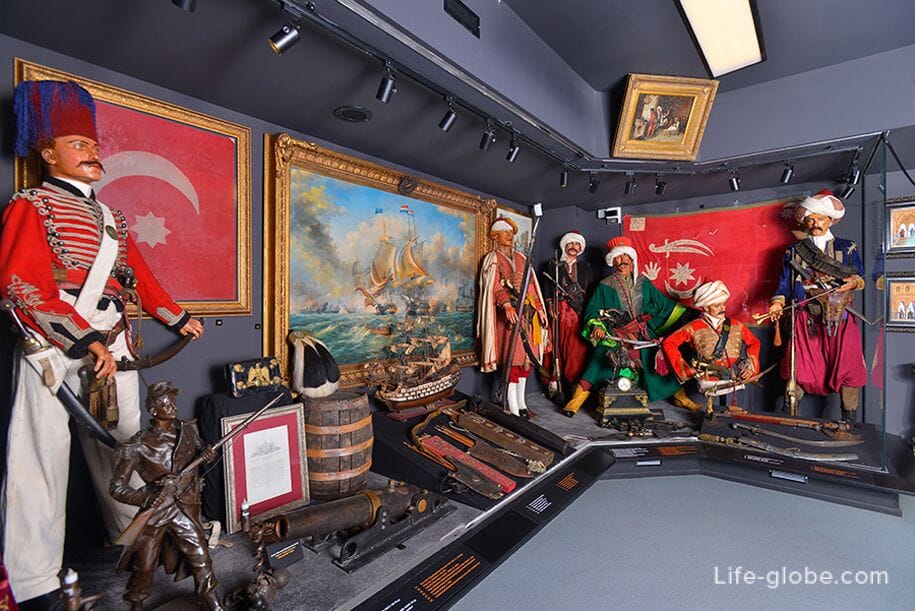

The Golden Horn (Altın Boynuz or Haliç / Halic) is a large body of water in Istanbul, which is a narrow curved bay (bay) connecting to the Bosphorus Strait at the point where the Bosphorus meets the Sea of Marmara. More about the Golden Horn...
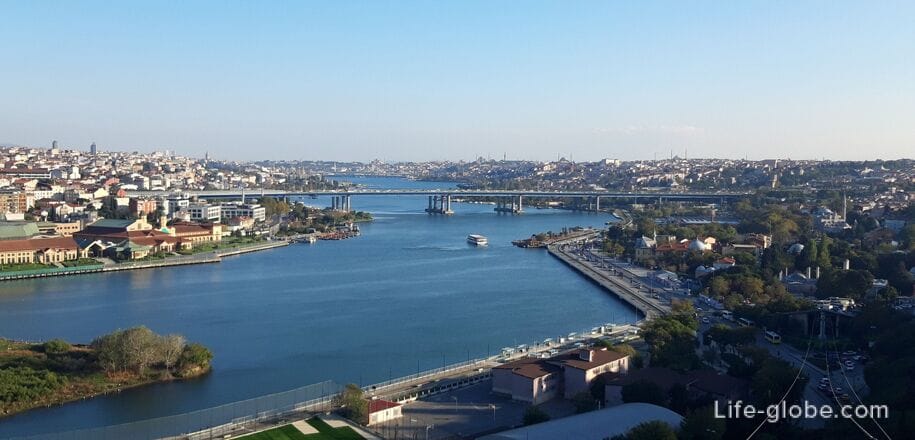
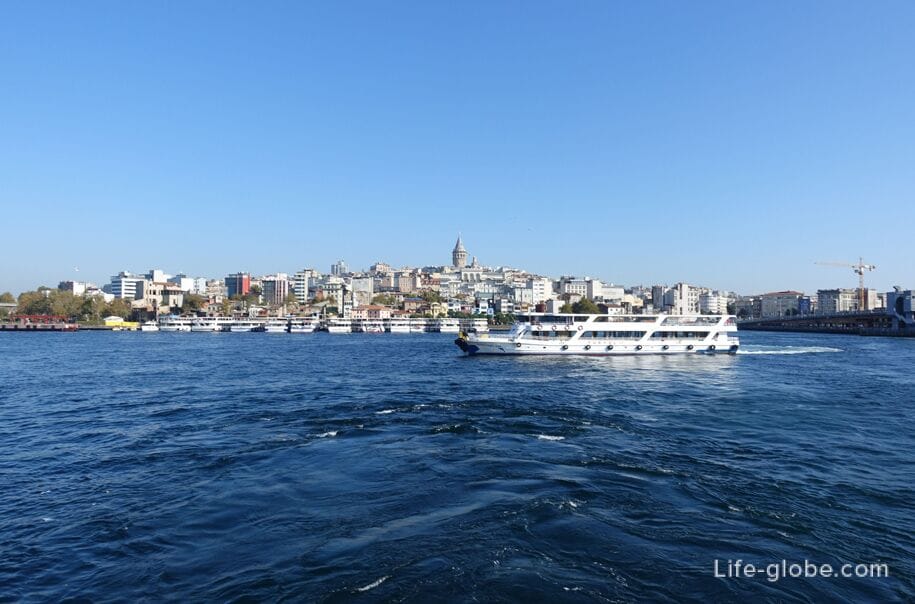
The Bosporus (Bosfor, Bosporus, Istanbul Boğazı / Istanbul Bogazi) is a strait in Istanbul and the surrounding area, which is an intercontinental strait dividing Europe and Asia, as well as connecting the Black Sea with the Marmara.
The Bosphorus is crossed by the Bosphorus bridges, and along its waters there are walking embankments, there are park areas, cafes and restaurants, as well as accommodation facilities (hotels, apartments)
The Bosphorus is one of the main attractions of Istanbul and its "breath", filled with the cry of seagulls, the sound of waves, pleasure boats, and attractive buildings, including historical palaces, fortresses, mosques and yalas (mansions built directly on the shore), are located on both sides of the Bosphorus. Learn more about the Bosphorus...
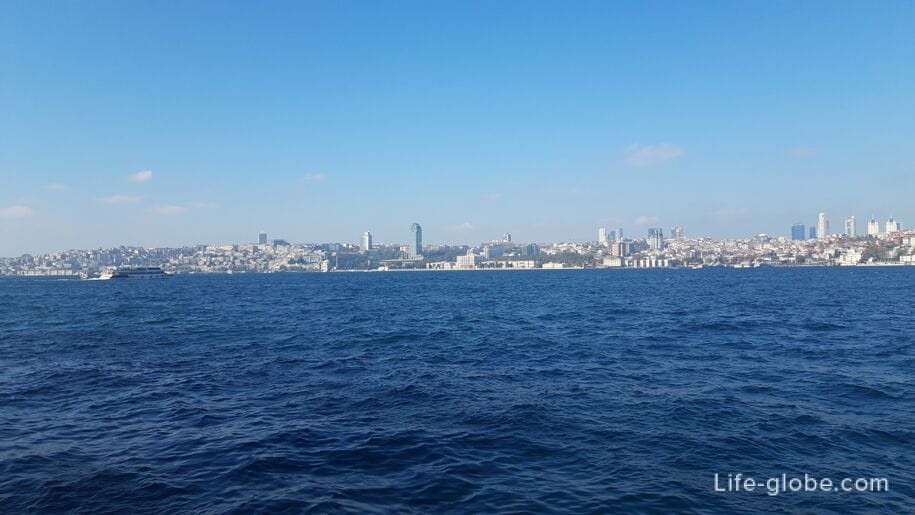

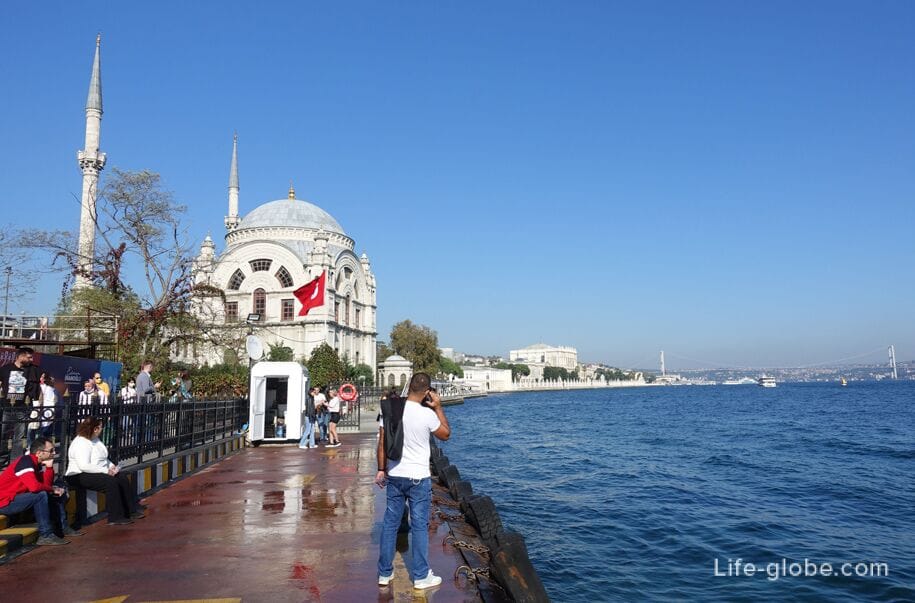
Small ferries and yachts ply the Bosphorus Strait and the Golden Horn Bay.
You can enjoy the views of the Bosphorus and the Golden Horn, as well as their shores from the water, by taking an excursion walk through the reservoirs of Istanbul, or from ferries that function as public transport in Istanbul (Istanbul transport cards operate) and connect both the shores of the Bosphorus and the Golden Horn themselves, and the Bosphorus with the shores of the Golden Horn. Ferry berths are located both on both shores of the Bosphorus and the Golden Horn Bay.
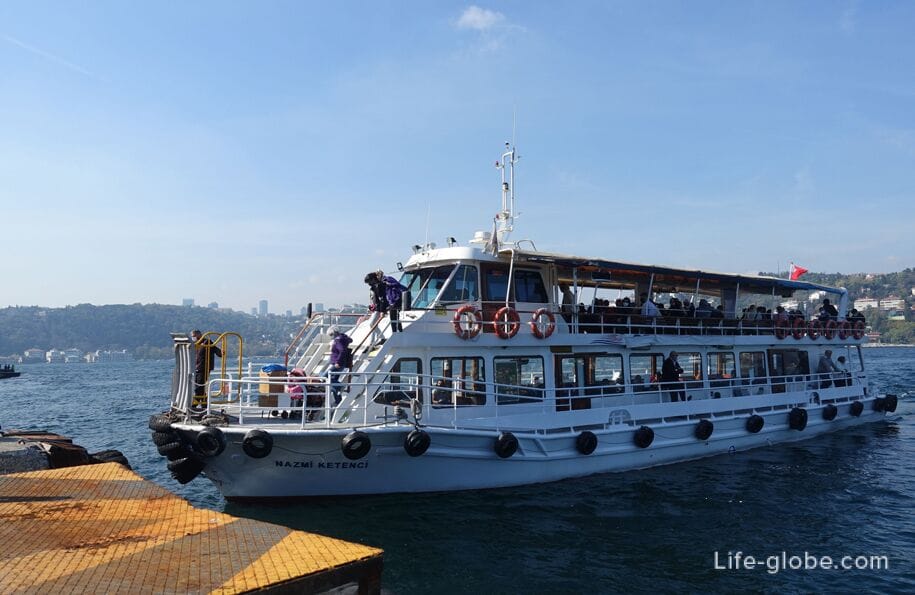
Popular ferry routes on the waters of the Bosphorus and the Golden Horn run from- to ferry berths: Eminönü, Karaköy, Kabataş, Üsküdar and Kadıköy.
However, the most relish with non-trivial Istanbul can be seen by taking a ride on ferries plying the Bosphorus from pier to pier, located above the Bosphorus Bridge. Here small ferries connect the European and Asian sides of Istanbul, and due to the fact that in this place the districts of Istanbul are spread out on hills and have elegant low-rise buildings, the views of the areas opening from the waters of the Bosphorus are simply amazing, and the areas look like tiny fairy-tale villages, whose houses come close to the water.
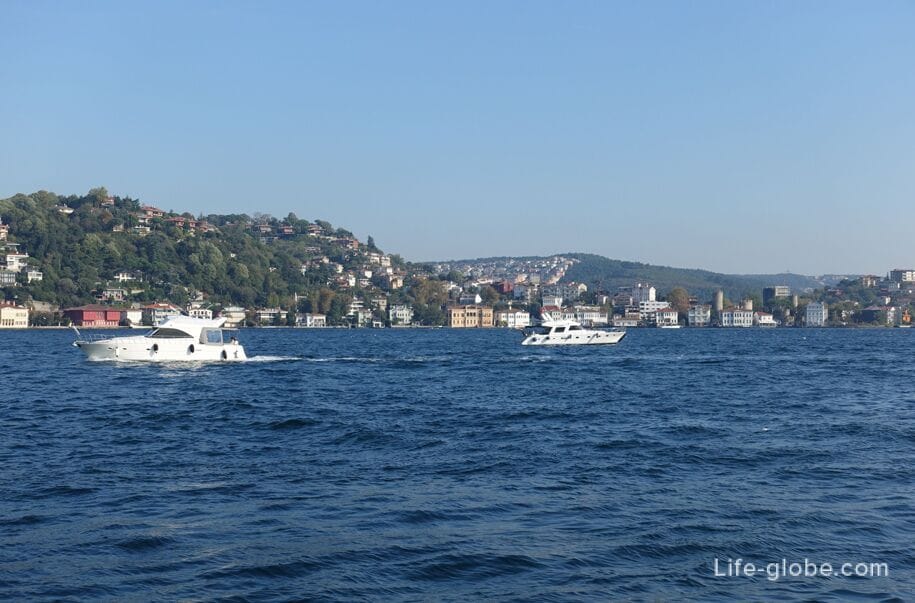

So, by ferry, or land public transport, you can visit:
- Arnavutköy and Bebek districts (Arnavutköy, Bebek) are two historical districts (quarters) that are elite and one of the most picturesque areas of Istanbul.
Arnavutkey and Bebek border each other (one area flows smoothly into another) and are located along the waters of the Bosphorus Strait.
The districts attract attention with elegant low historical buildings, narrow streets and an abundance of catering;
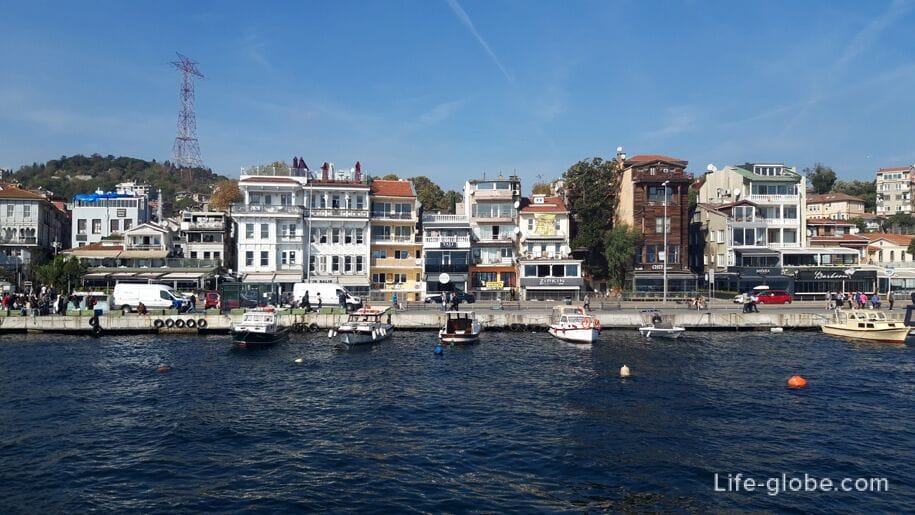
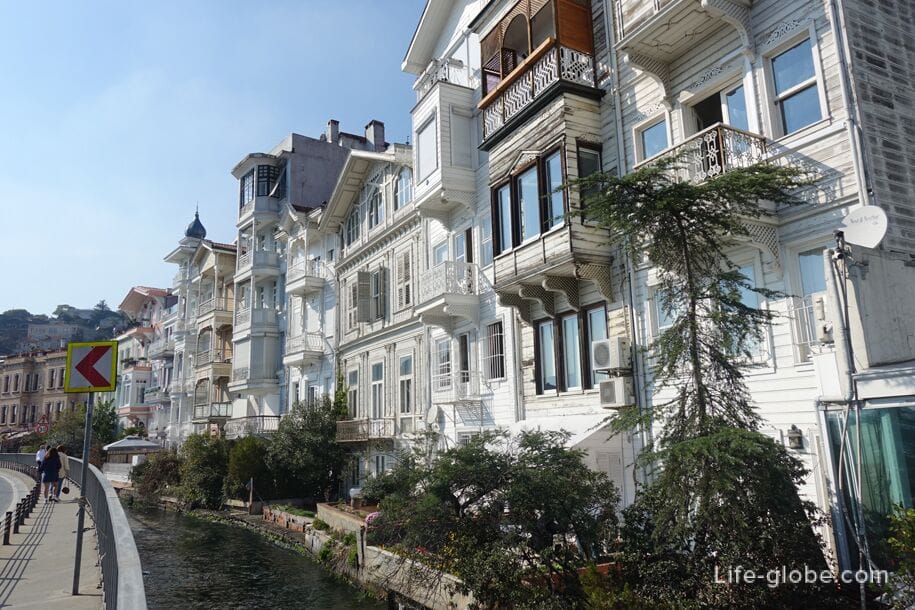


- Rumelihisar Fortress or Rumeli Hisarı (Rumeli Hisarı) is a medieval fortress, which is now one of the most striking former fortifications and defensive sights of Istanbul, as well as a museum surrounded by defensive walls with towers and gates.
There are hiking trails on the territory of the fortress, there is a functioning mosque and a small cistern. The fortress offers panoramic views of the Bosphorus and the Asian part of the city;

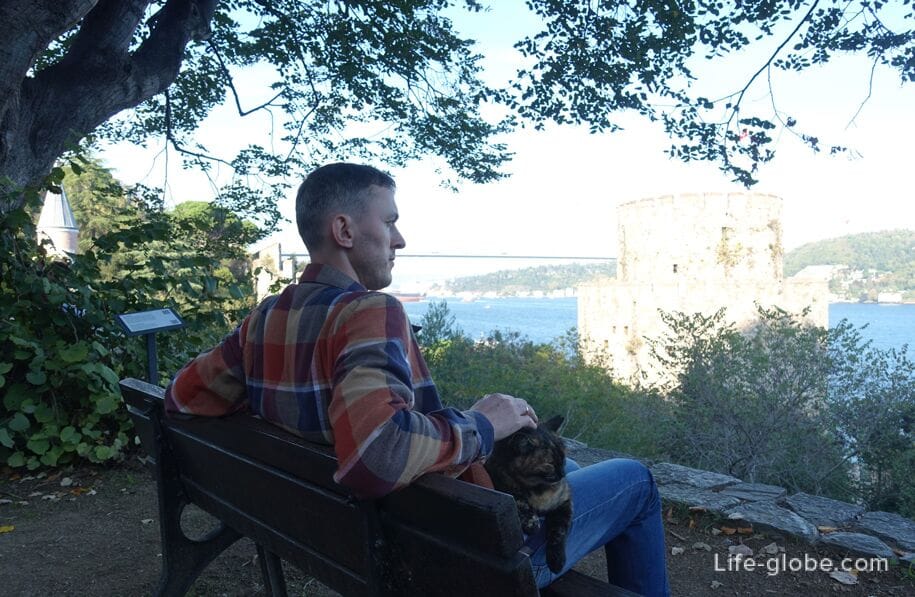
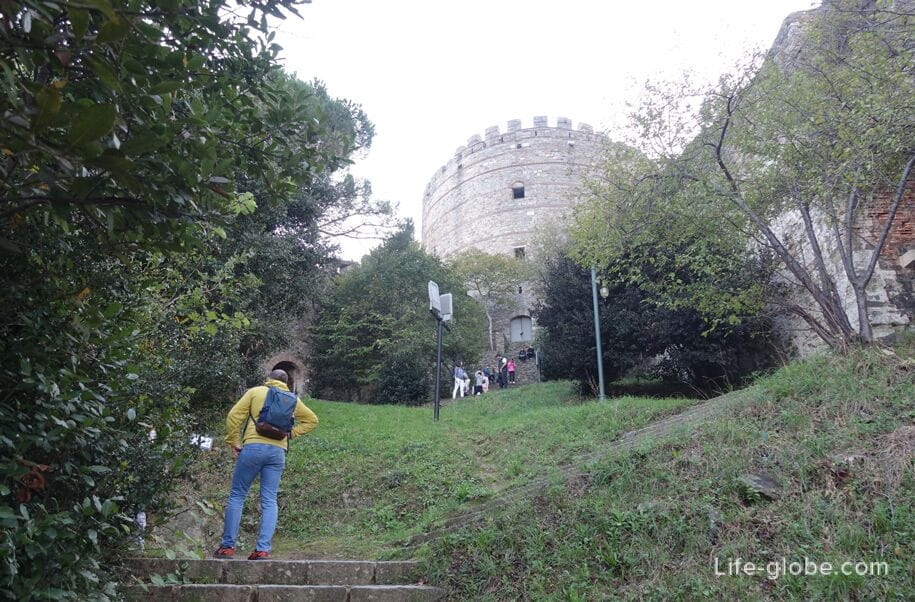
- Doatepe Panoramic Park (Dogatepe Parki), which is located above the Rumelikhisar Fortress and is notable for being located on a hill. There is a playground in the park, which offers beautiful views of part of Istanbul, including the Bosphorus Strait and the Asian side of the city;
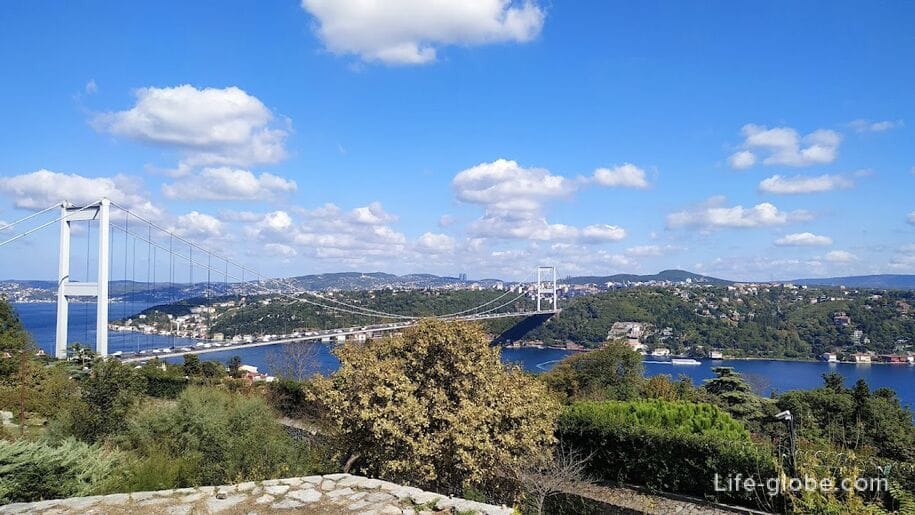
- Otagtepe Fatih Park (Otagtepe Park), which is located on the Asian side of Istanbul and is a very popular place, mainly due to the fact that the park is located on Otagtepe Hill and offers beautiful panoramic views of the Bosphorus Strait and the European side of the city.
In the park: walking paths, lawns, recreation areas, picnic areas and gazebos, observation terraces, a small pond with turtles;
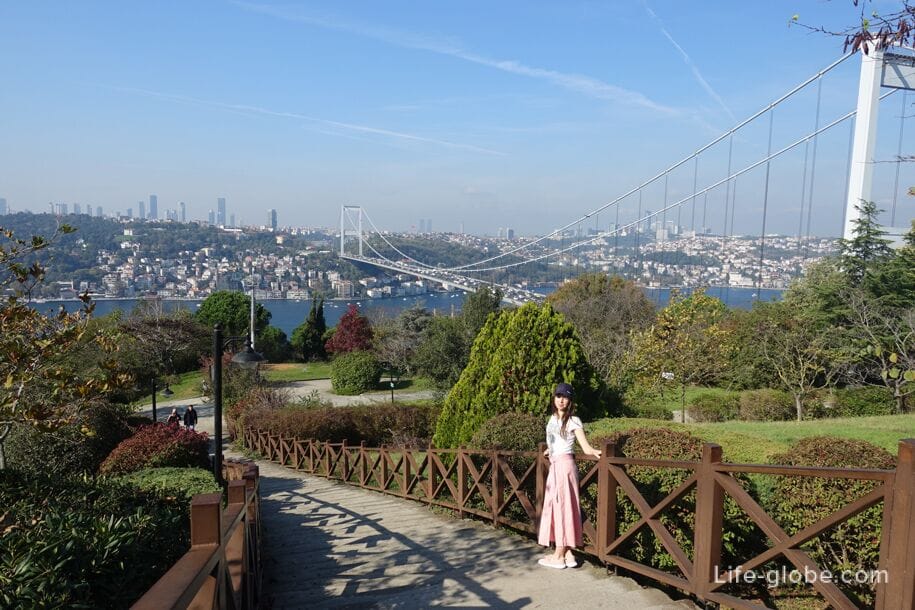

The fortress was built in 1393-1394 as a guard fort in the narrowest part of the Bosphorus Strait under the Ottoman Sultan Bayezid I.
Today, only a part of the fortress remains, and it is clearly visible from the Bosphorus and the nearby street;
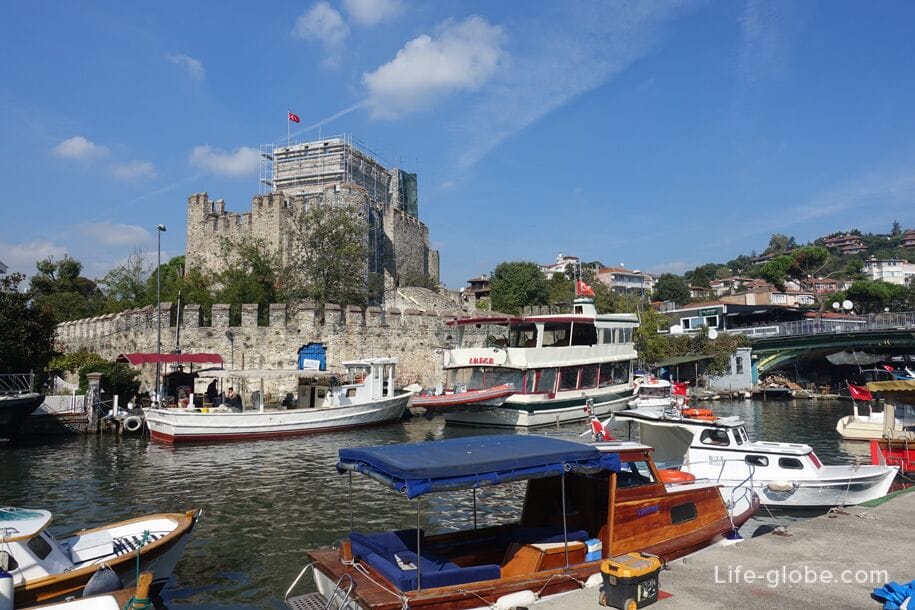
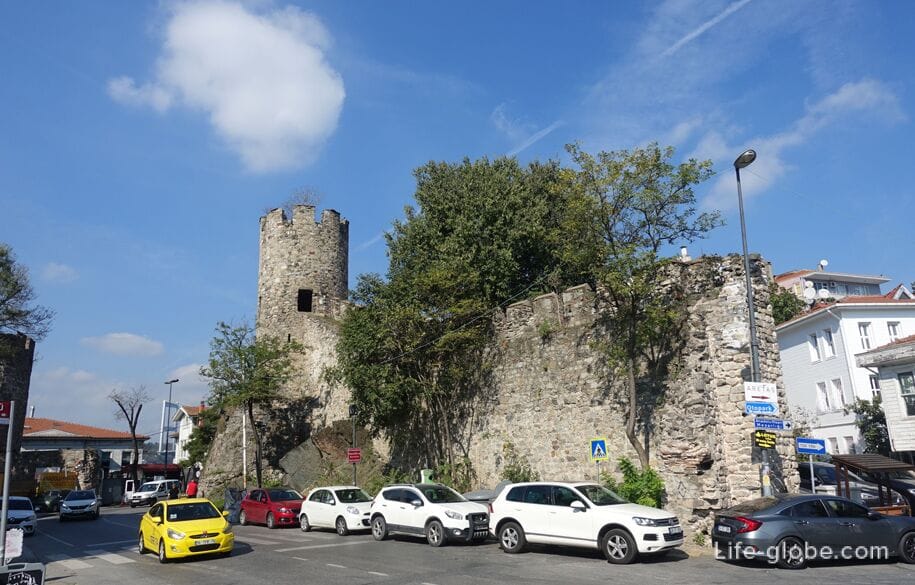
- Küçüksu Palace (Küçüksu Kasrı) is a neo-Baroque palace that served as the summer residence of the sultans of the Ottoman Empire.
This miniature palace was built in 1857 by order of Sultan Abd-ul-Majid I. The construction of the palace was carried out on the site of a two-story wooden palace built during the reign of Mahmud I.
Today, the Kyuchuksu Palace is a striking monument of the Ottoman Empire and functions as a museum with recreated palace interiors.
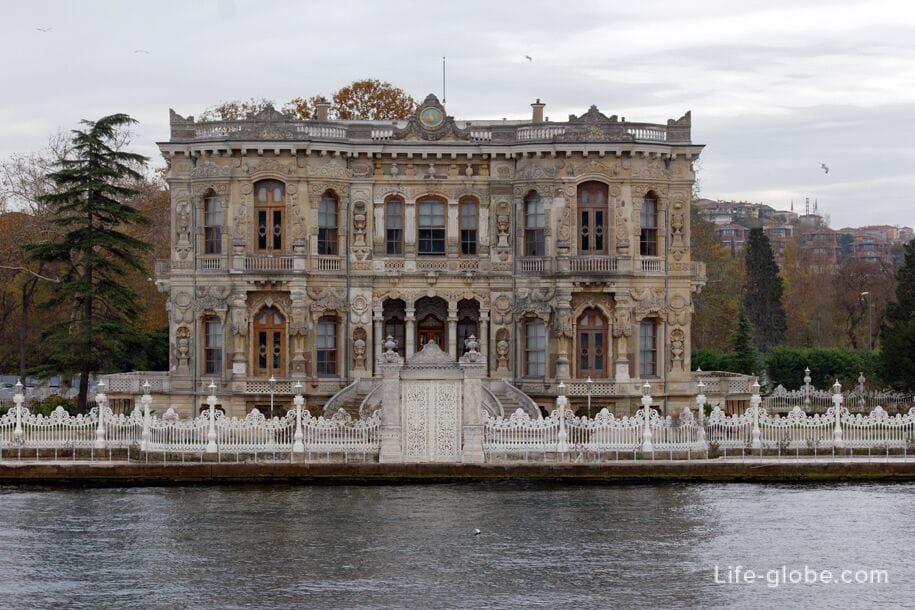
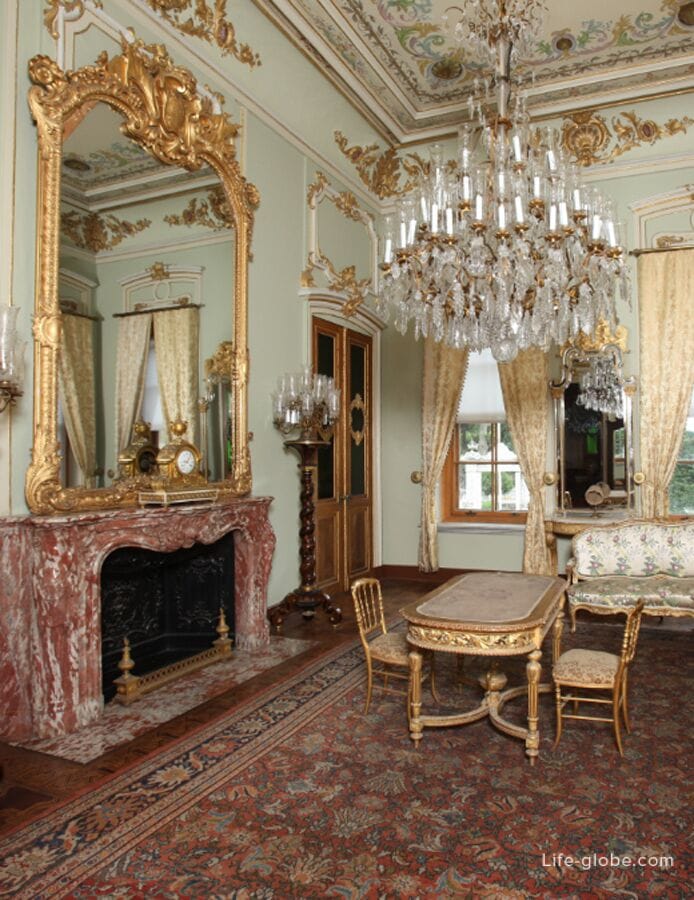
The heart of the Asian part of Istanbul is the large district of Usküdar, located near the waters of the Bosphorus.
Beautiful embankments stretch along the waters of the Bosphorus in Uskyudar. Also in the area there are parks with views of the Bosphorus and the European side of Istanbul; a theater in a converted industrial building (Istanbul Devlet Tiyatrosu Üsküdar Tekel Sahneleri), wall fountains, a shopping center, shops, markets, cafes, restaurants and accommodation facilities (hotels, apartments)
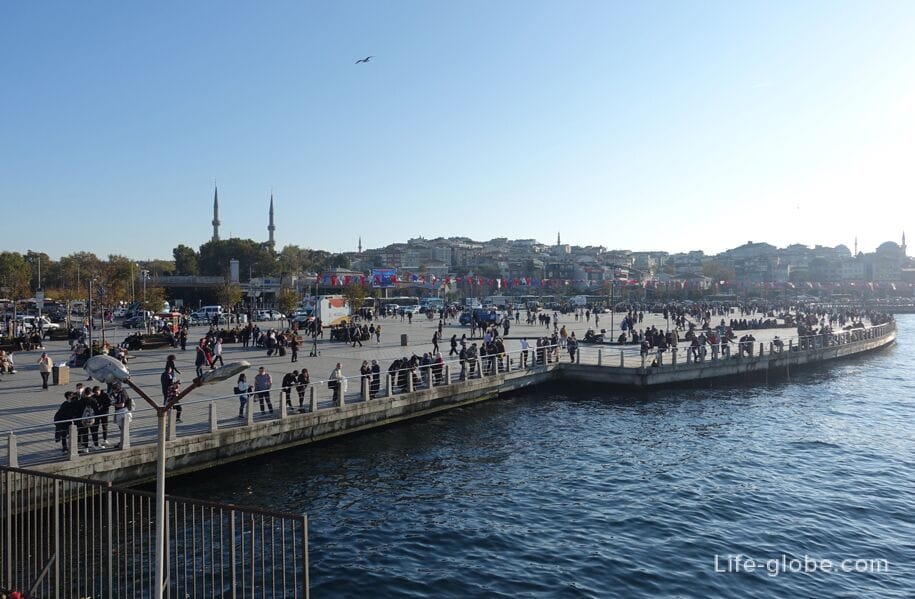
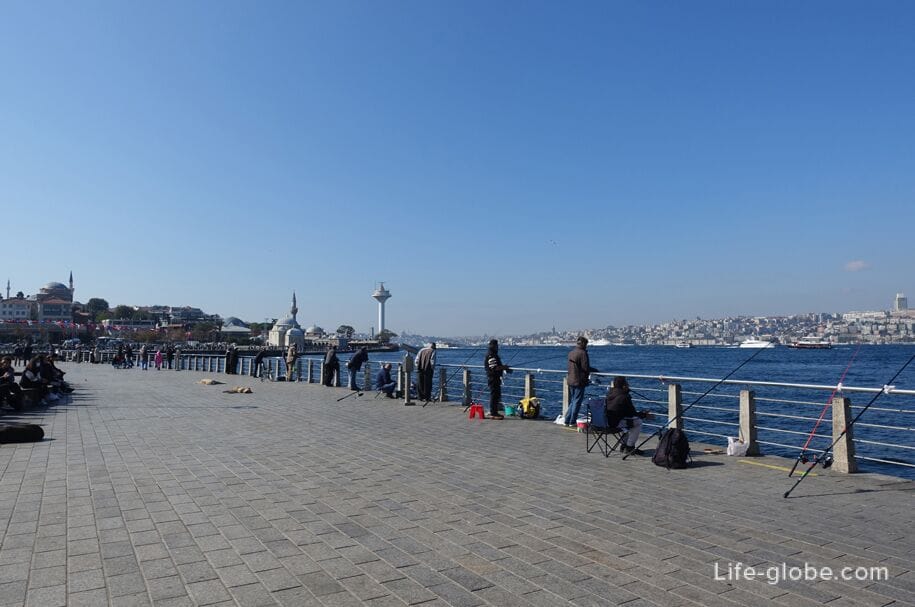
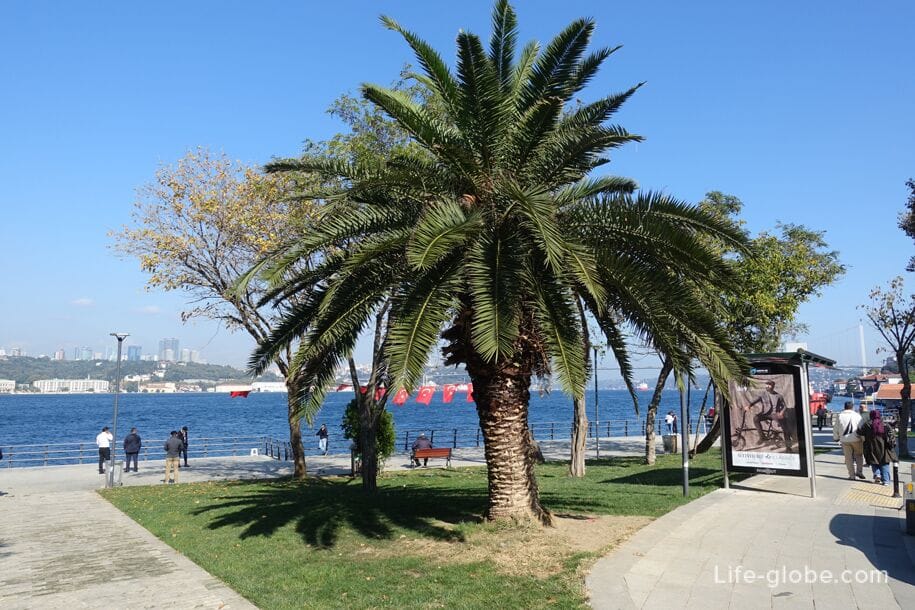
In the Uskyudar area , notable:
- Maiden Tower (Kız Kulesi) is a former lighthouse, which is now one of the main pearls and a symbol of Istanbul.
The tower is located on a small natural island in the waters of the Bosphorus Strait, a few meters from the shore of Uskyudar;
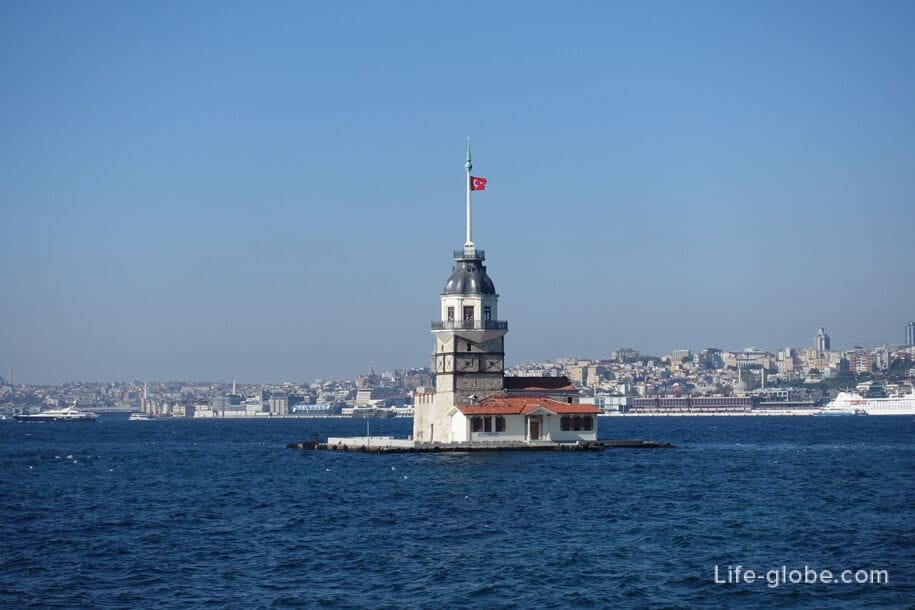
- The mosque of Shemsi Ahmed Pasha (Şemsi Ahmed Paşa Camii) is one of the masterpieces of Istanbul, which is located near the waters of the Bosphorus and is very photographed.
They say that birds never land on this mosque, and this is due to the fact that the architect of the mosque, Sinan, designed it so that the roof of the shrine was exactly at the intersection of the winds, which birds are not able to cope with.
The mausoleum of Shemsi Ahmed Pasha adjoins the mosque. The mosque complex also includes: madrasah, cemetery and courtyard. A minaret is attached to the southwest corner of the prayer hall;
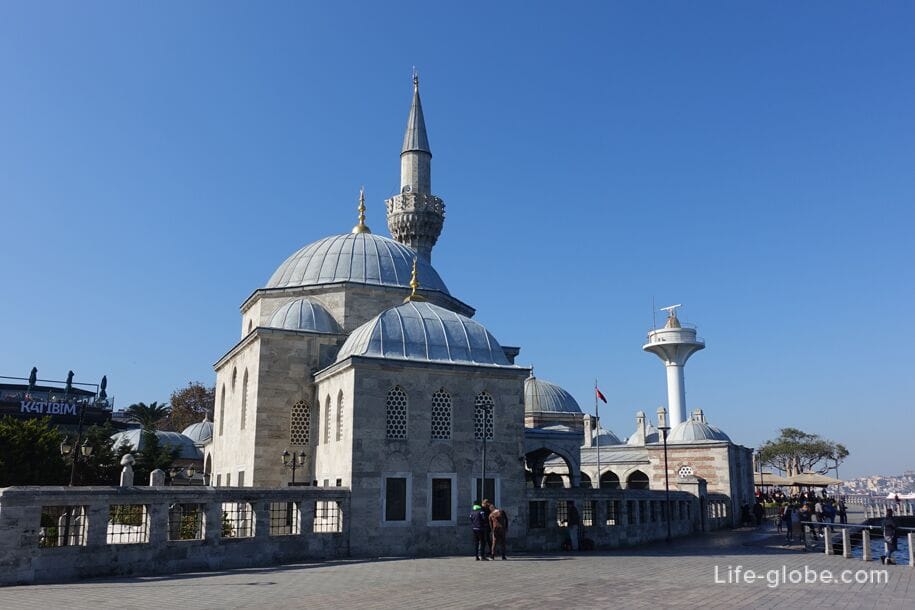
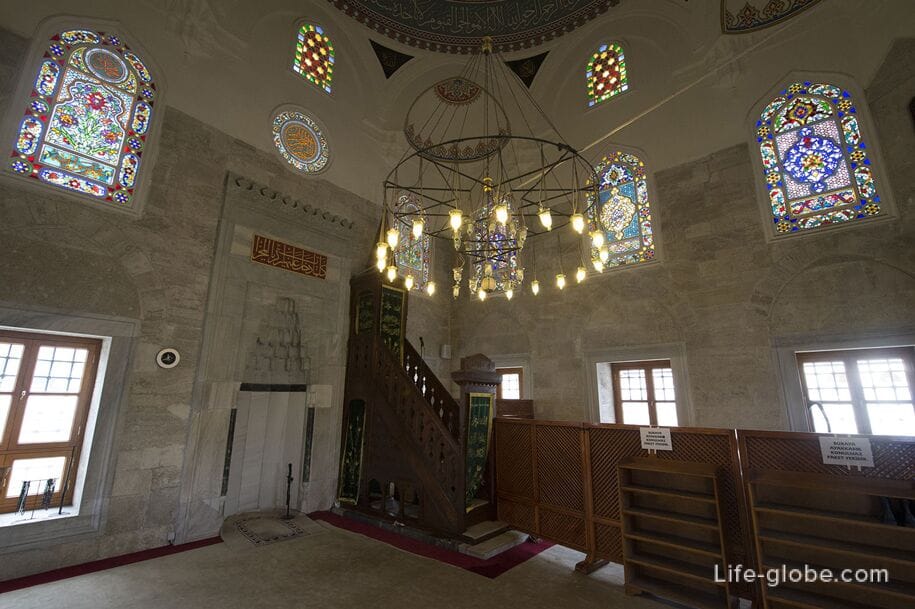
- monumental fountain of Sultan Ahmed III (Üsküdar III. Ahmet Çeşmesi), built in 1728-1729 in the Ottoman Rococo style by order of Sultan Ahmed III;
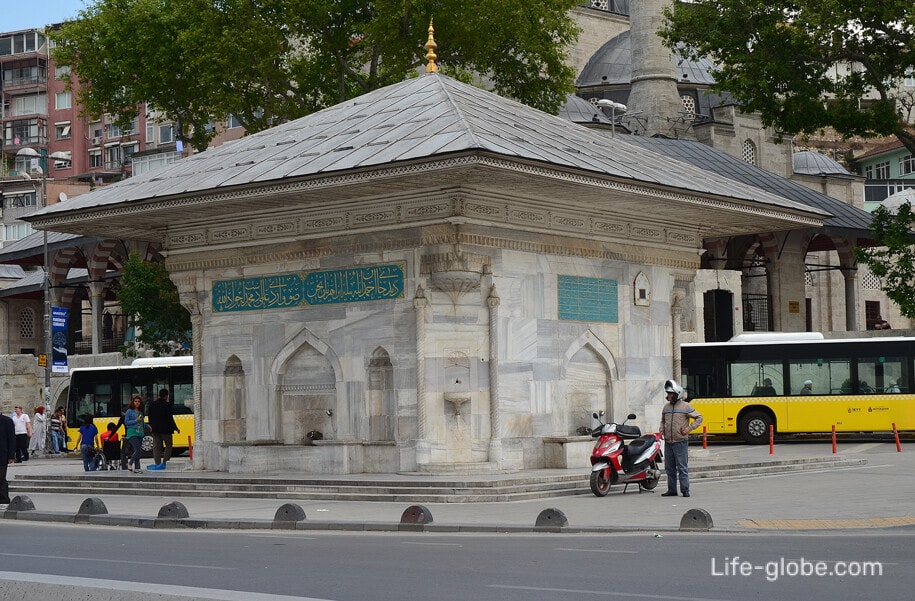
- The large hill of Chamlıca (Çamlıca Tepesi) on top of which is located the largest mosque in Istanbul - the mosque of Chalmıca (Çamlıca Mosque).
From the open terrace of the mosque and from the hill there are wonderful panoramic views of Istanbul;
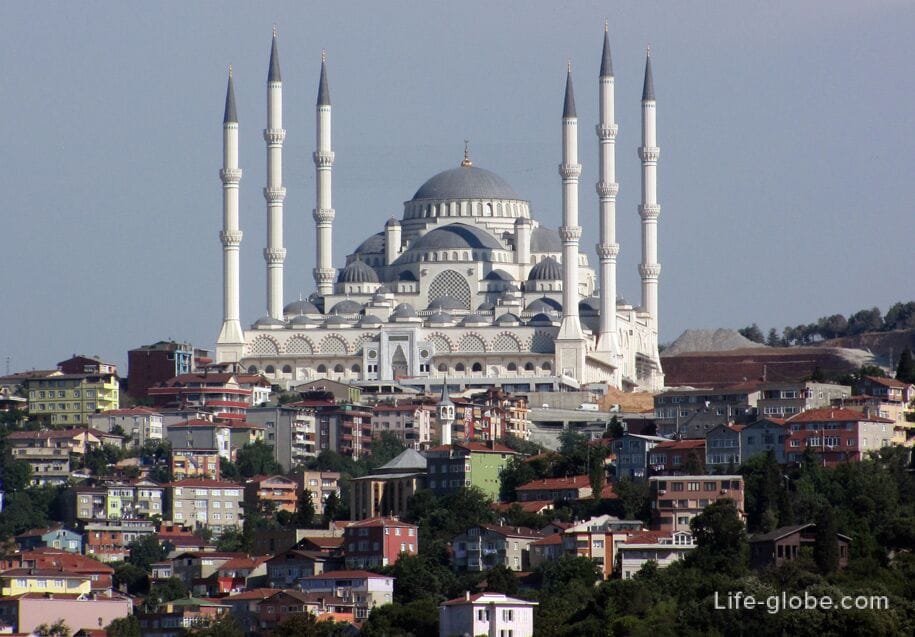


- Chamlyja TV Tower (Çamlıca TV Radyo kulyesi, Çamlıca Kulesi / Camlica Tower), which has modern architecture and a height of 369 meters (and 587 meters above sea level).
There is an observation deck in the tower, giving a 360-degree panoramic view of the whole of Istanbul and the surrounding area. There is also a panoramic cafeteria-restaurant in the tower;


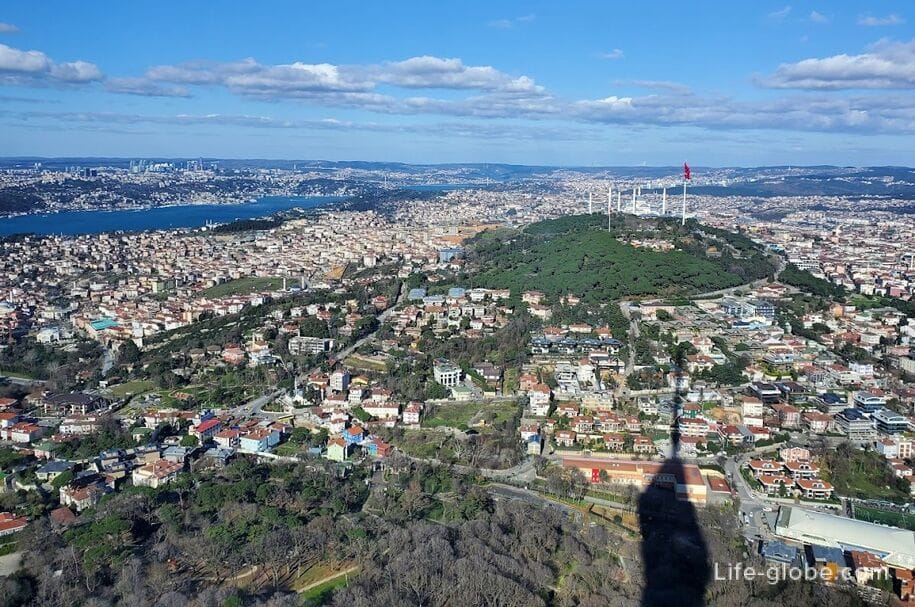
- Kuzgunchuk or Kusgunjuk (Kuzguncuk) is a colorful quarter (district) that is part of Uskyudar.
This is a small pleasant quiet area near the waters of the Bosphorus, which has a rustic atmosphere with streets built up, including old colorful wooden houses, parks, a museum, mosques, churches, small shops and seaside cafes.
There are also notable parks in the area: Nakkashtepe (Nakkaştepe Millet Bahçesi) and Fethi Pasha (Fethipaşa Korusu), which have places for walking, cafes, playgrounds and panoramic terraces;
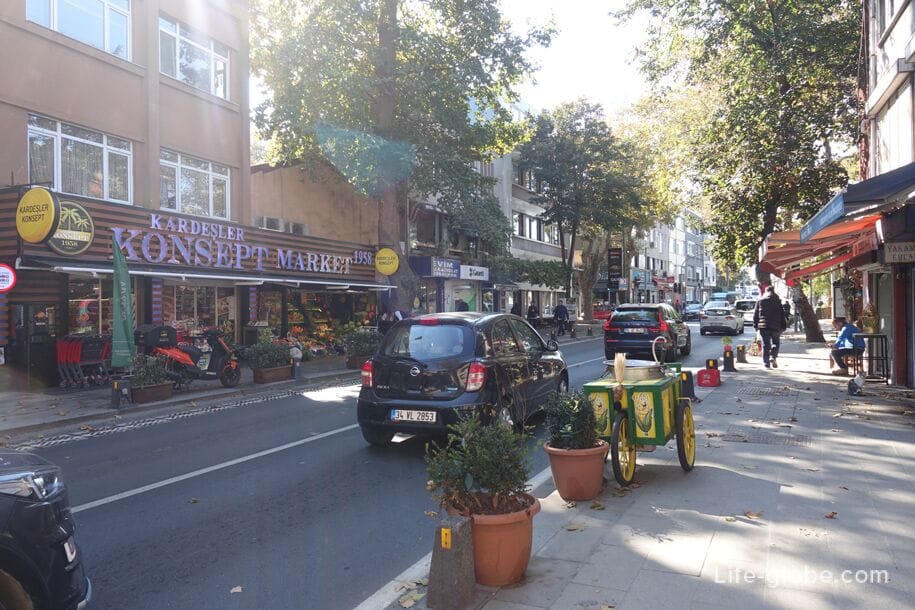
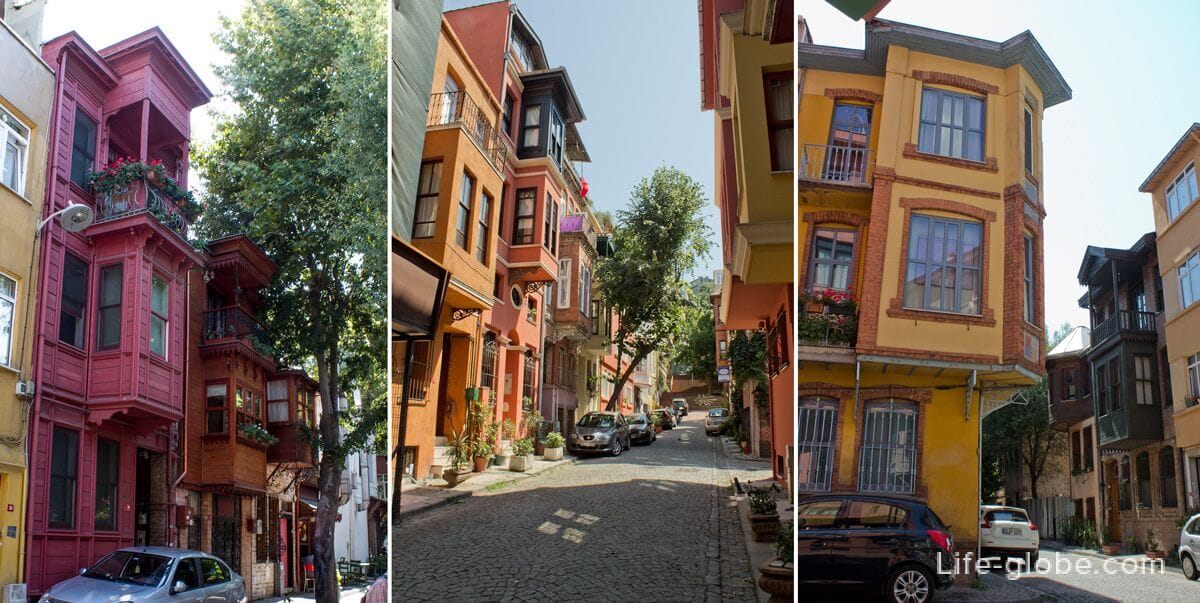
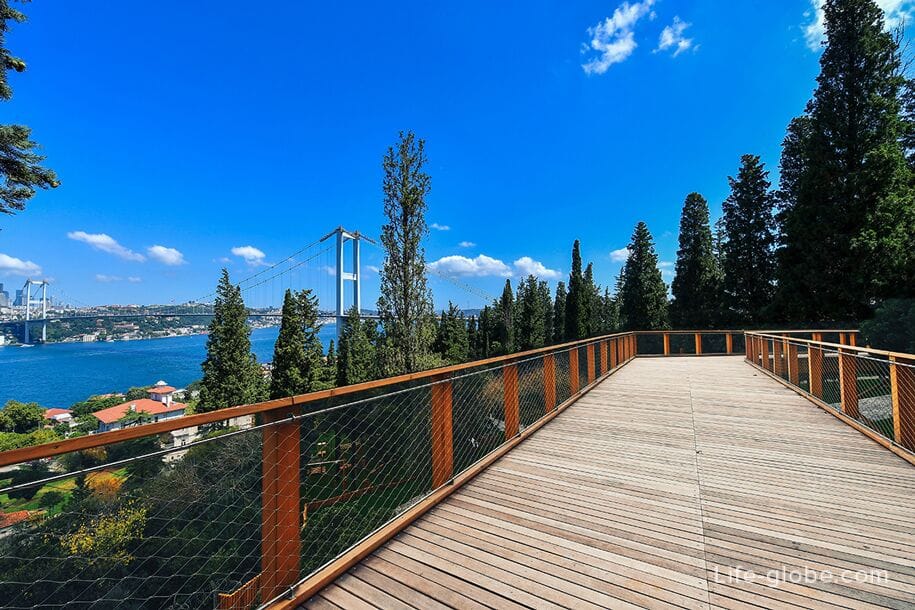
- Beylerbeyi (Beylerbeyi Sarayı) is a 19th-century palace in the Baroque style, which served as a summer residence and accommodation for high-ranking guests of the sultans of the Ottoman Empire.
Today the palace is a museum, which is a palace complex, which includes the main building of the palace with recreated interiors, as well as the surrounding garden with terraces, pavilions, sculptures, a fountain and a cafe.
The gardens of the Beylerbeyi Palace also attract attention by the fact that they have access to a terrace near the waters of the Bosphorus, which is used as an observation deck;
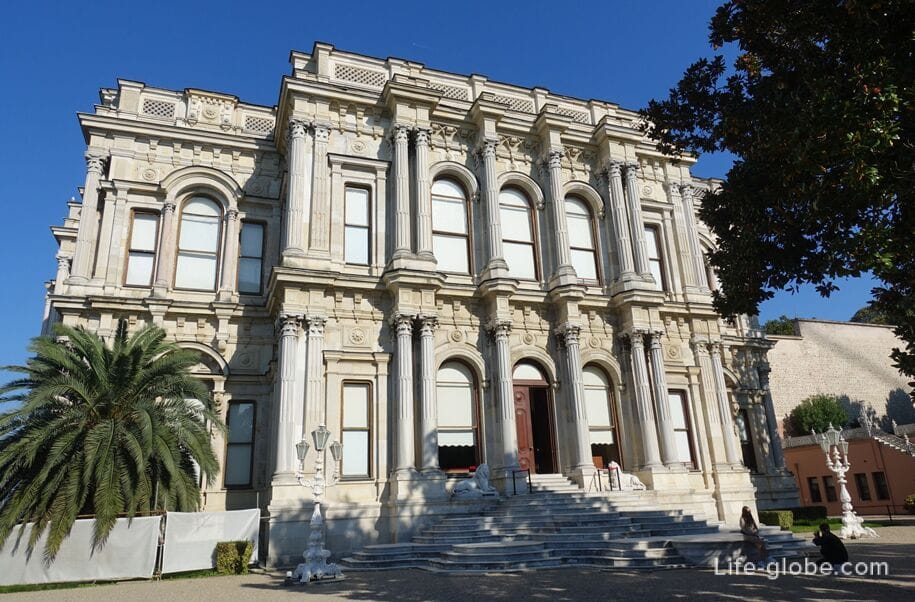



- Beylerbey Mosque or Hamid-i-Evvel Mosque (Beylerbeyi camii, Hamid-i Evvel Camii) is an 18th-century sultan mosque, which is one of the most impressive mosques on the Asian side of Istanbul and is considered one of the most beautiful manor mosques in the city.
The mosque building was built by Sultan Abdulhamid I in memory of his mother Rabia Sermi Sultan, in the place where part of the former Beylerbeyi Palace was located. The mosque opened its doors for worship on August 15, 1778. More about the districts of Uskyudar and Kuzgunchuk...
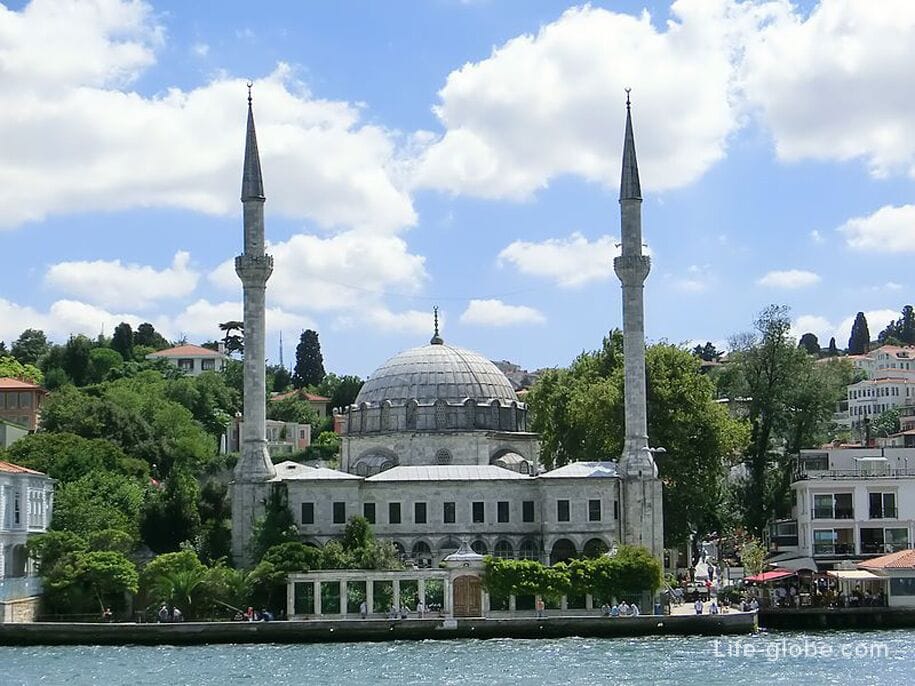
Behind the bridge (above from the historical center of Istanbul) Sultan Mahmad Fatih (Fatih Sultan Mehmet Bridge), spanning the Bosphorus Strait, both on the European and Asian sides of the city there are significant objects of Istanbul.
On the European side of Istanbul:
- Baltalimany Japanese Garden (Baltalimanı Japon Bahçesi) is a small beautiful botanical garden with sakura trees, roses and various types of shrubs.
The garden has a gazebo, a pond, a waterfall, a rock garden and a tea room.
The garden is especially recommended to visit during the cherry blossom season (late April -early May);
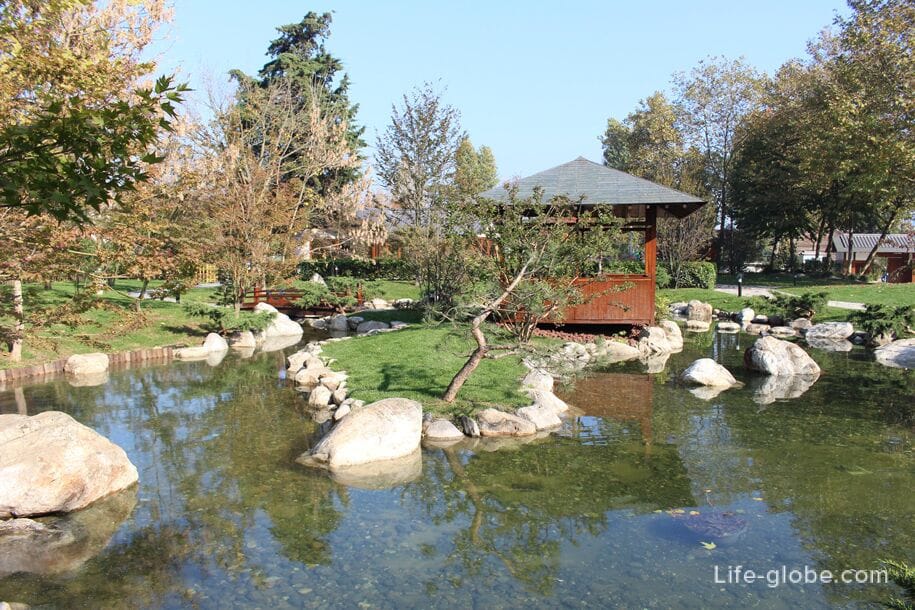

- Emirgan Park (Emirgân Korusu) is a large green public park with a variety of plants, ponds, a fountain, recreation areas, treadmills, a children's playground, sculptures, cafes, picnic areas, historical pavilions (Yellow, Pink and White), mosques and a tulip museum (Lale Müzesi).
Some points of the park offer views of the Bosphorus and the Asian part of Istanbul.
Emirgan Park becomes especially popular from the end of March to May (the month of April), when the Tulip Festival takes place in the city, the heart of which is this park, where numerous flowers decorate flower beds and form various compositions;

- Maslak Kasırları Pavilion is a former palace complex consisting of a garden and pavilions, and was used as a hunting residence and a resting place for the sultans of the Ottoman Empire.
Some of the structures of the palace complex have survived to the present day, while others have been demolished.
Today it is a museum with a cafe and a restaurant;
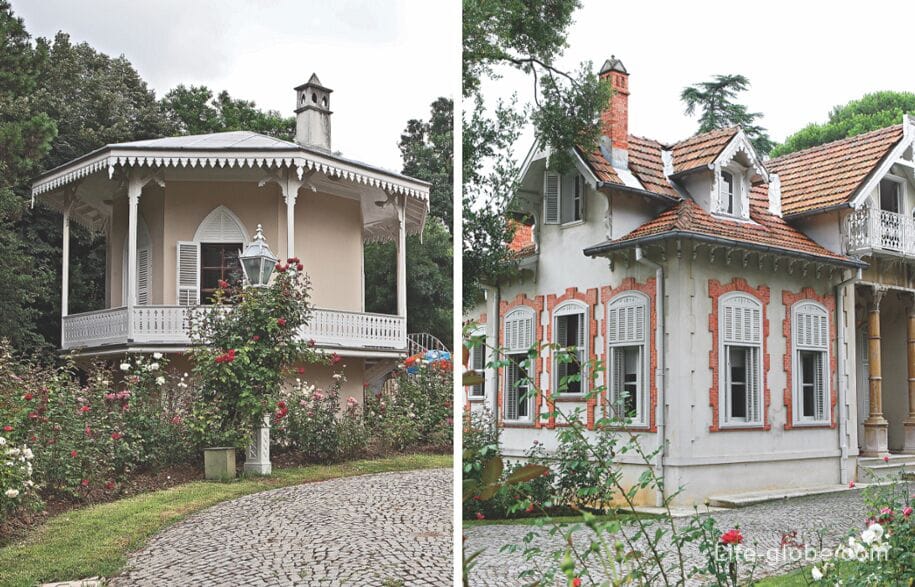

- Sakıp Sabancı Muzesi Museum is a museum of fine arts at Sabancı University, located in a historic mansion of the 19th century, where temporary and permanent exhibitions of Islamic calligraphy samples, paintings by Turkish painters, sculptures, some personal belongings of the Sabancı family, as well as documents of the state and religious history of the Ottoman era are presented;


- Sadberk Hanım Muzesi Museum with a private collection of ancient artifacts from the Ottoman Empire, paintings and furniture.
The museum occupies two separate buildings of charming 19th-century wooden villas in the European style.
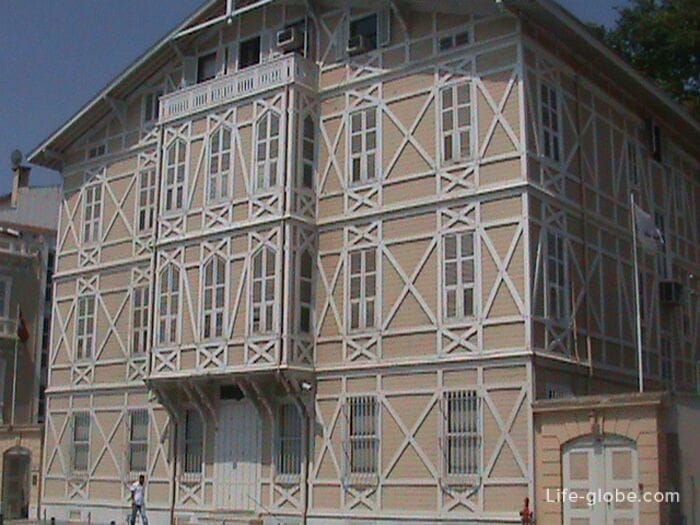
On the Asian side of Istanbul:
- The Hidiv Pavilion (Hidiv köşkü), built in the Art Nouveau style in 1907 by the last Khedive of Egypt, Abbas Hilmi Pasha.
The building has an Art Nouveau style with a tower overlooking the Bosphorus. In the center of the main entrance is a monumental marble fountain.
Today the pavilion has been restored and is surrounded by a garden. It is used as a restaurant for celebrations and a social institution;

- Beykoz Glass and Crystal Museum (Beykoz Cam ve Billur Müzesi), which is located in the restored historical barn building of the former residence of Abraham Pasha, who was a confidant of the Egyptian Khedive Ismail Pasha and received the title of vizier from Sultan Abdulaziz.
The building bears architectural features of the 19th century and it houses museum spaces with masonry and a Western-style structure, where developments of Turkish and European glass, porcelain and crystal are presented in 12 sections;
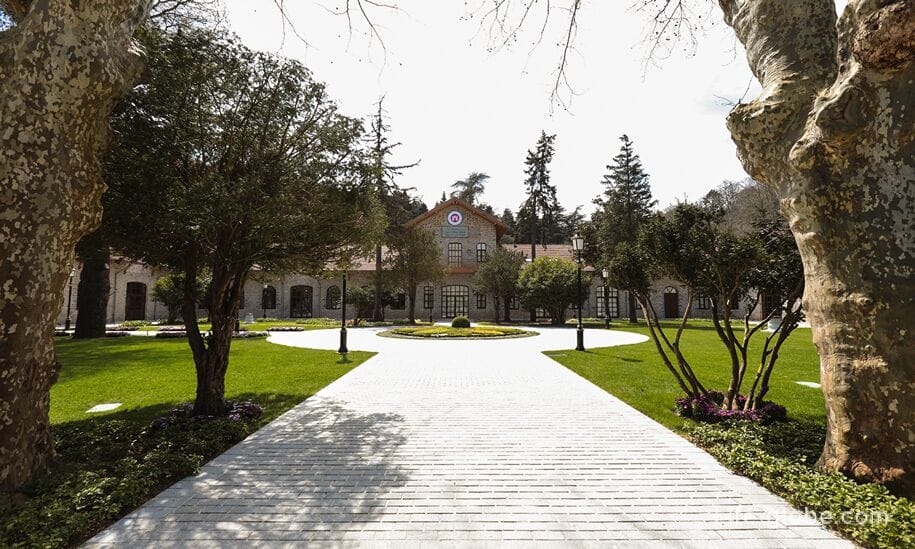
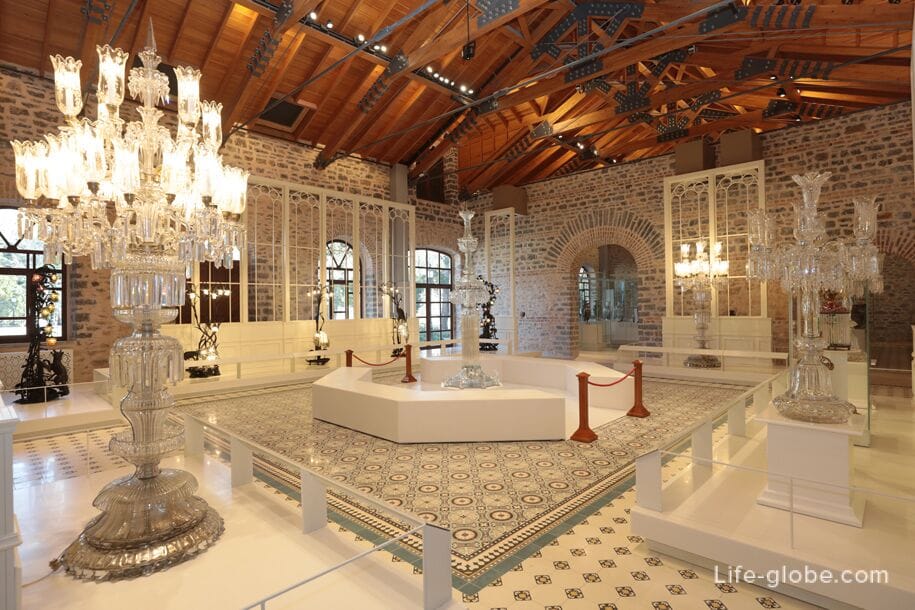
- Beykoz Medjidiye Mansion or Beykoz Palace (Beykoz Mecidiye Kasrı), which is one of the oldest pavilions in Istanbul.
The construction of the pavilion, which was started by the Egyptian Governor Mehmed Ali Pasha as a gift to Sultan Abdul-Majid in 1845, was continued during the reign of his son, the Egyptian Governor Said Pasha, after the death of Mehmed Ali Pasha in 1849. The complete construction was completed in 1854.
Today this two-storey pavilion is a museum and one of the most elegant historical mansions in the city. The mansion is located in surrounded by groves with terraces, magnolias, pines and lime trees. The palace park offers views of the Bosphorus.


On the southern side of the border of Istanbul, the waters of the Marmara Sea wash over it.
Both in the European and Asian parts of Istanbul, there are walking embankments along the Marmara Sea, there are park areas and beaches.
The most famous beach is the sandy beach of Gunes in Florya (Florya Guneș Plajı) with all the necessary infrastructure and cafes.
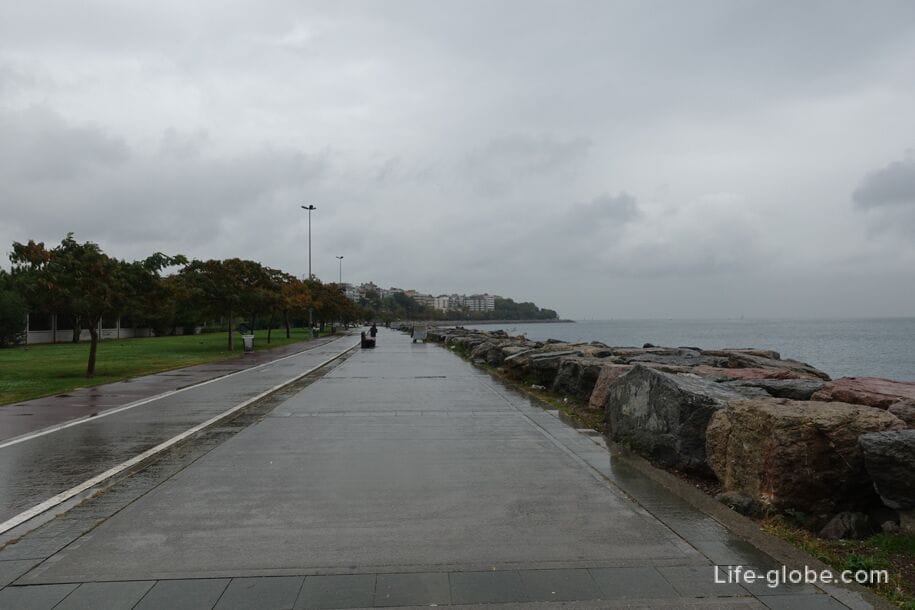
On the European side of Istanbul, near the Marmara Sea, the "Ataturk Seaside Pavilion in Florya" (Florya Ataturk Deniz Köşkü) is notable, which is the former mansion of the first President of Turkey, Ataturk.
Today this building is a historical house-museum, where furniture, dishes, personal belongings, as well as a collection of photographs of Ataturk taken at this place are presented. Website: florya-ataturk-deniz-kosku-nerede-nasil-gidilir-giris-ucreti.

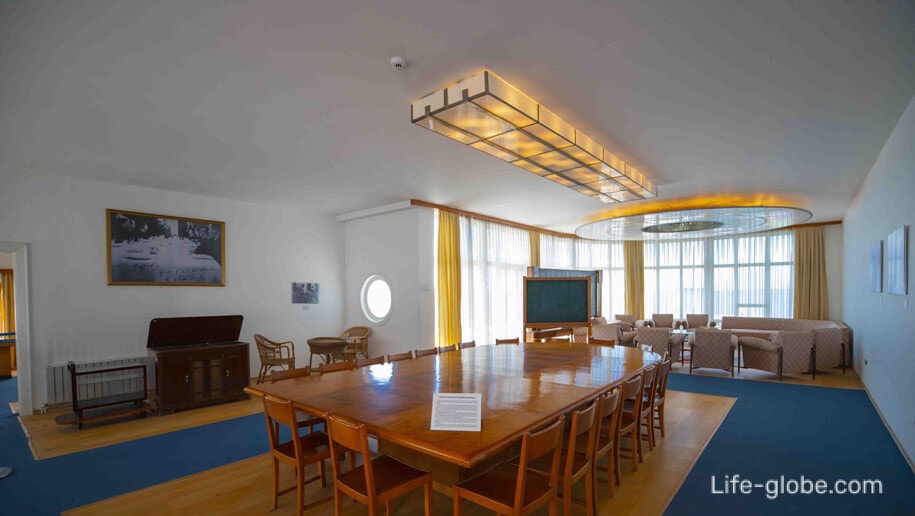
On the Asian outskirts of Istanbul near the Marmara Sea, the Viaport Marina Recreation and Entertainment Center is notable, where you can walk, relax, buy things, have fun and eat.
The complex includes: shopping areas, cafes and restaurants, an amusement park with American (Russian) slides, a water park, an aquarium, a small zoo, a bowling alley, a game center, a cinema and a marina.
The Crowne Plaza - Istanbul Tuzla Viaport Marina, an IHG Hotel with a restaurant, bar, fitness center, lounge and 24-hour front desk is located on the territory of Viaport Marina. The room rate may include: breakfast or breakfast + dinner. Link to the hotel
Viaport Marina website: viaportmarina.com.

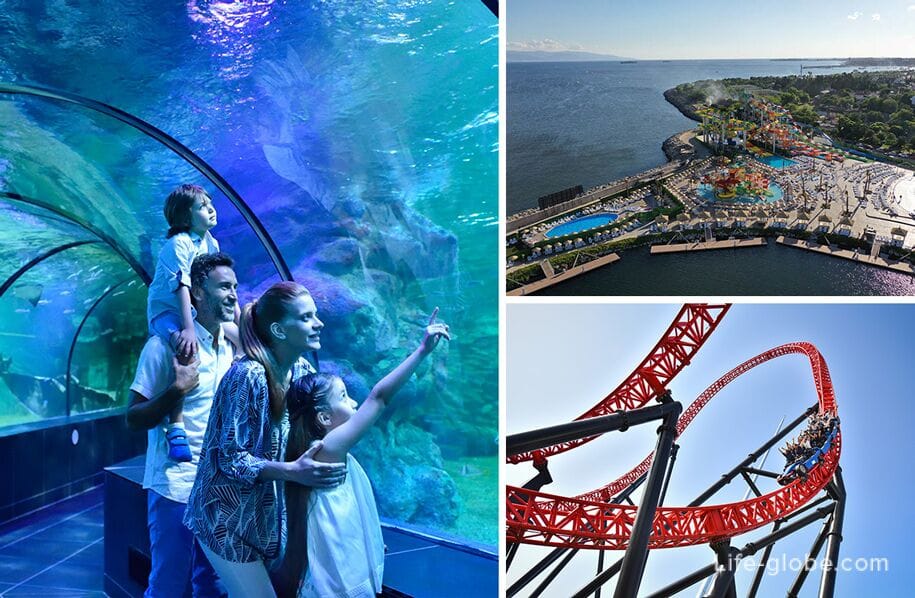
Remark! We really enjoyed walking on the Asian side of Istanbul, especially near the waters of the Bosphorus and the Sea of Marmara. After the noisy and crowded center of the European part of the city, the Asian side of Istanbul gives relaxation, silence and peace, where you rest your soul and body.
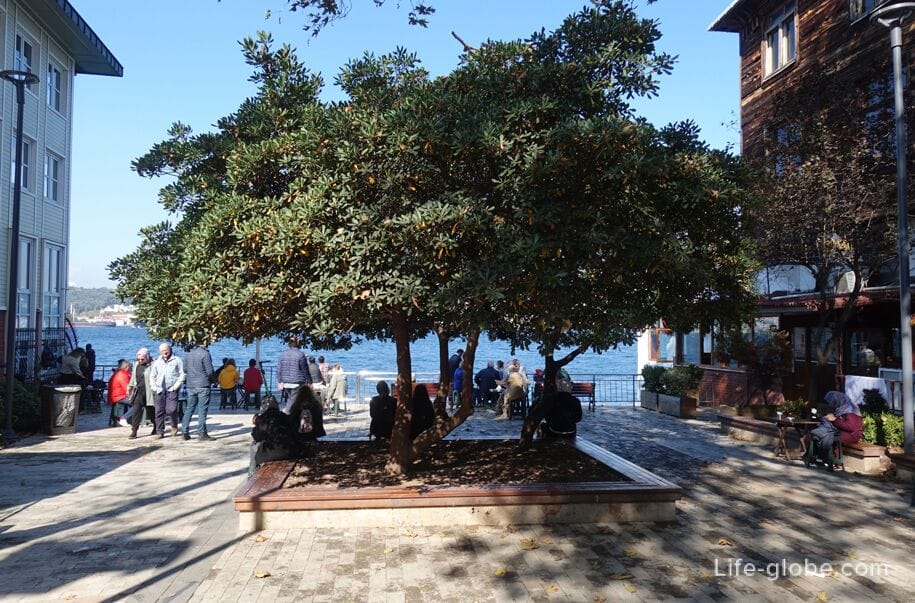

One of the highest and most impressive observation decks in Istanbul is located on the European side of the city, away from the main tourist attractions and it is necessary to go to it. However, it is worth it, because from the observation deck there are magnificent panoramic views - the whole of Istanbul is at a glance.
The observation deck is located in the famous skyscraper of Istanbul - "Sapphire" (Istanbul Sapphire AVM), which also houses a shopping center.
The Sapphire observation deck is located on the top - 54th floor of a skyscraper, at an altitude of 236 meters. This 360-degree observation deck (Sapphire Observation Terrace 360°) gives stunning panoramic views of Istanbul.
Entrance to the shopping center is free (free). The ascent to the observation deck is paid, through the shopping center.
Sapphire's address: Emniyetevleri Mh. Eski Büyükdere Cd. No:1 Kağıthane-Istanbul. Learn more about the Sapphire and the viewing...

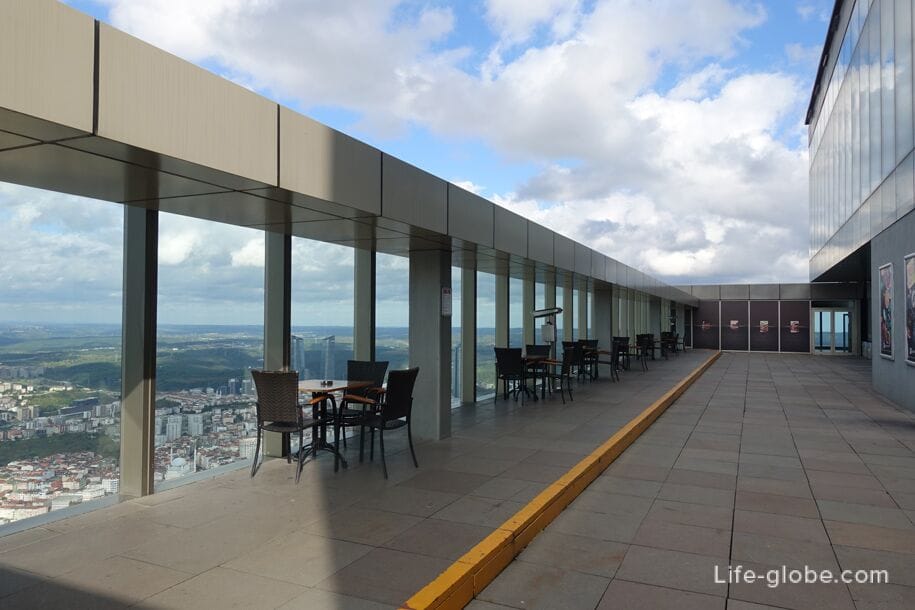
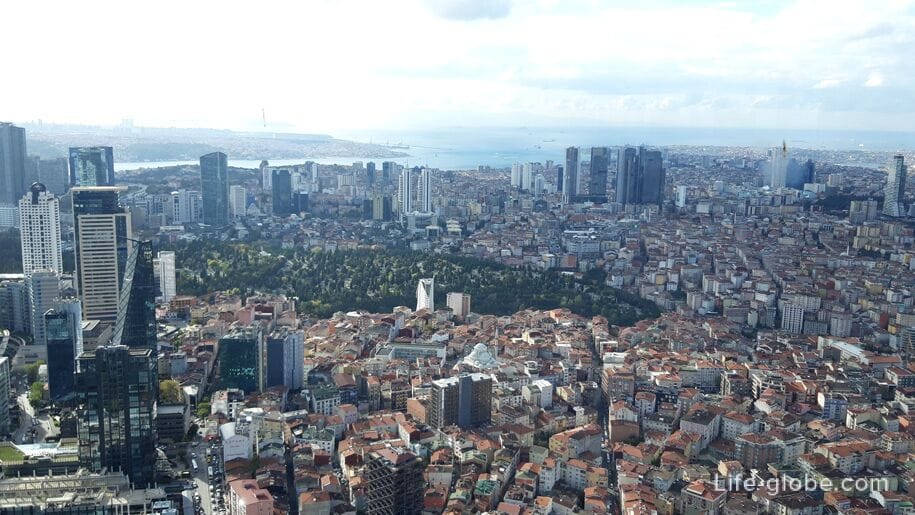
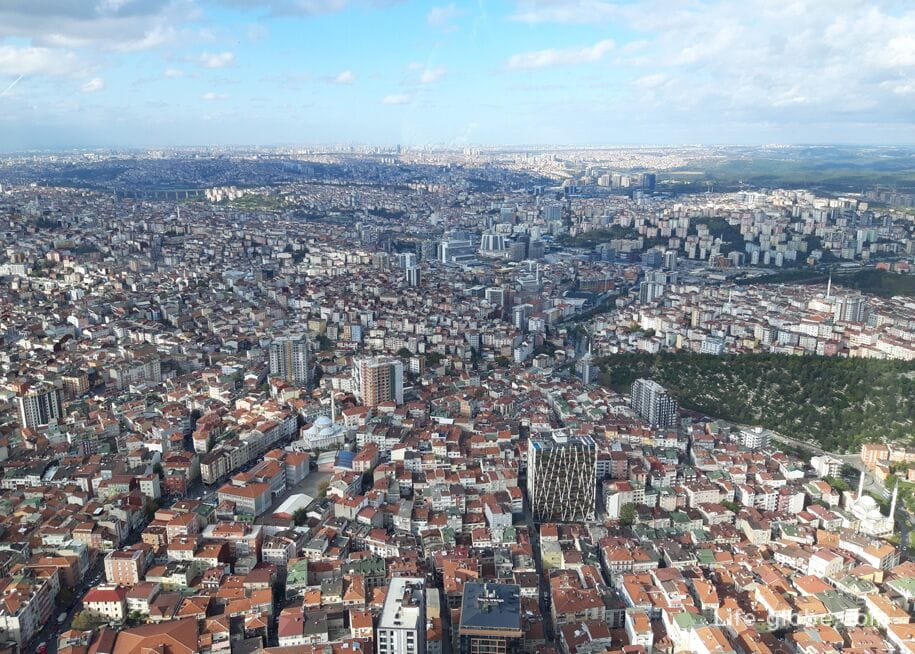
For families with children, in addition to the parks, museums and beaches listed above, in Istanbul you can visit:
- Isfanbul Theme Park (isfanbul Theme Park);
- Istanbul Aquarium (Istanbul Akvaryum);
- Istanbul Dolphinarium;
- Extreme Aventures Theme Park (Xtrem Aventures Istanbul);
- Aqua Club Dolphin Water Park;
- Museum of Classic Cars (Ural Ataman Klasik Otomobil Müzesi);
- Aviation Museum (Istanbul Hava Kuvvetleri Müzesi);
- Pelit Chocolate Museum (Pelit çikolata müzesi);
- Toy Museum (Istanbul Oyuncak Müzesi), etc. Read more "To Istanbul with children"...
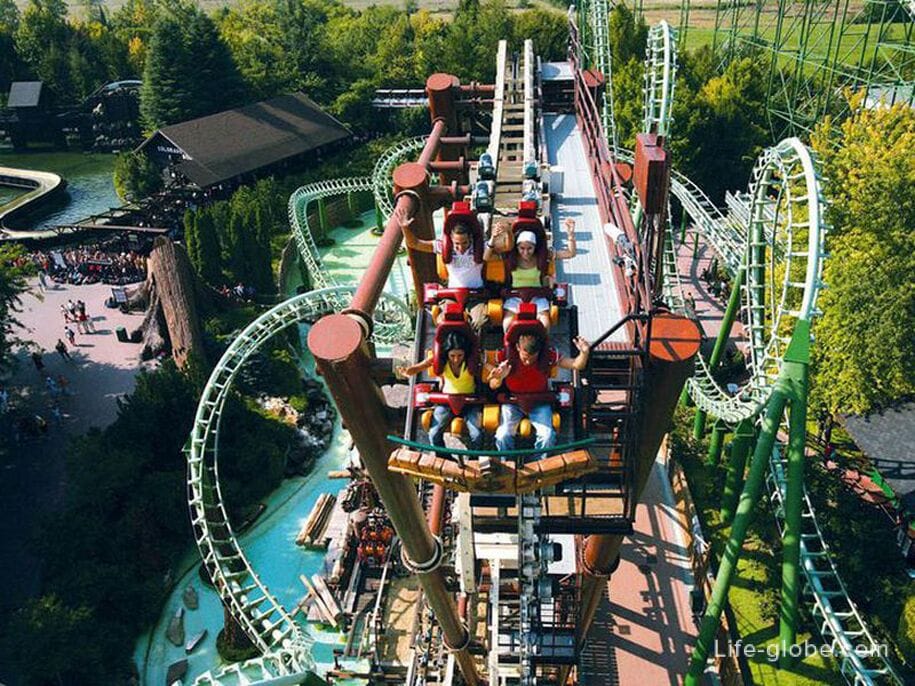
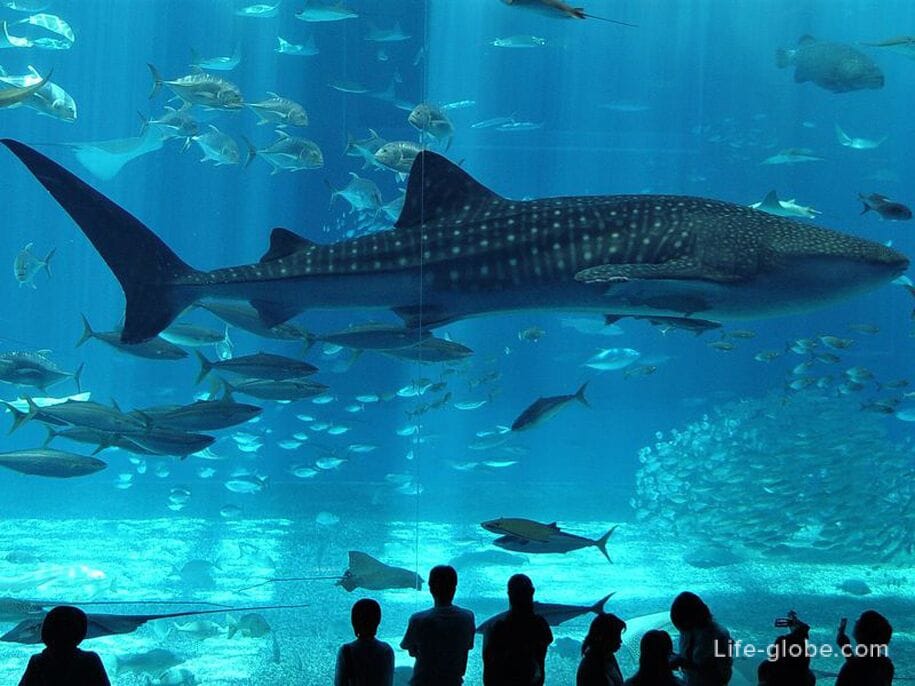

When you have already fully enjoyed the grandeur and diversity of the city, Istanbul can be a good starting point for traveling, both in the surrounding area and more remote places from the city, and throughout Turkey. Learn more about where to go from Istanbul...
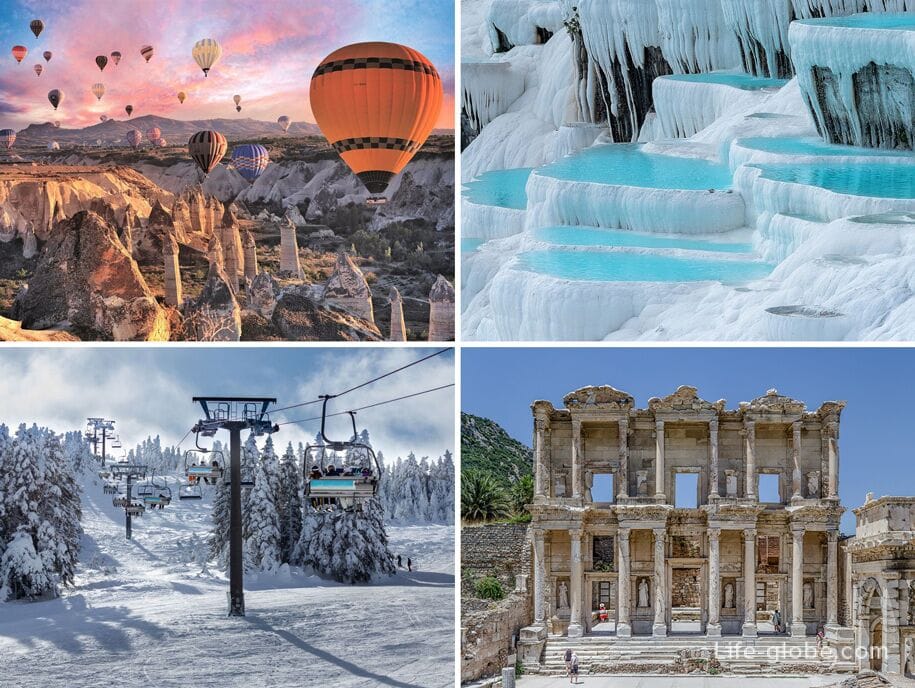
Some palaces, museums and sites in Istanbul have museum and tourist maps.
There are different types of maps in Istanbul. Some of which give the right to visit certain museums, while others, in addition to the main museums, include excursions, as well as some shows and entertainment, public transport rides and discounts on airport transfers.
The classic and most common is the museum card "Museum Pass Istanbul" (Museum Pass Istanbul), which gives the right to enter some museums of the city. There are also more extended Istanbul E-Pass and Istanbul Tourist Pass cards, which give the right to visit museums, attractions, guided tours, an aquarium, shows, cruises along the Bosphorus, trips outside the city, etc.Learn more about museum and tourist maps of Istanbul...
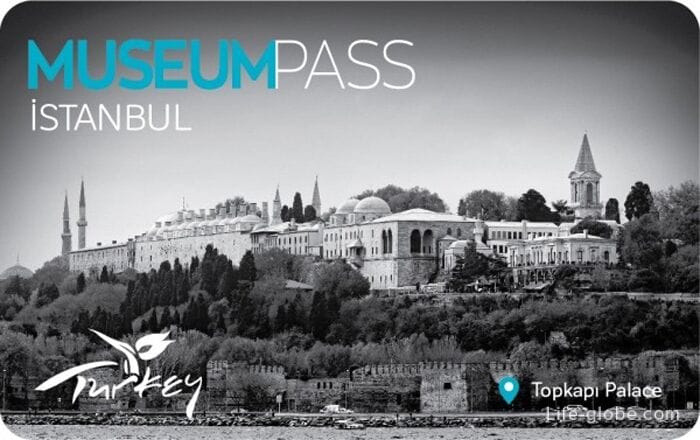
You can visit some of the main sights and museums of Istanbul by taking a tour on the Istanbul Hop-On Hop-Off tour bus.
There are tickets for 1, 2 or 3 days.
Tickets for the Istanbul sightseeing bus can be purchased here →
All accommodation facilities in Istanbul (hotels, apartments, houses, etc.), including in the historical center, in the European and Asian parts of the city, can be viewed and booked here
Rent a car in Istanbul (all places, including airports) →
Excursions to and from Istanbul →
Travel insurance for travelers →
Why don't we break down routes by day?!
We consider this form of information submission in large cities with an abundance of attractions and museums to be meaningless and uninformative. After all, everyone has their own pace of walking and recreation, their own preferences and tastes for visiting and visiting certain places and museums. When some visitors of the city go to the museum, others prefer to just walk through the streets. Therefore, where for some travelers the route needs to be divided, because they come in, and, accordingly, spend time on museums, parks and other places, other tourists pass them by - and, for them, the route for one day may no longer be enough.
Therefore, our readers determine for themselves the places to visit and build their own routes based on personal preferences and tastes, and we only give them informative tips and hints.